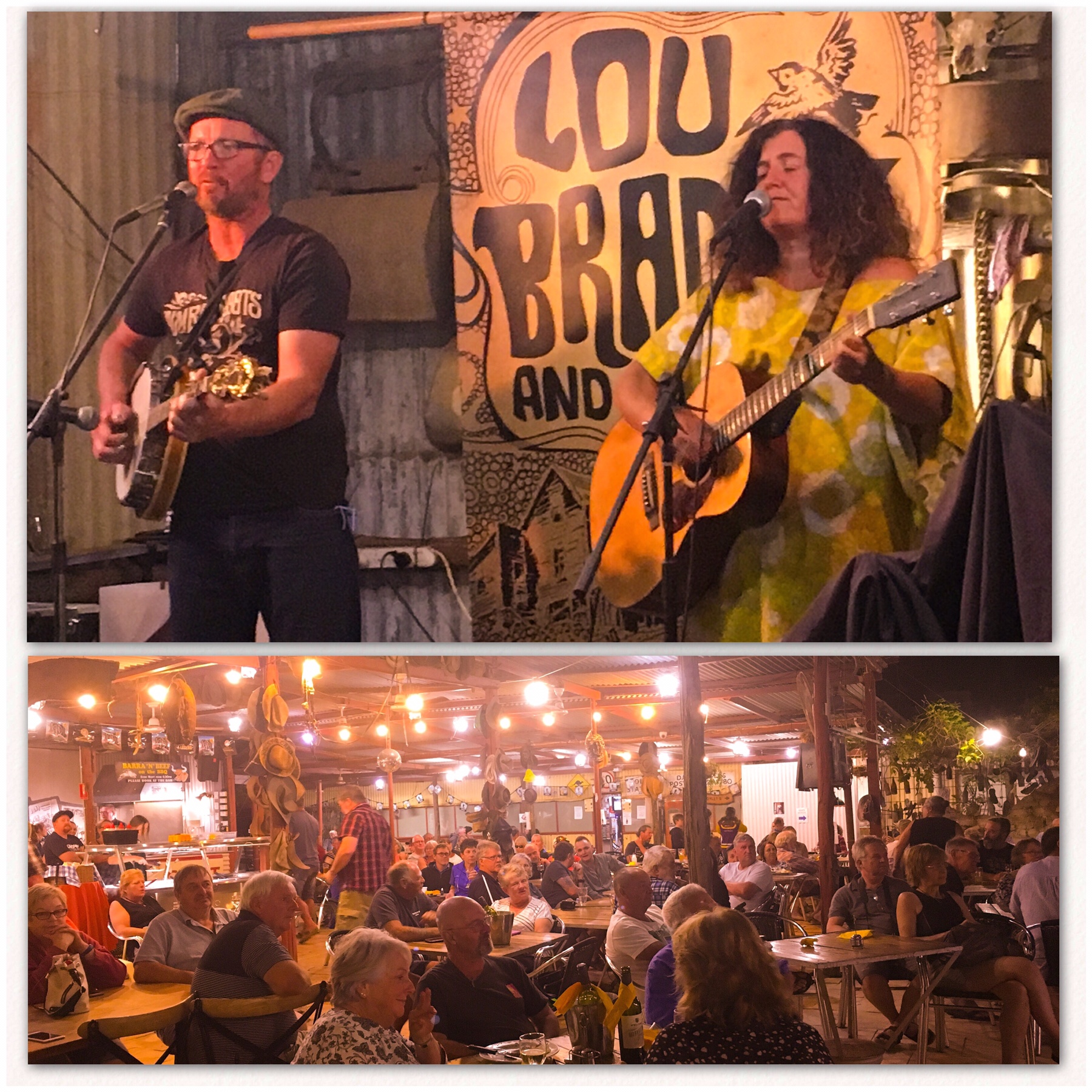Author: Mr A
Location: From Kings Canyon Resort to Redbank Gorge, West MacDonnell Ranges
Friday: We topped up with diesel just before leaving Kings Canyon Resort and I asked about the road conditions round the Menindee loop road to the West MacDonnell ranges. having had no internet for several days means we were reliant on a 10 year old copy of Lonely Planet…not so good. The young lady behind the counter said “I think its pretty bad, there’s lots of corru…corrug….what’s the word?” I filled in the word that she was struggling to remember…corrugations. She did though brightly volunteer we would need to purchase a pass to travel through the Aboriginal land the road goes through.
Not really knowing what to expect we set off, after a few kilometres of tarmac the road degenerated into a very bumpy track. Corrugated it certainly was. We let the tyre pressures down and I rechecked the suspension settings again. We set off and bounced our way along for several hours, only seeing a few other cars, one trailer being towed and no caravans.
 By mid morning Google was estimating we were still over 2 hrs from our planned lunch stop, and then…a miracle. We come round a bend to see two graders ponderously chugging up the road towards us, leaving in their wake a lovely smooth surface!
By mid morning Google was estimating we were still over 2 hrs from our planned lunch stop, and then…a miracle. We come round a bend to see two graders ponderously chugging up the road towards us, leaving in their wake a lovely smooth surface!
We waved our thanks to the drivers and “sped” off, the odd patch of sand still making the driving “interesting”. We were soon at our lunch destination, a fabulous lookout over an ancient comet crater.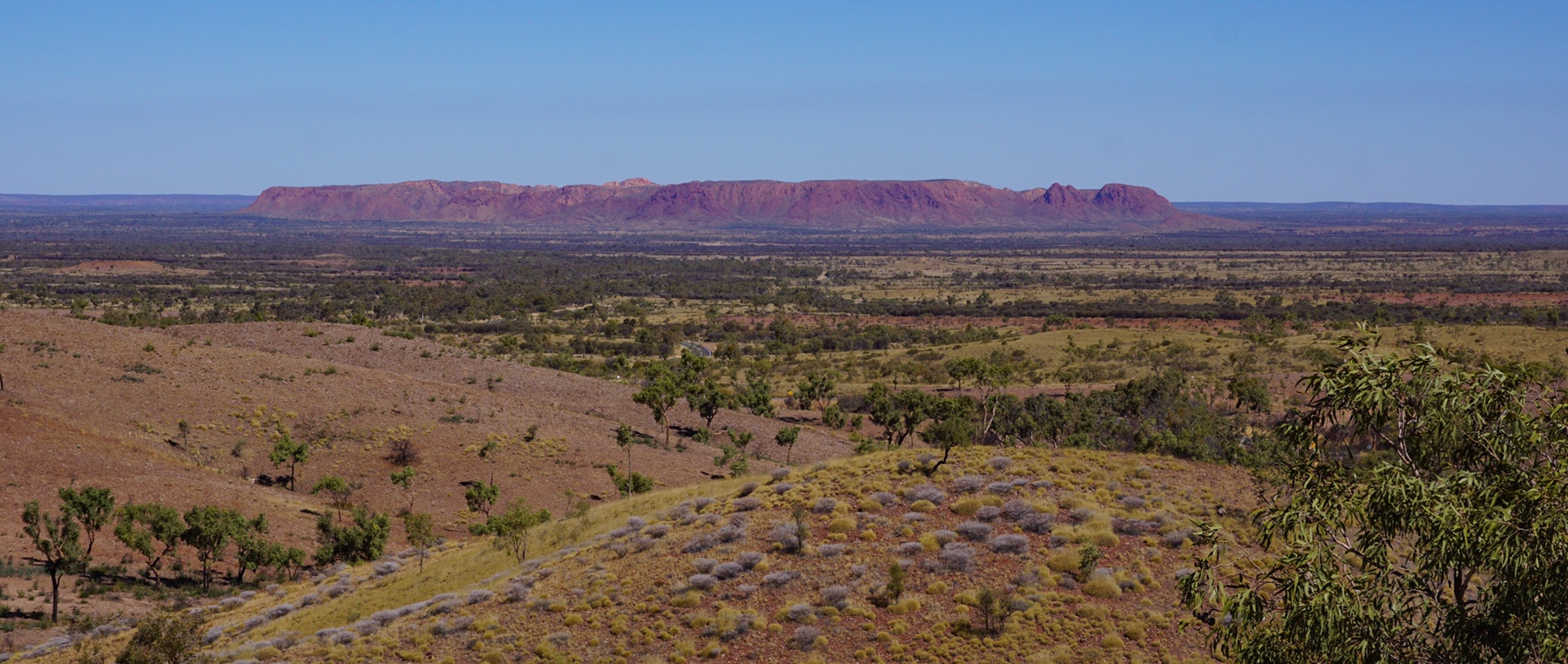 You wouldn’t have wanted to be around 400 million years ago when this bad baby hit earth. It was one of those views that we love in outback Australia – no sign of humans on the landscape for 360 degrees.
You wouldn’t have wanted to be around 400 million years ago when this bad baby hit earth. It was one of those views that we love in outback Australia – no sign of humans on the landscape for 360 degrees.
Back on tarmac now we made our destination for the night, Redbank Gorge, in time for a late afternoon walk.
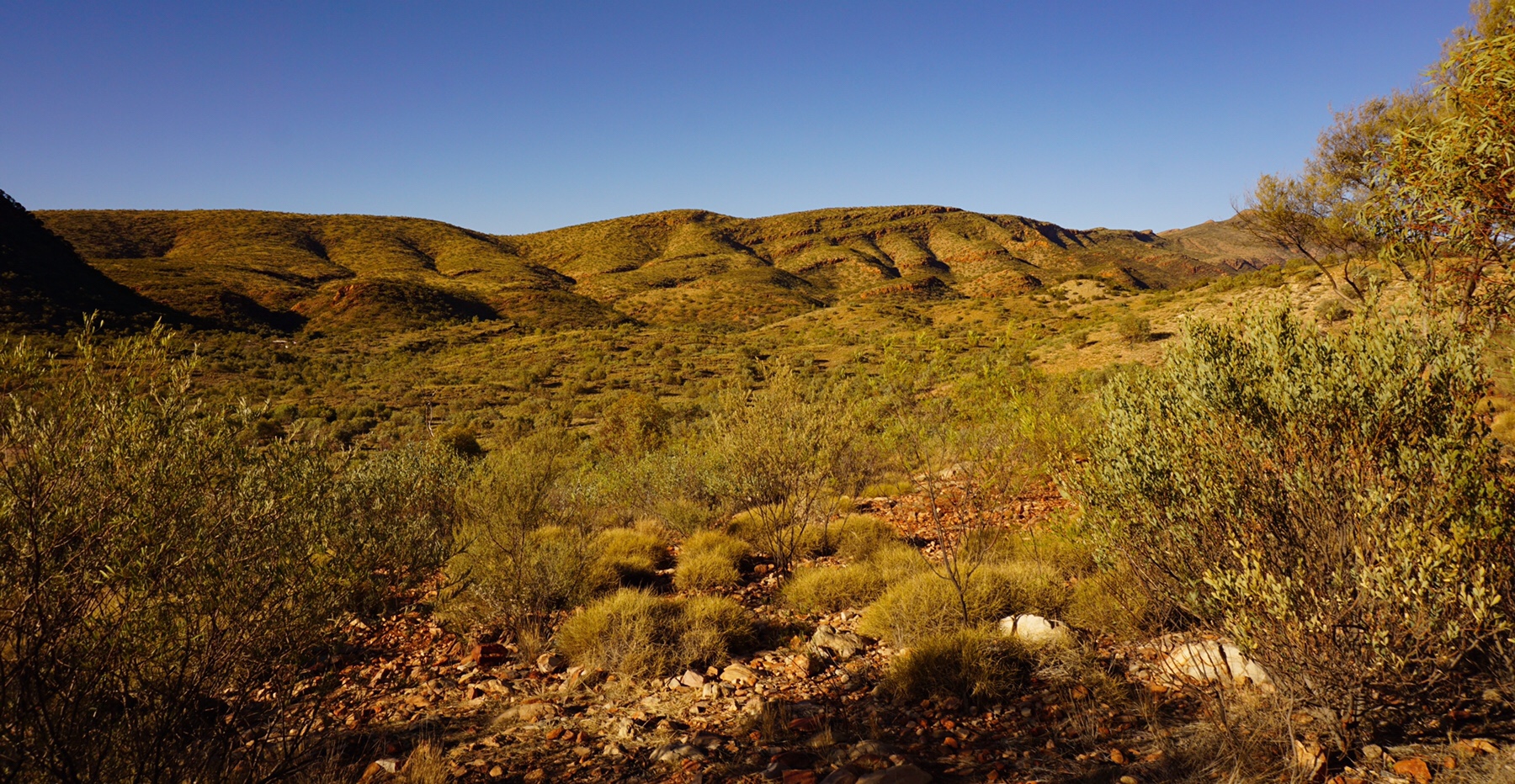 The Gorge is one of several in the West MacDonnell ranges, which spectacularly rise up out of the desert plain and stretch several hundred kilometres. We rocked up at was to be one of our prettiest campsites on this section of the trip, with views down into the gorge. We quickly unhitched and drove down the steep access road, parked up and hit the short trail into the gorge proper.
The Gorge is one of several in the West MacDonnell ranges, which spectacularly rise up out of the desert plain and stretch several hundred kilometres. We rocked up at was to be one of our prettiest campsites on this section of the trip, with views down into the gorge. We quickly unhitched and drove down the steep access road, parked up and hit the short trail into the gorge proper.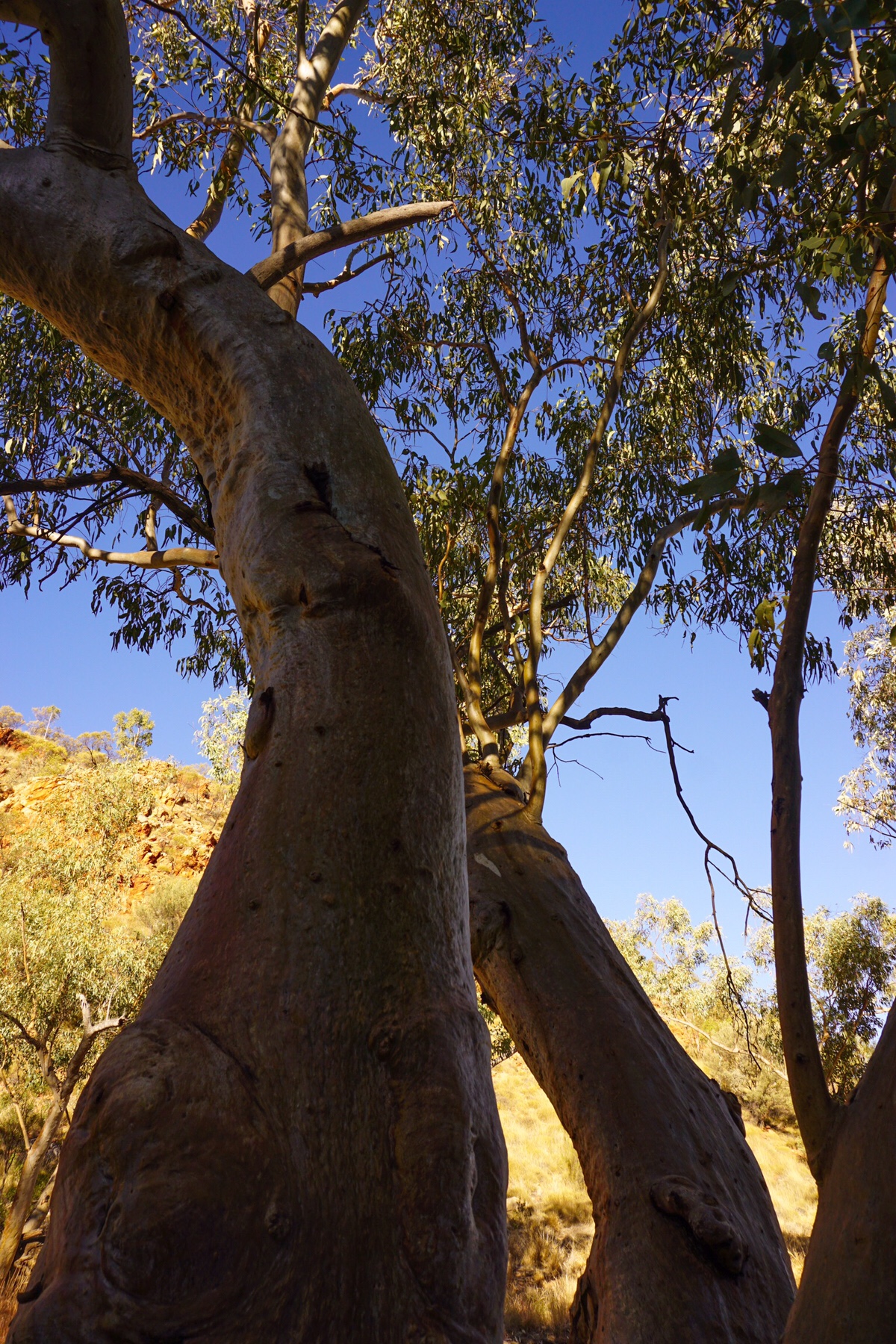
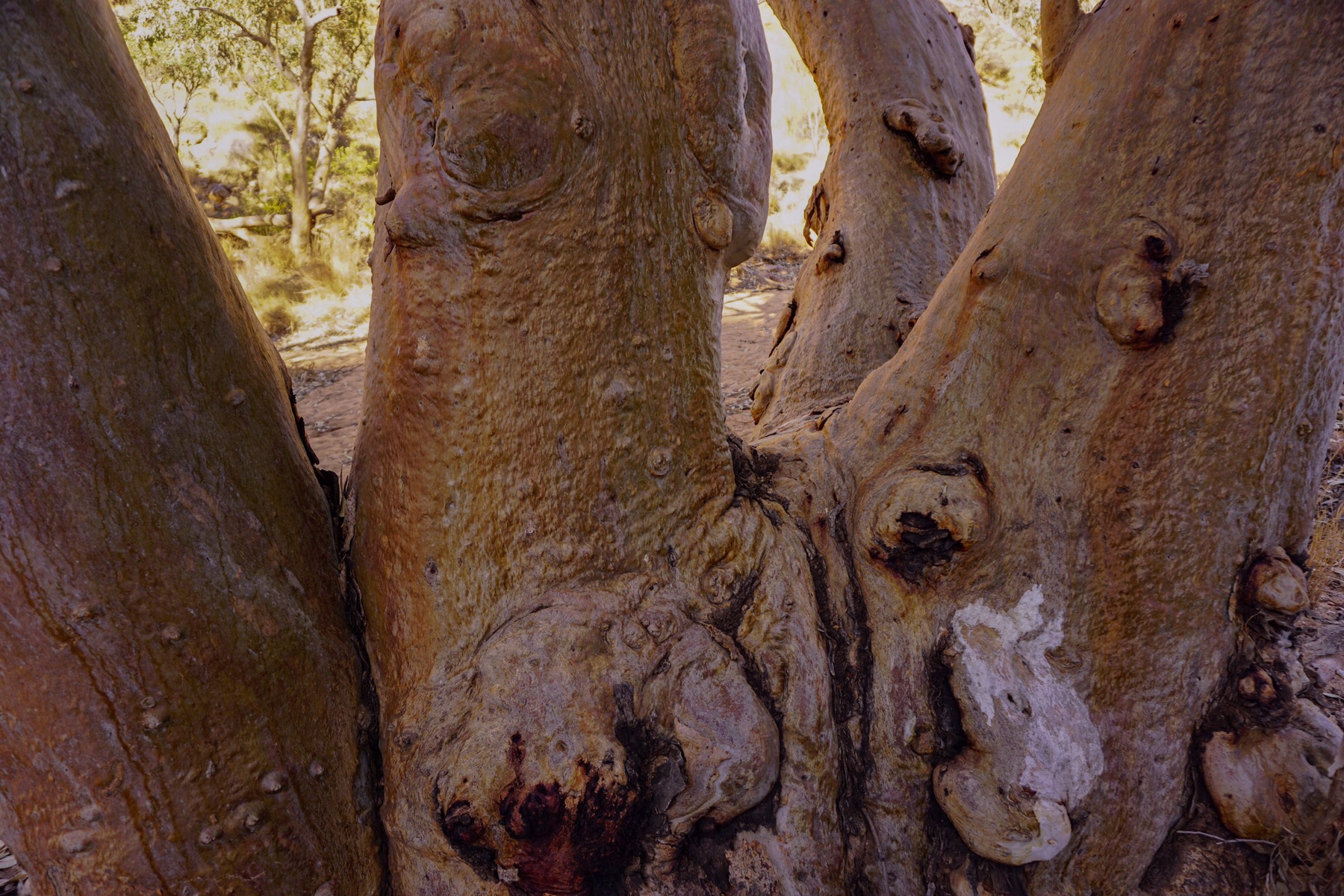
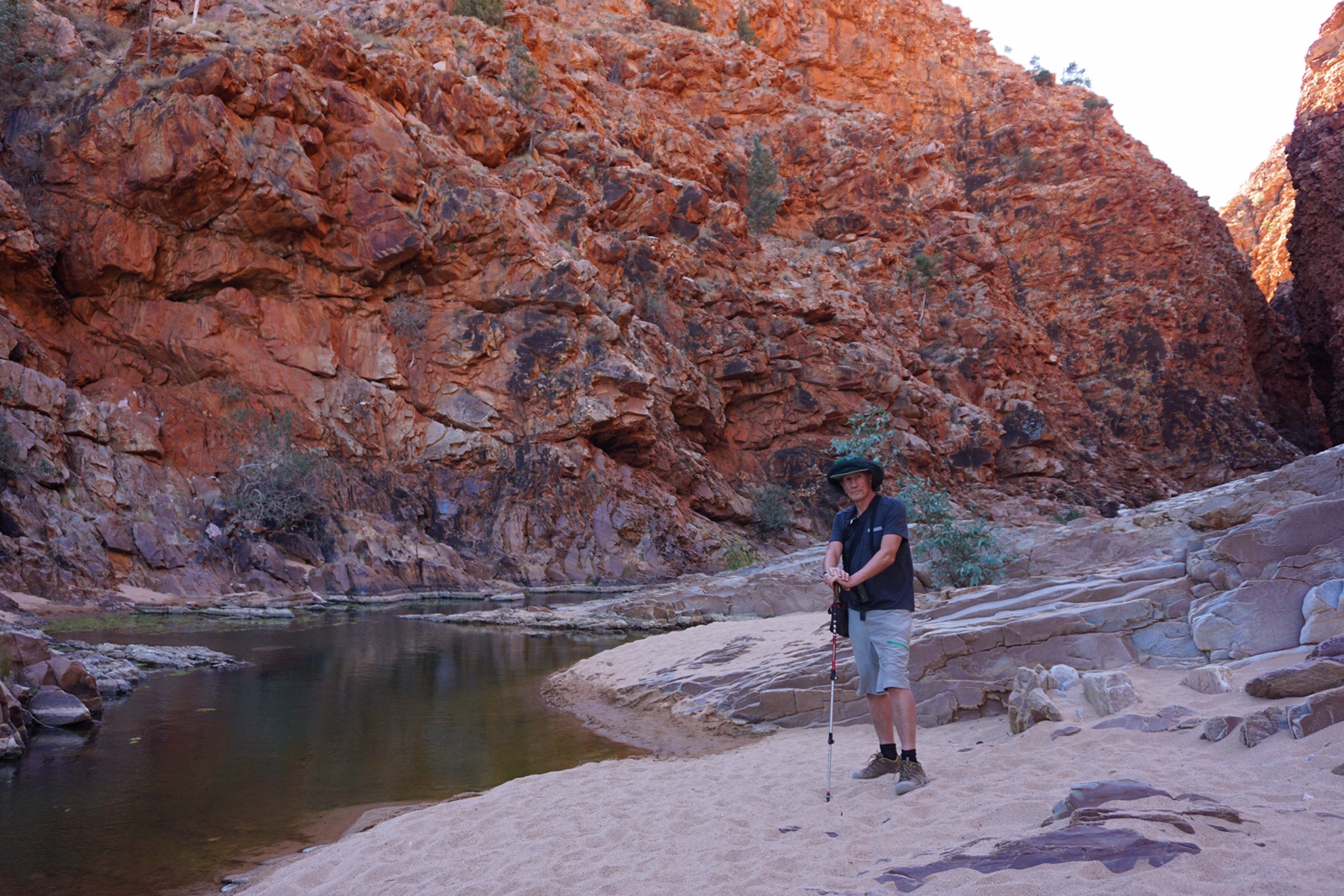 After a bit of rock scrambling we arrived at this little oasis, a pool of water in sharp contrast to the surrounding dry arid land. We spent a happy hour there watching the sun set fire to the walls of the gorge, then retraced our steps.
After a bit of rock scrambling we arrived at this little oasis, a pool of water in sharp contrast to the surrounding dry arid land. We spent a happy hour there watching the sun set fire to the walls of the gorge, then retraced our steps.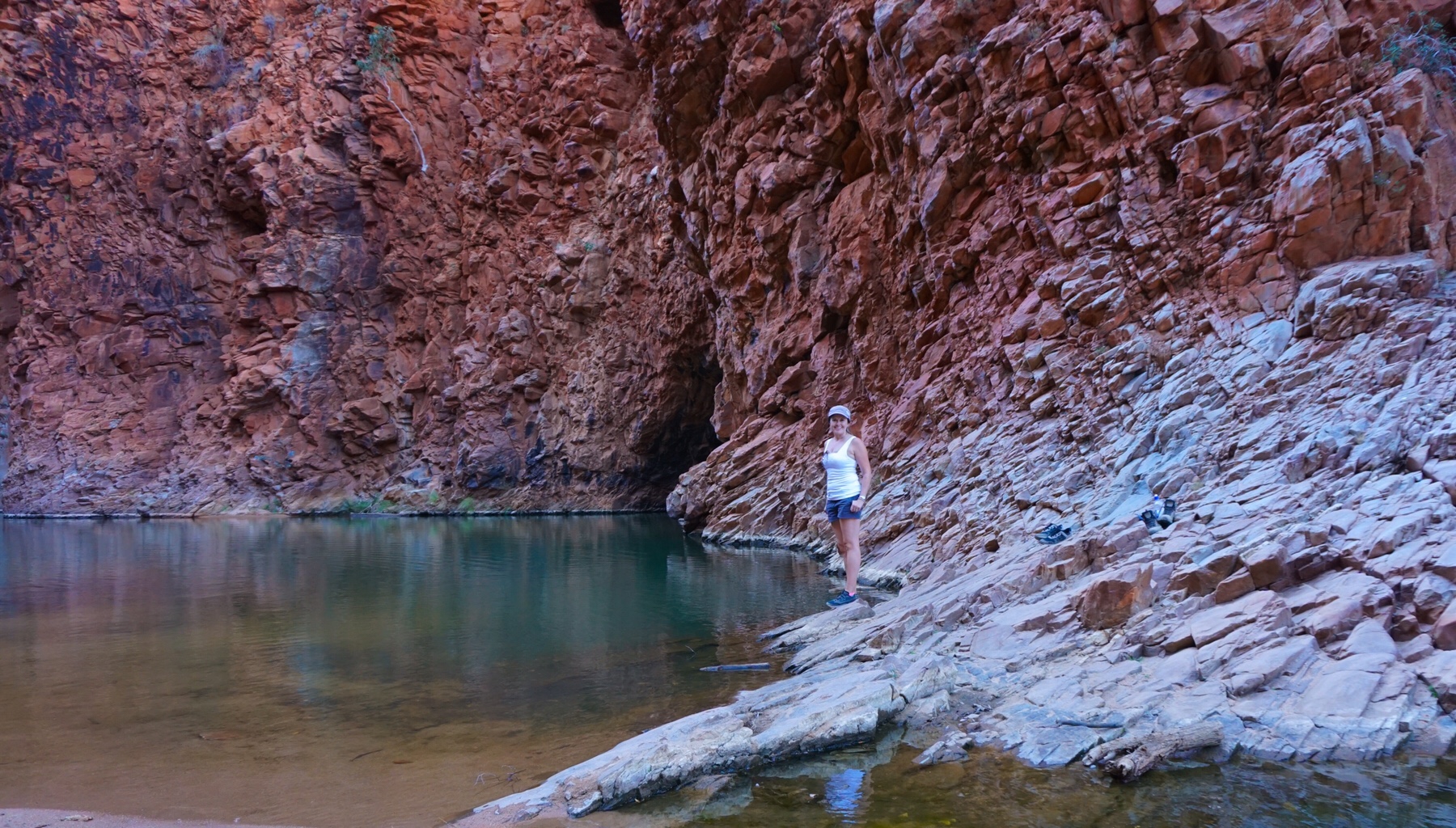
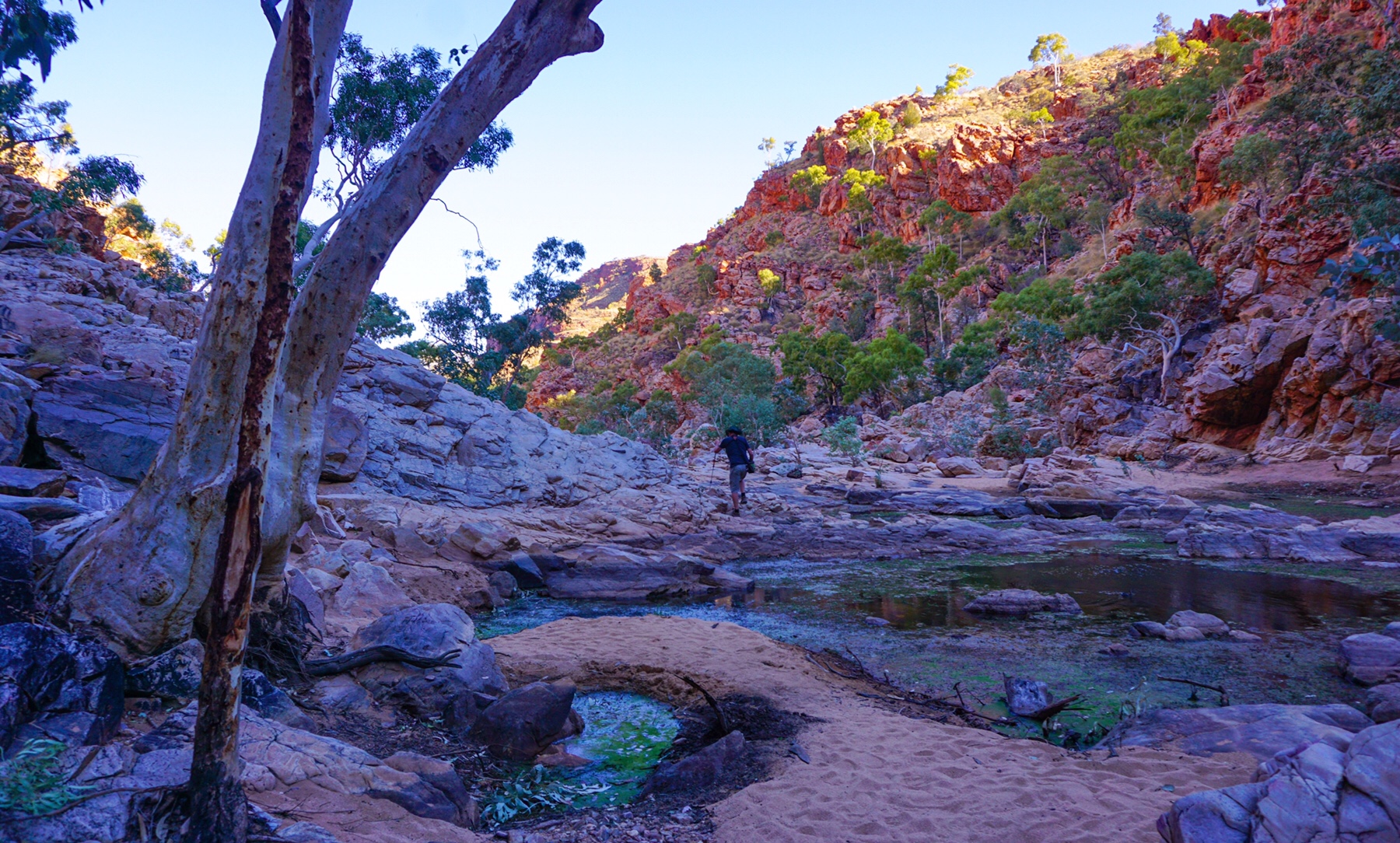
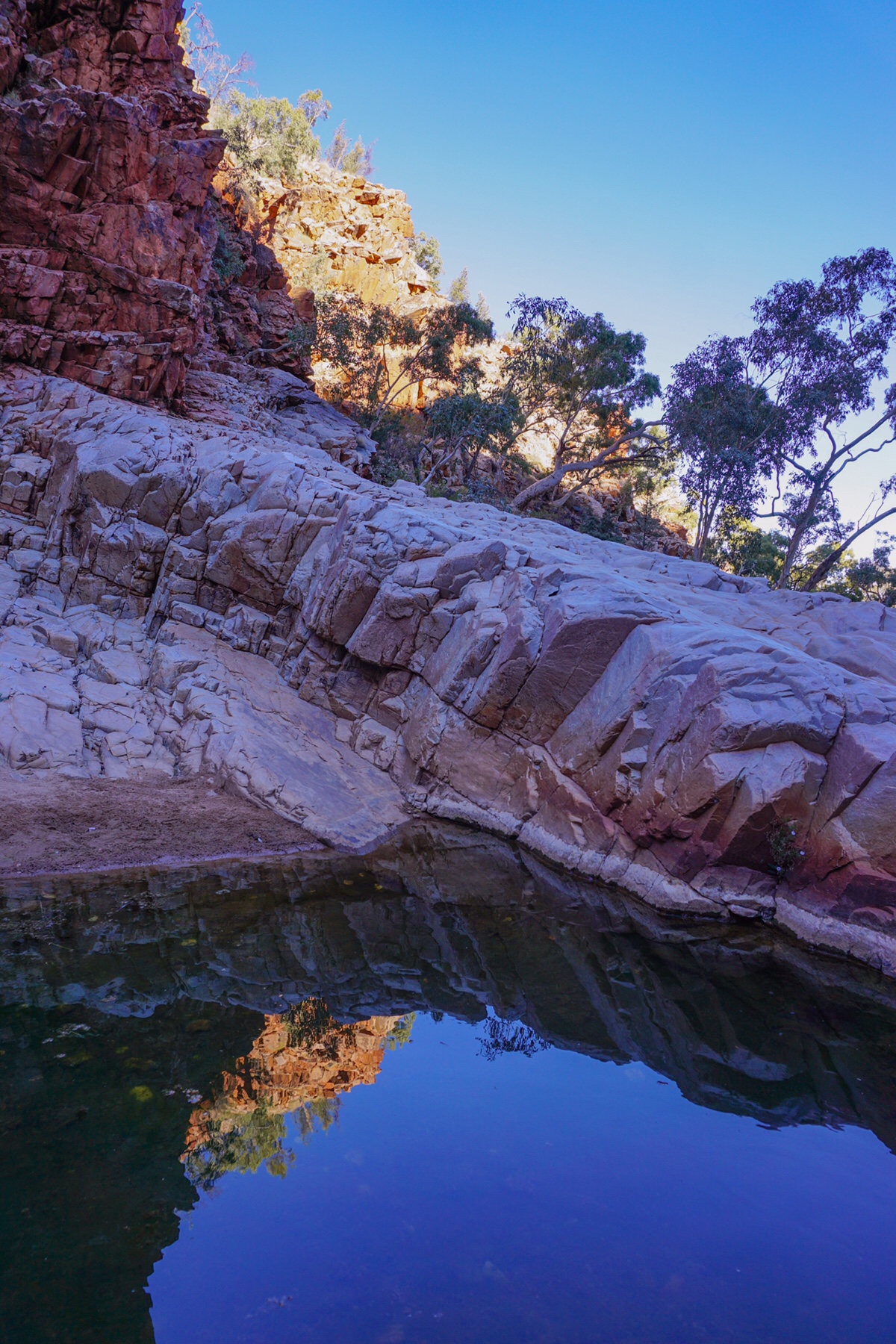 This was a view that demanded a decent glass of red, and we counted our blessings once again to be in the position to watch the sun go down on such a stunning outback vista.
This was a view that demanded a decent glass of red, and we counted our blessings once again to be in the position to watch the sun go down on such a stunning outback vista.
I wandered off to talk to our fellow campers and see if anyone had recently travelled the route we planned to take back to the east coast called the Plenty Highway. I got lucky, a couple had just come over on it last week, and had taken four days on what they described as “badly corrugated” track, espcially on the NT side of the border. Ah well, at least we know what we’re up for, as it is often hard to get a factual assessment. So many off-roaders like to puff out their chest and say “Its not bad mate”. This could mean anything from, ‘it is in fact pretty good (unlikely)’ to ‘it’s practically undriveable’.
You have got to admire the Australian way of minimising problems, the “She’ll be ‘right mate” philosophy, but when you are trying to get factual information to plan driving times it’s not helpful. This couple were very good, and detailed the type of road surface to expect on the different sections of the 650km of dirt we are to tackle in a couple of days time.
Mrs A and I then sat down with WikiCamps and made a few adjustments to our schedule!
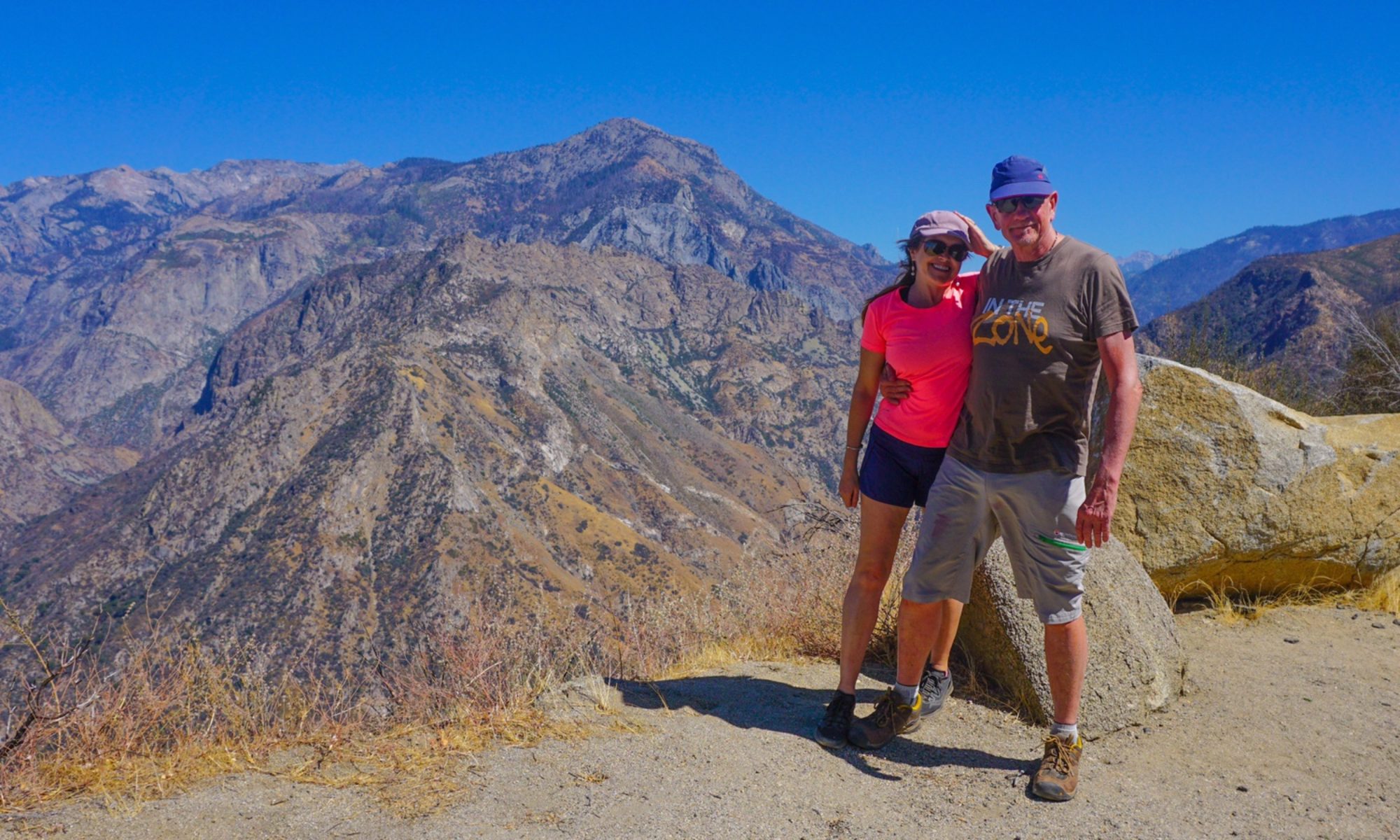
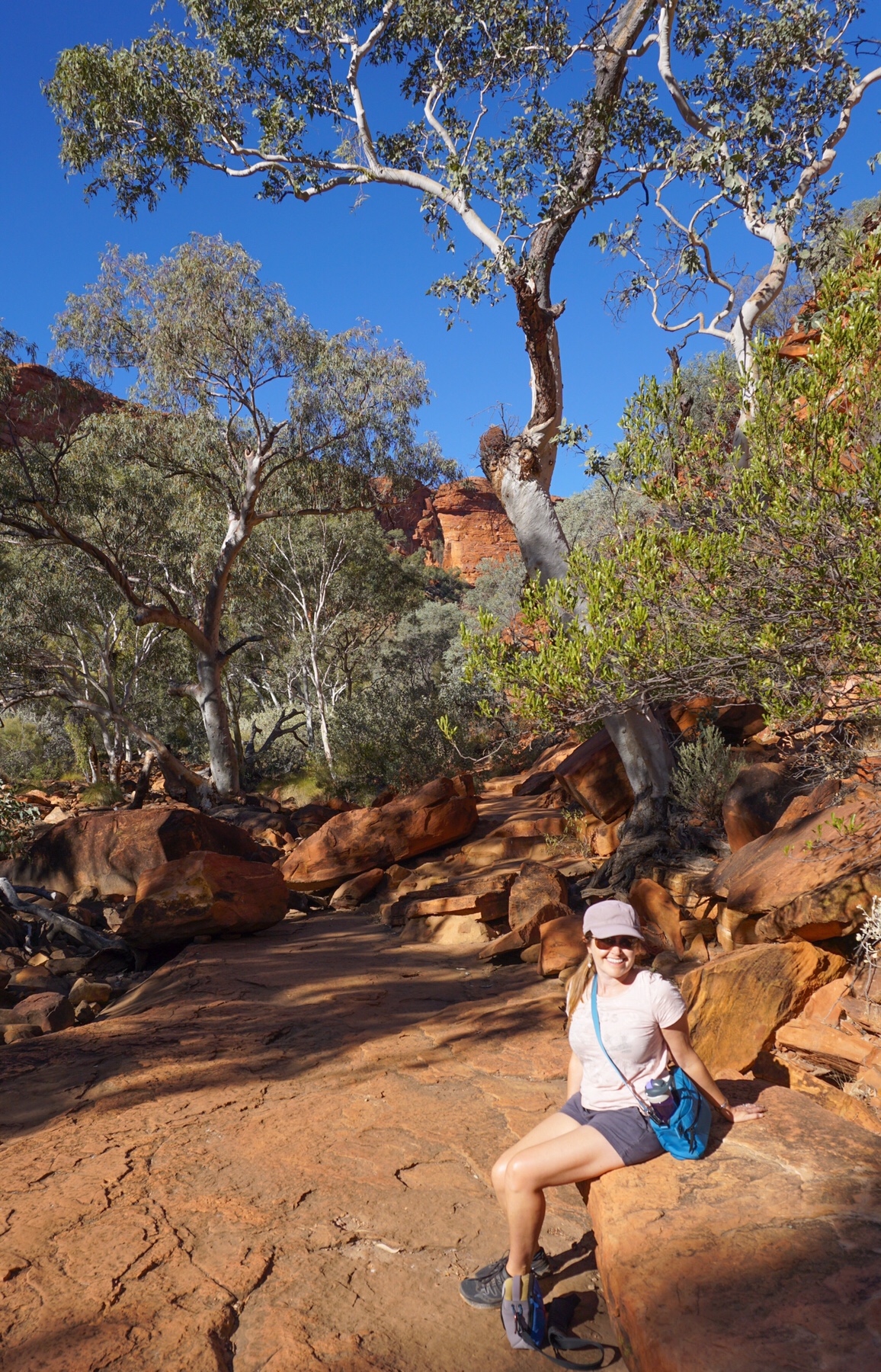
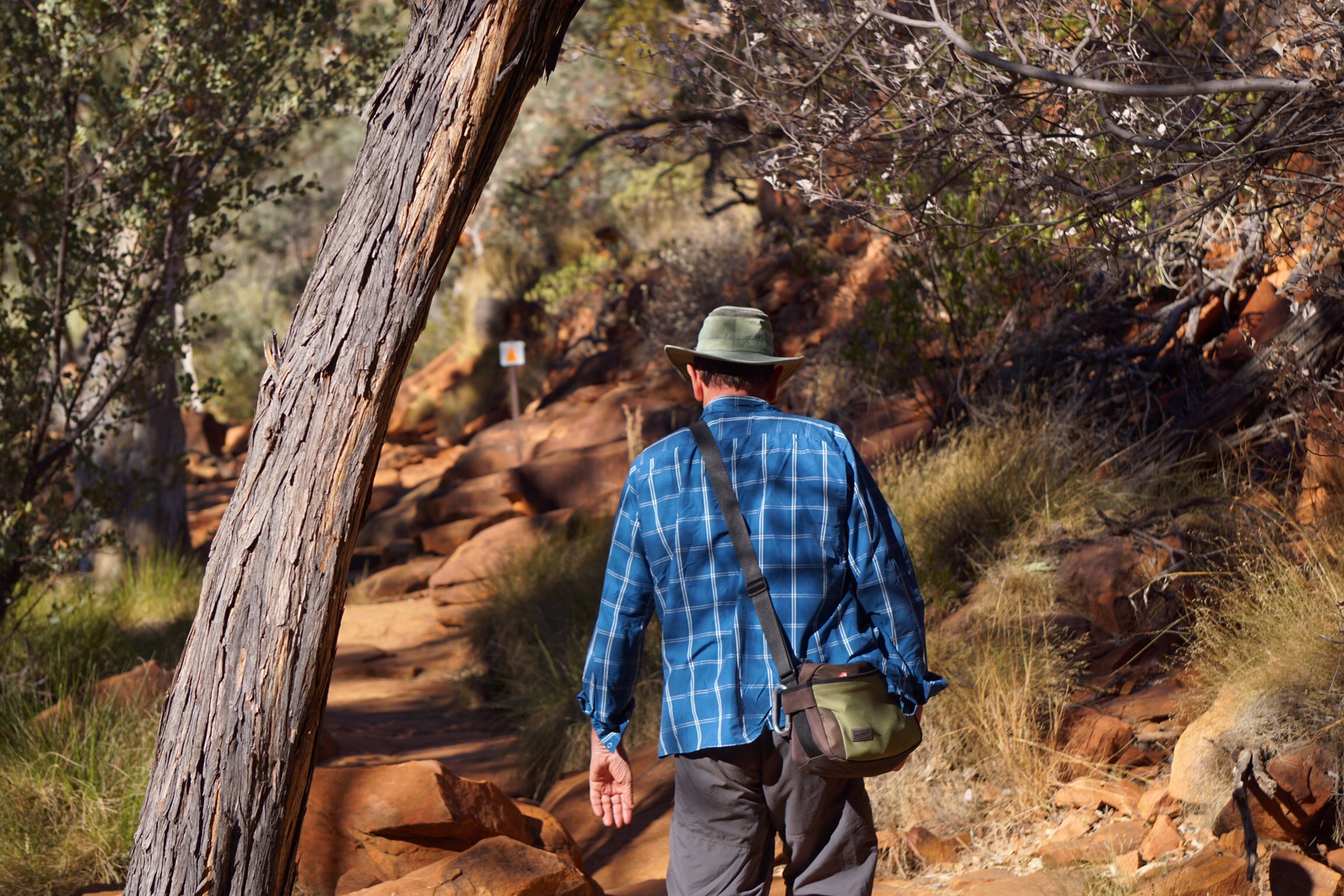
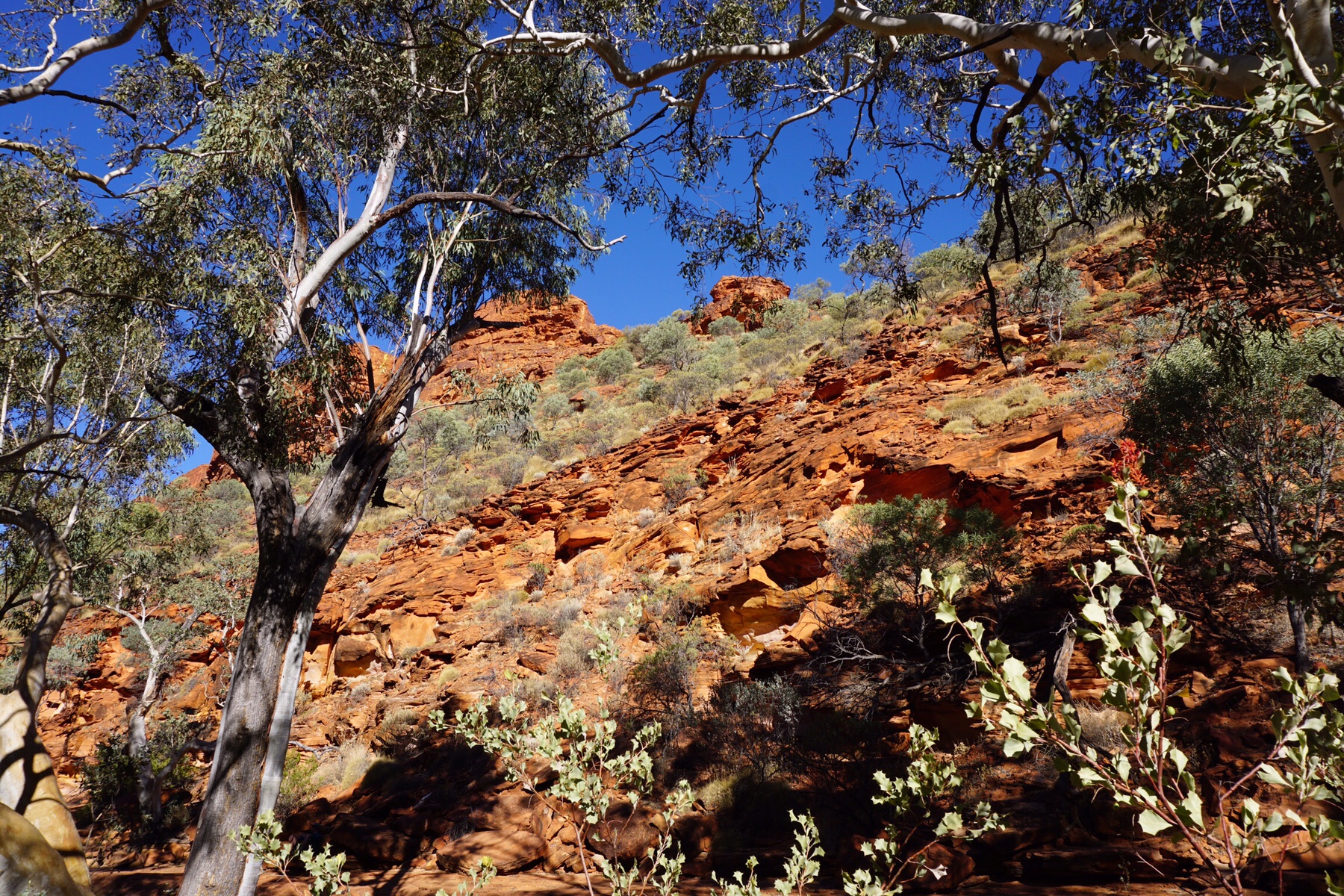 We opted for a short and peaceful walk along the dry King’s Creek, an informative track with several birds accompanying us, particularly this ever-so-cute Dusky Grasswren a perky little desert dweller that didn’t seem to mind hopping around the rocks near us.
We opted for a short and peaceful walk along the dry King’s Creek, an informative track with several birds accompanying us, particularly this ever-so-cute Dusky Grasswren a perky little desert dweller that didn’t seem to mind hopping around the rocks near us.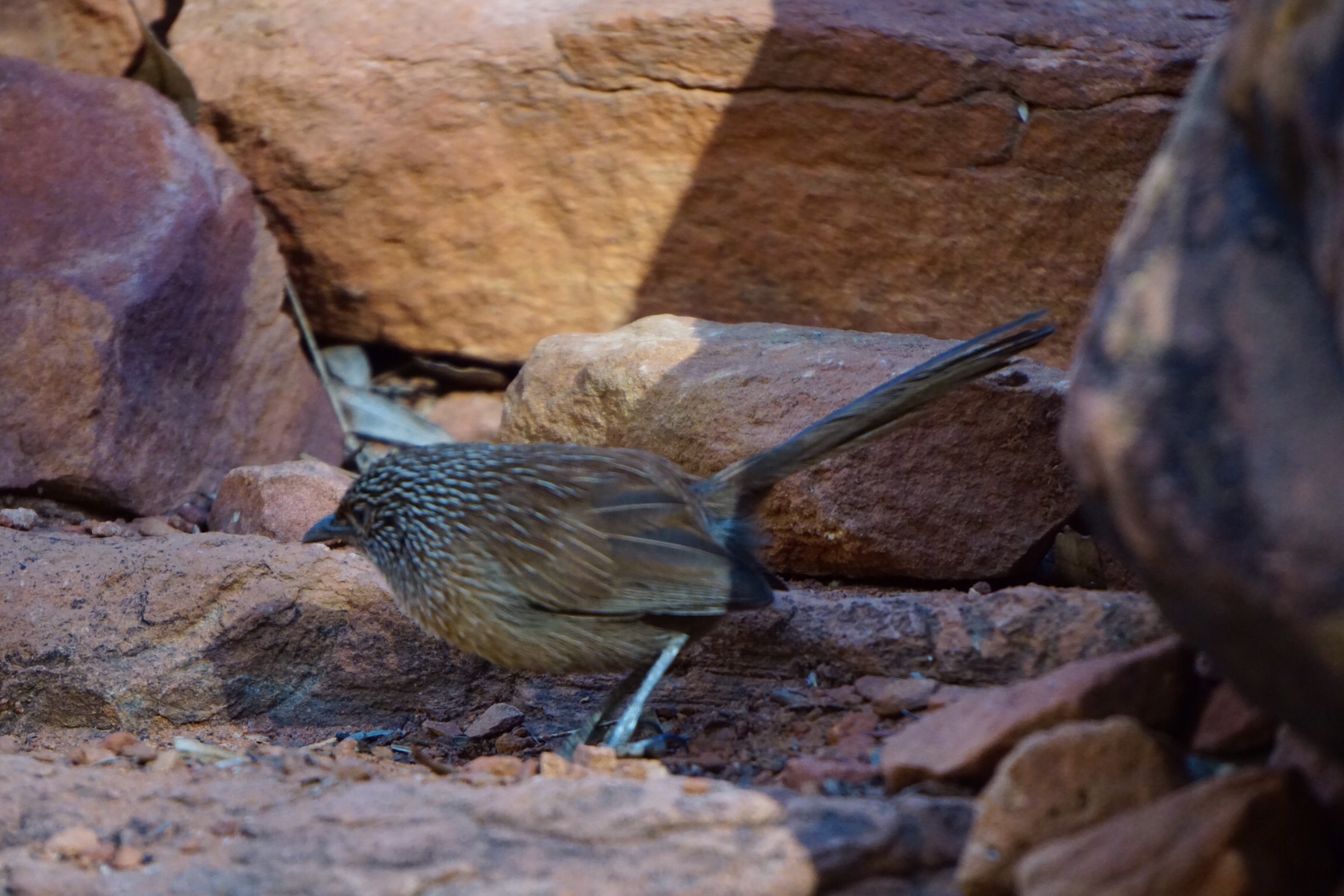 The national park is home to more than 600 species of plant, 10% of which are extremely rare and date back to the dinosaurs. This area has the highest diversity of fauna in any of Australia’s arid zones.
The national park is home to more than 600 species of plant, 10% of which are extremely rare and date back to the dinosaurs. This area has the highest diversity of fauna in any of Australia’s arid zones. The resort has a pub and restaurant so we decided to give it a try for dinner. Unlike so many places we have come across on this trip, this actually had a decent choice of beverages – including Fat Yak and our local Manly, Sydney tipple, Four Pines beer.
The resort has a pub and restaurant so we decided to give it a try for dinner. Unlike so many places we have come across on this trip, this actually had a decent choice of beverages – including Fat Yak and our local Manly, Sydney tipple, Four Pines beer.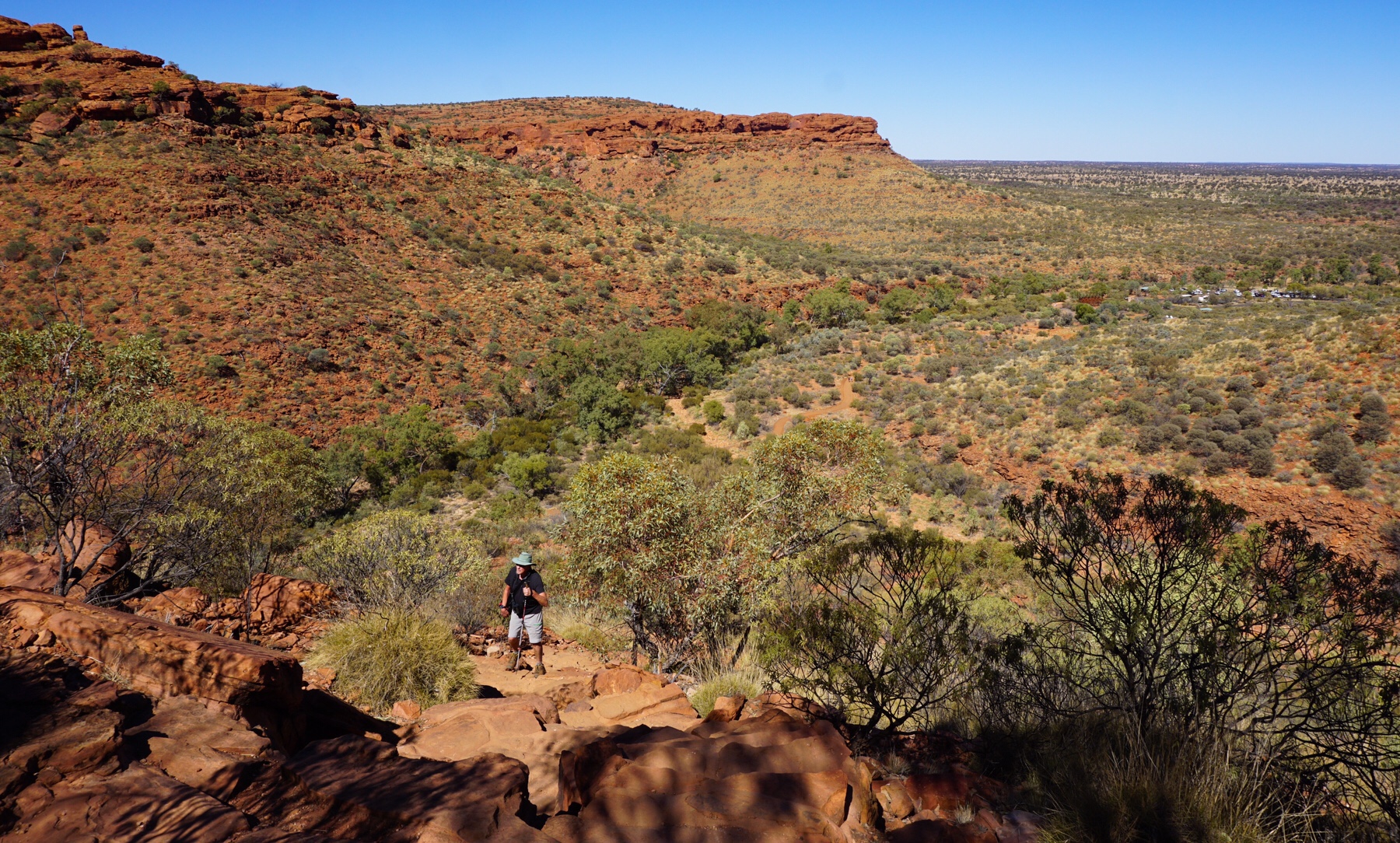 Once you’re up the top of the walls it all gets a lot friendlier, with a lot of red rock hopping over the ancient fossilised sand dunes and sea bed. There is plenty of evidence of the area’s distant past, with fossilised ripples in the rock (they call it ripple-rock, of course) and evidence of the layers of silica in the rock from the drifting sand dunes.
Once you’re up the top of the walls it all gets a lot friendlier, with a lot of red rock hopping over the ancient fossilised sand dunes and sea bed. There is plenty of evidence of the area’s distant past, with fossilised ripples in the rock (they call it ripple-rock, of course) and evidence of the layers of silica in the rock from the drifting sand dunes.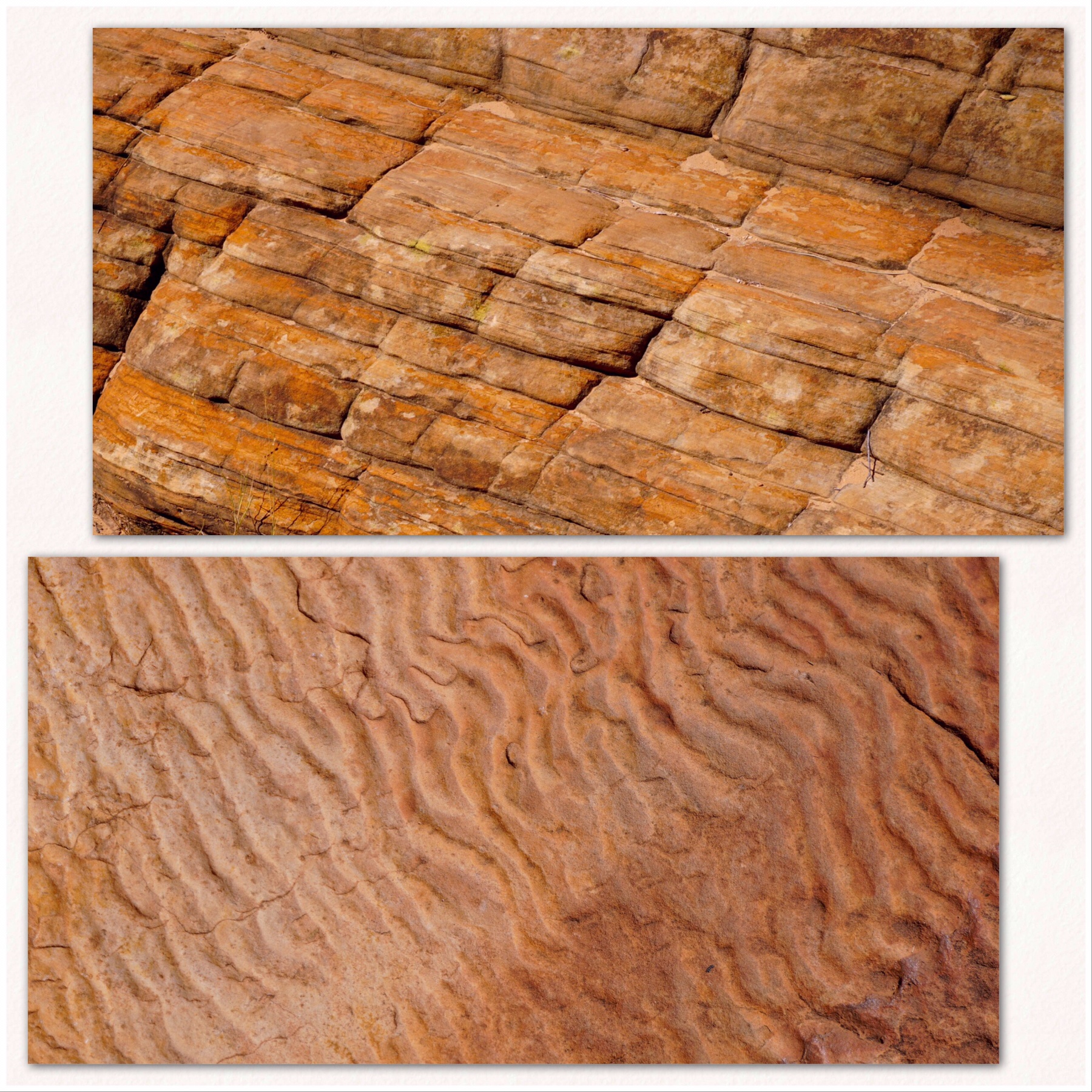 The landscape is unlike anything else, the beehive like structures stretching out into the horizon. I found it interesting to learn that the rock here is all actually bright white sandstone – the red comes from a fungi which grows on the rock and through a chemical reaction allows the red sands from the surrounding arid area to stick to it, hence creating the bright red colour which practically glows in the sunlight.
The landscape is unlike anything else, the beehive like structures stretching out into the horizon. I found it interesting to learn that the rock here is all actually bright white sandstone – the red comes from a fungi which grows on the rock and through a chemical reaction allows the red sands from the surrounding arid area to stick to it, hence creating the bright red colour which practically glows in the sunlight.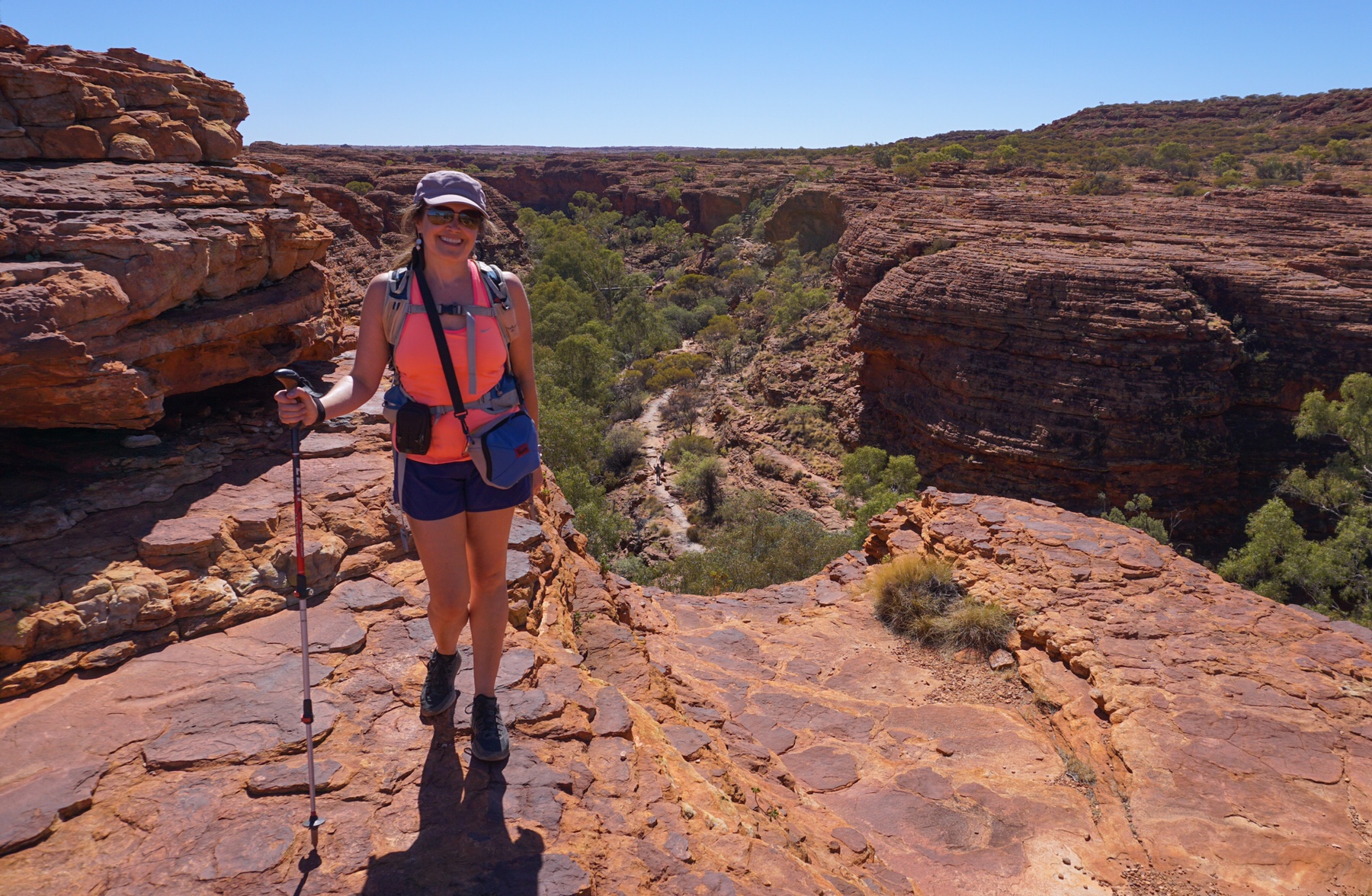
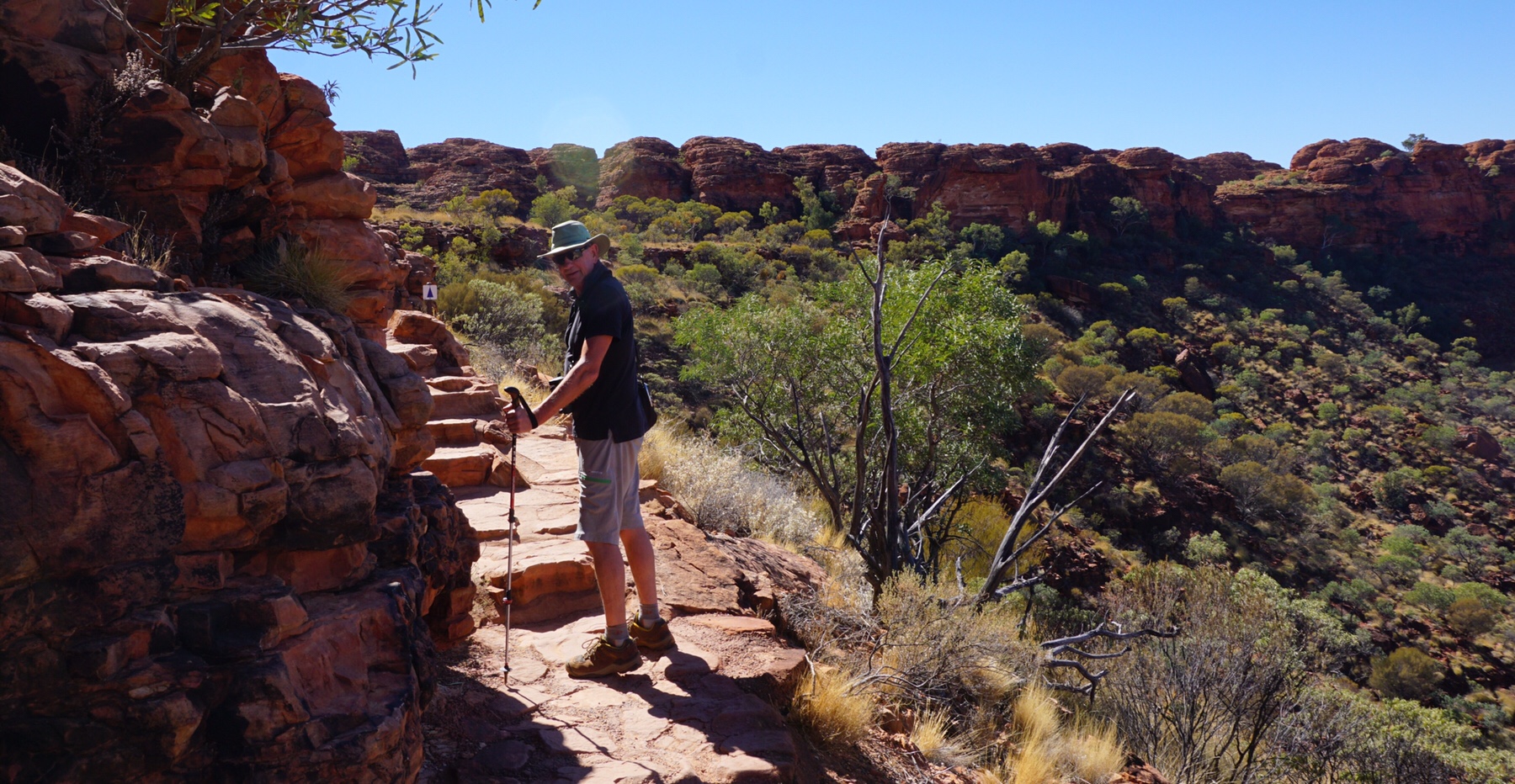
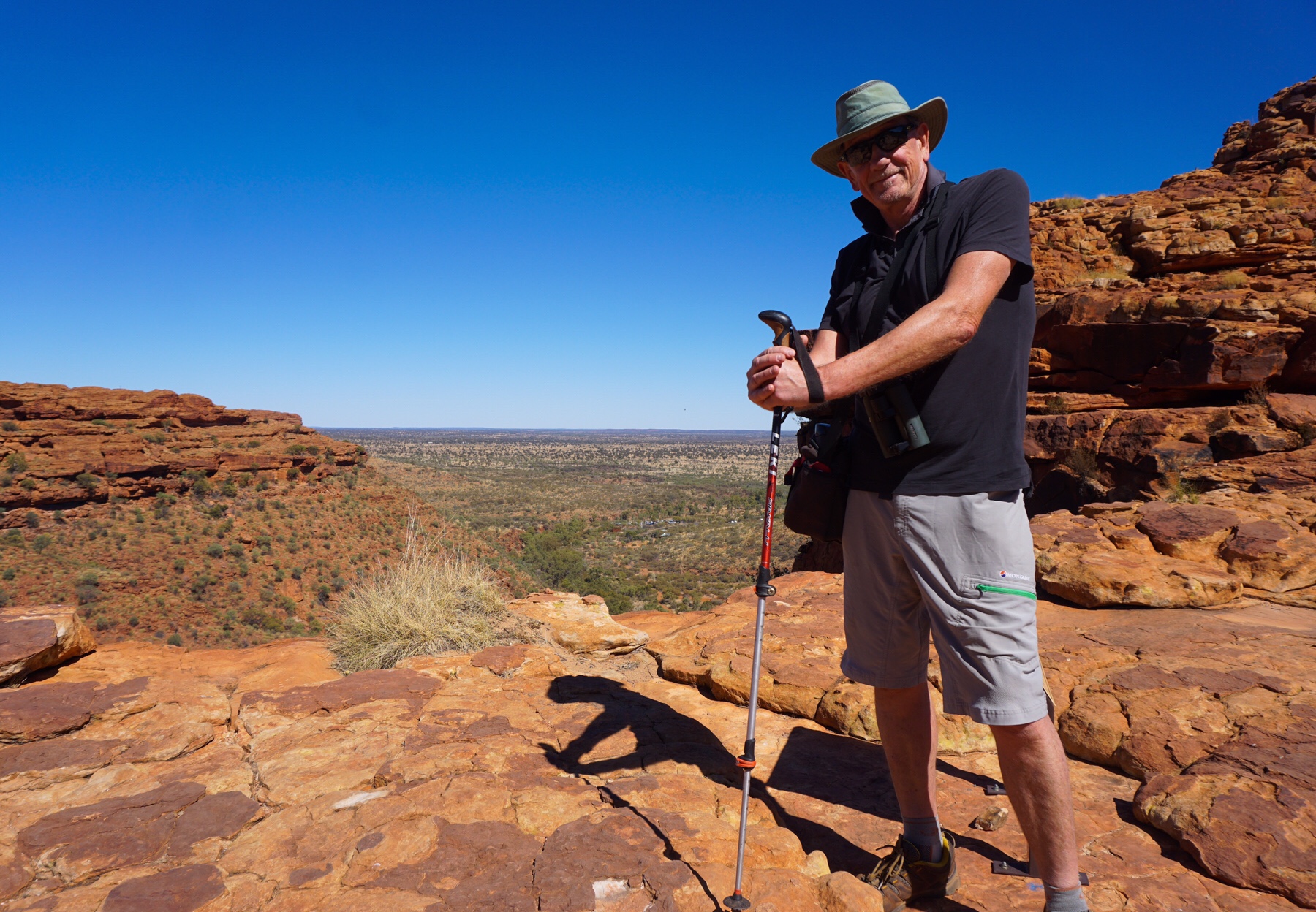
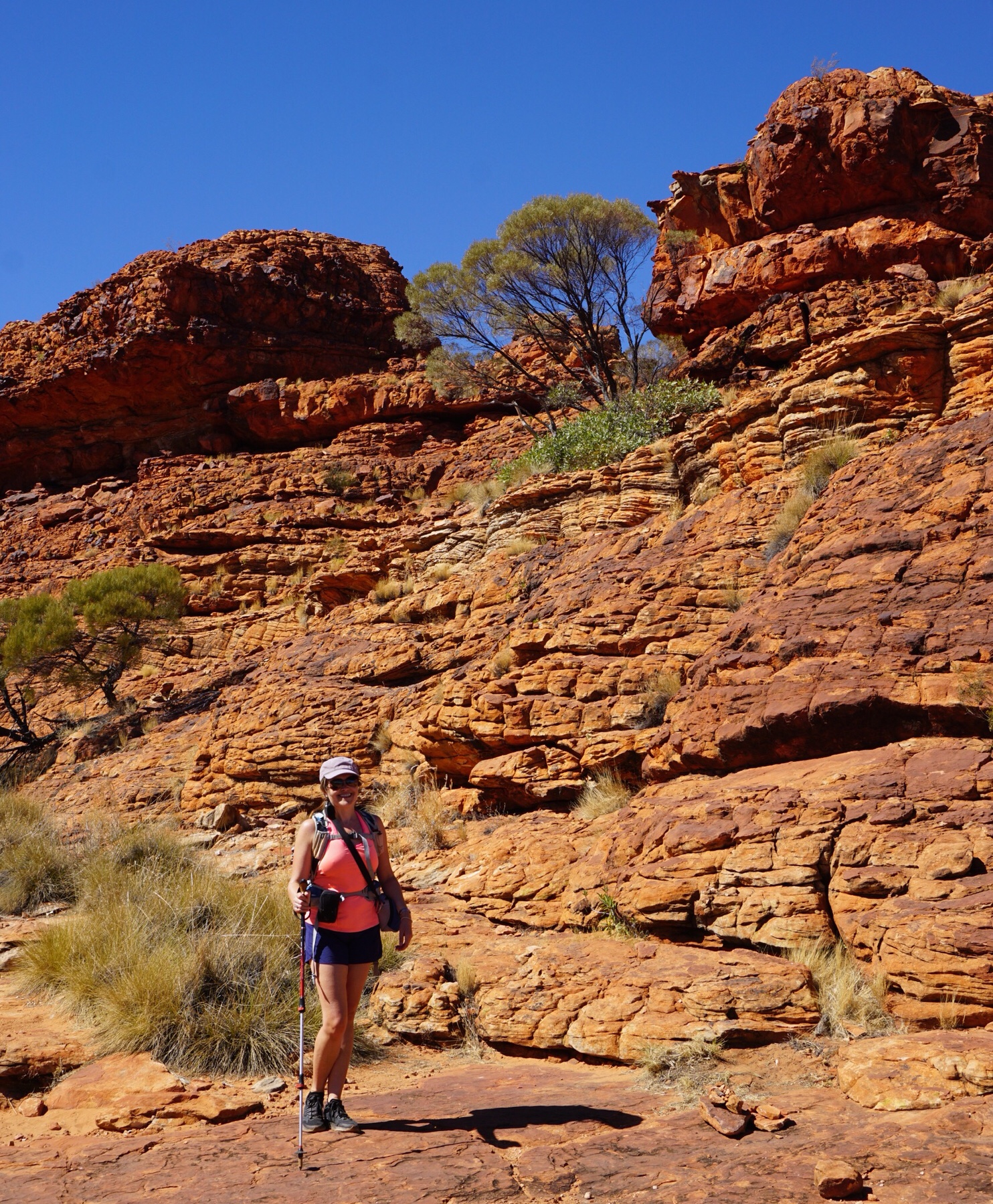 While not busy, we were certainly not alone on this walk, several other hikers following on the same trajectory – mostly French, a few Chinese and Australians.
While not busy, we were certainly not alone on this walk, several other hikers following on the same trajectory – mostly French, a few Chinese and Australians.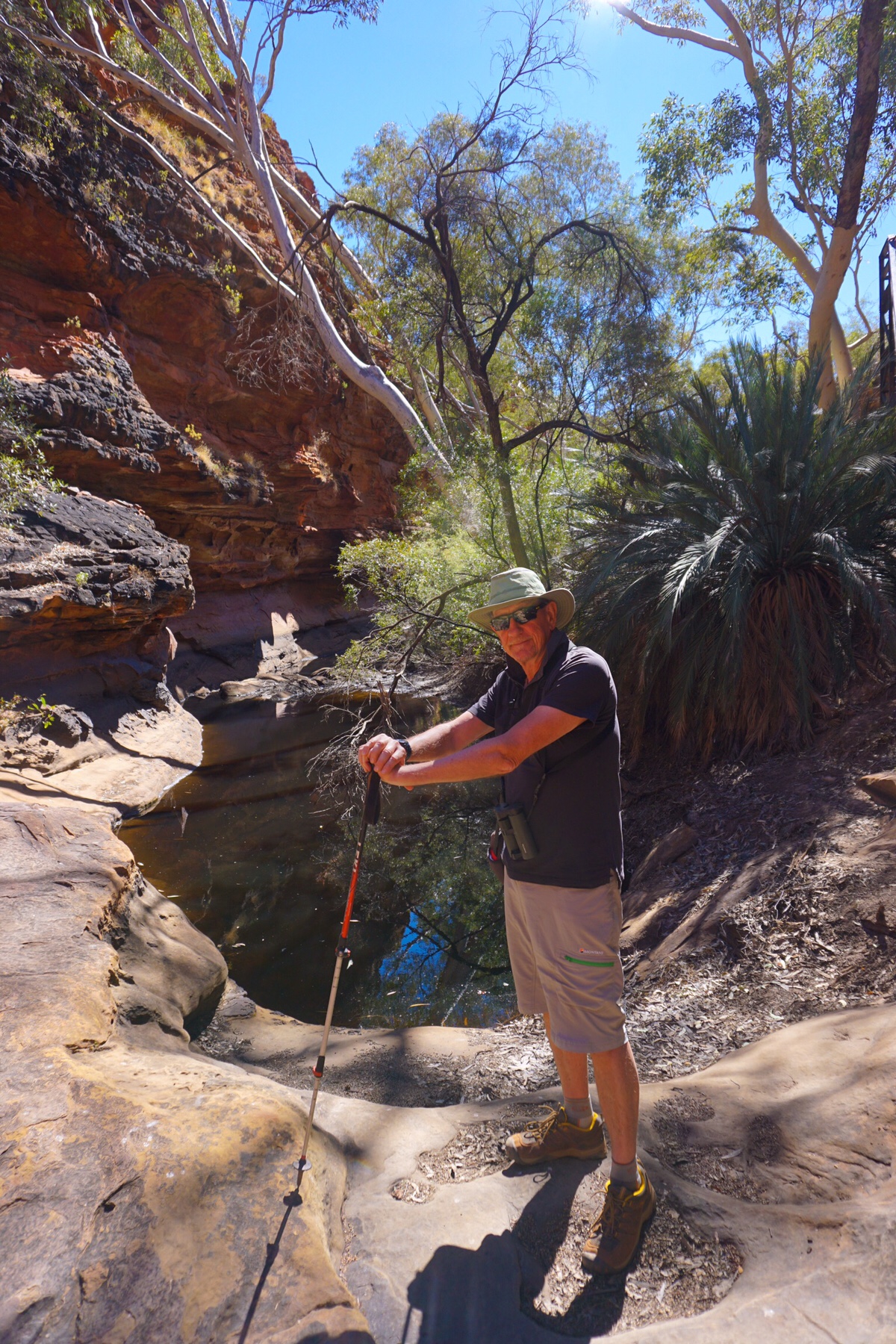
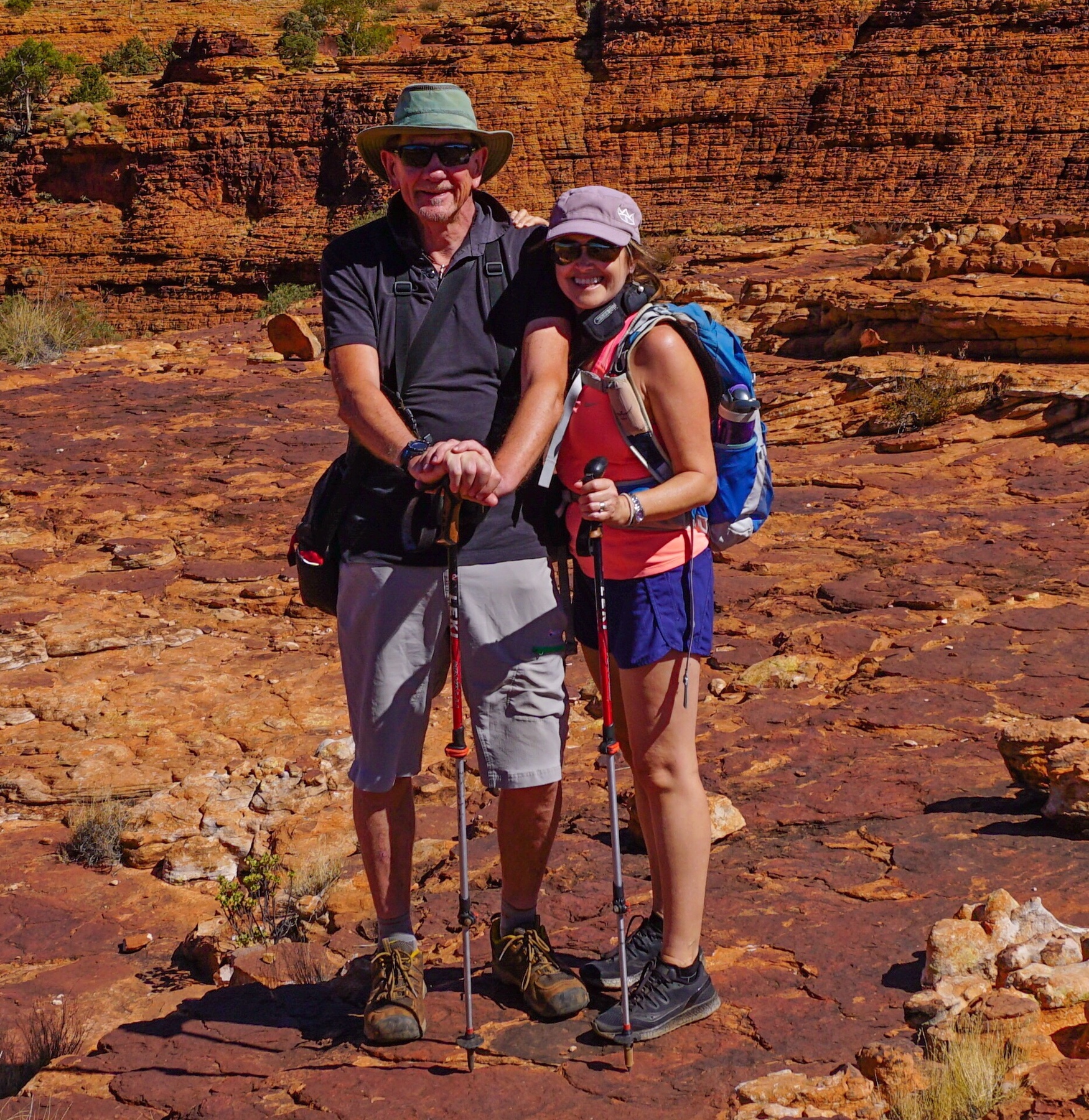
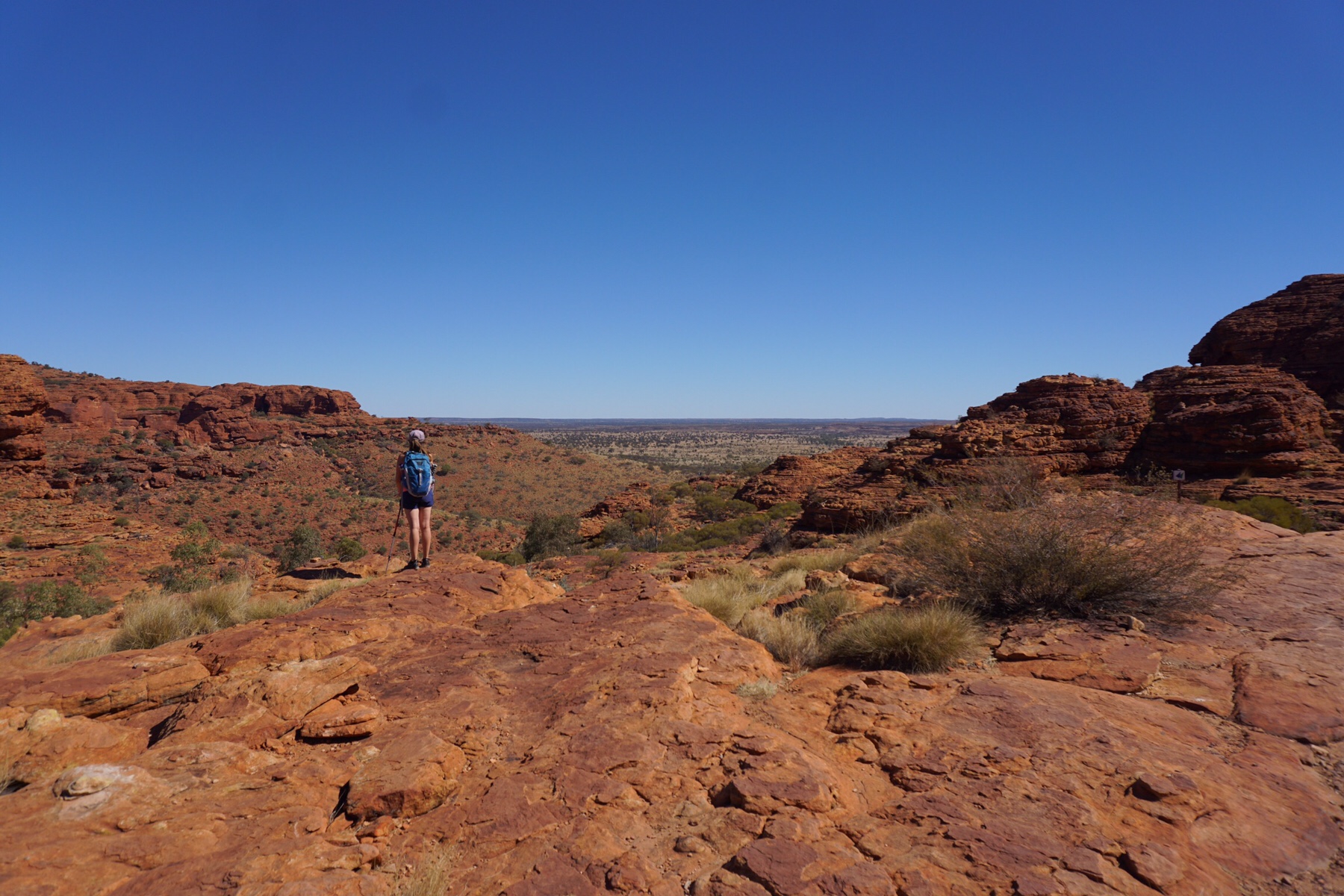 After completing the circuit we returned for a relaxed afternoon, Miss Tassie rolling in the red sand and needing a lot of brushing (which she loves!). I suspect the two events might be linked. Are we being manipulated by a Burmese cat?
After completing the circuit we returned for a relaxed afternoon, Miss Tassie rolling in the red sand and needing a lot of brushing (which she loves!). I suspect the two events might be linked. Are we being manipulated by a Burmese cat?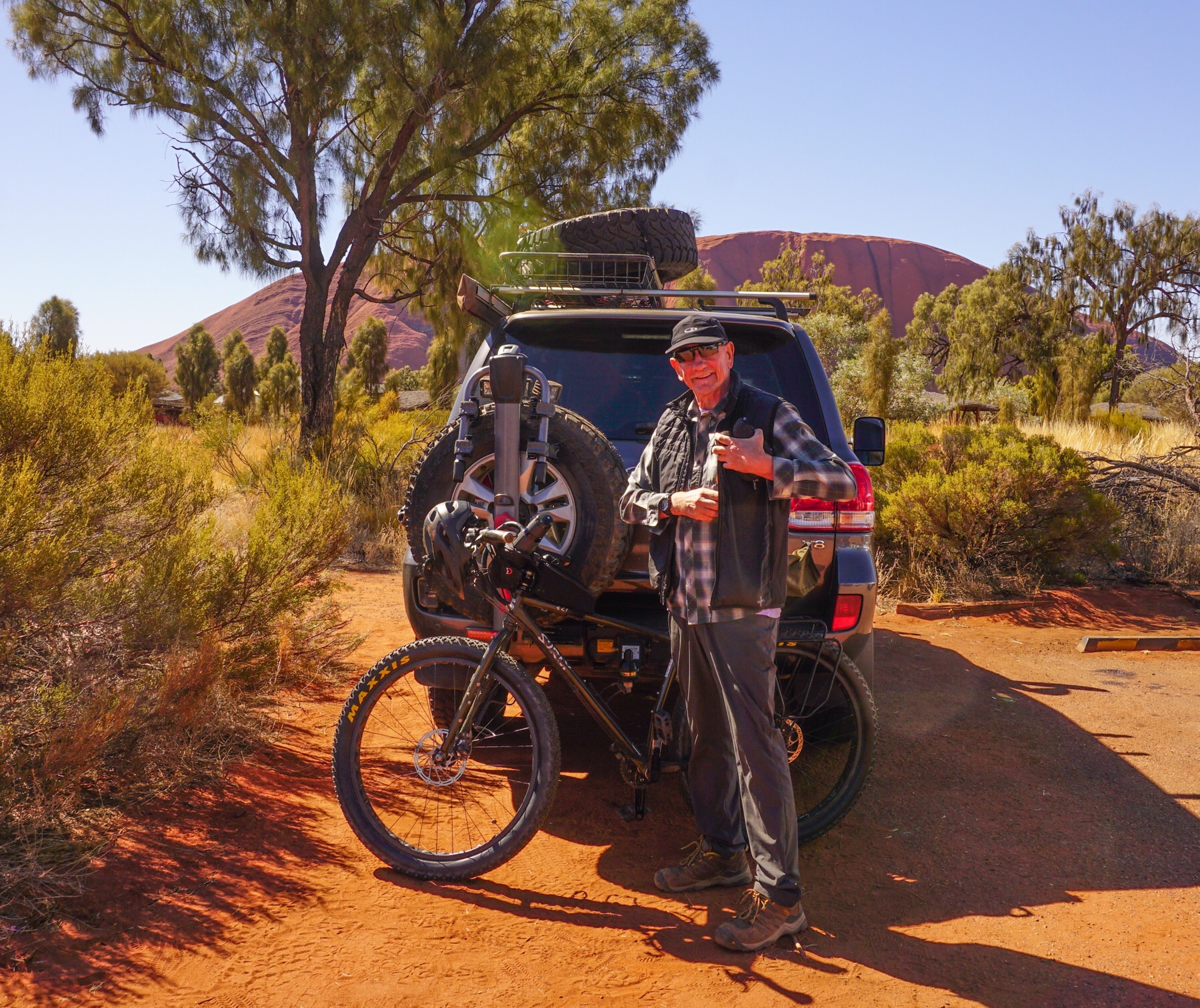 We left for our ride from the Cultural Centre and followed our noses as there were no signs for a cycling path, but there was this rather large rock to head for.
We left for our ride from the Cultural Centre and followed our noses as there were no signs for a cycling path, but there was this rather large rock to head for.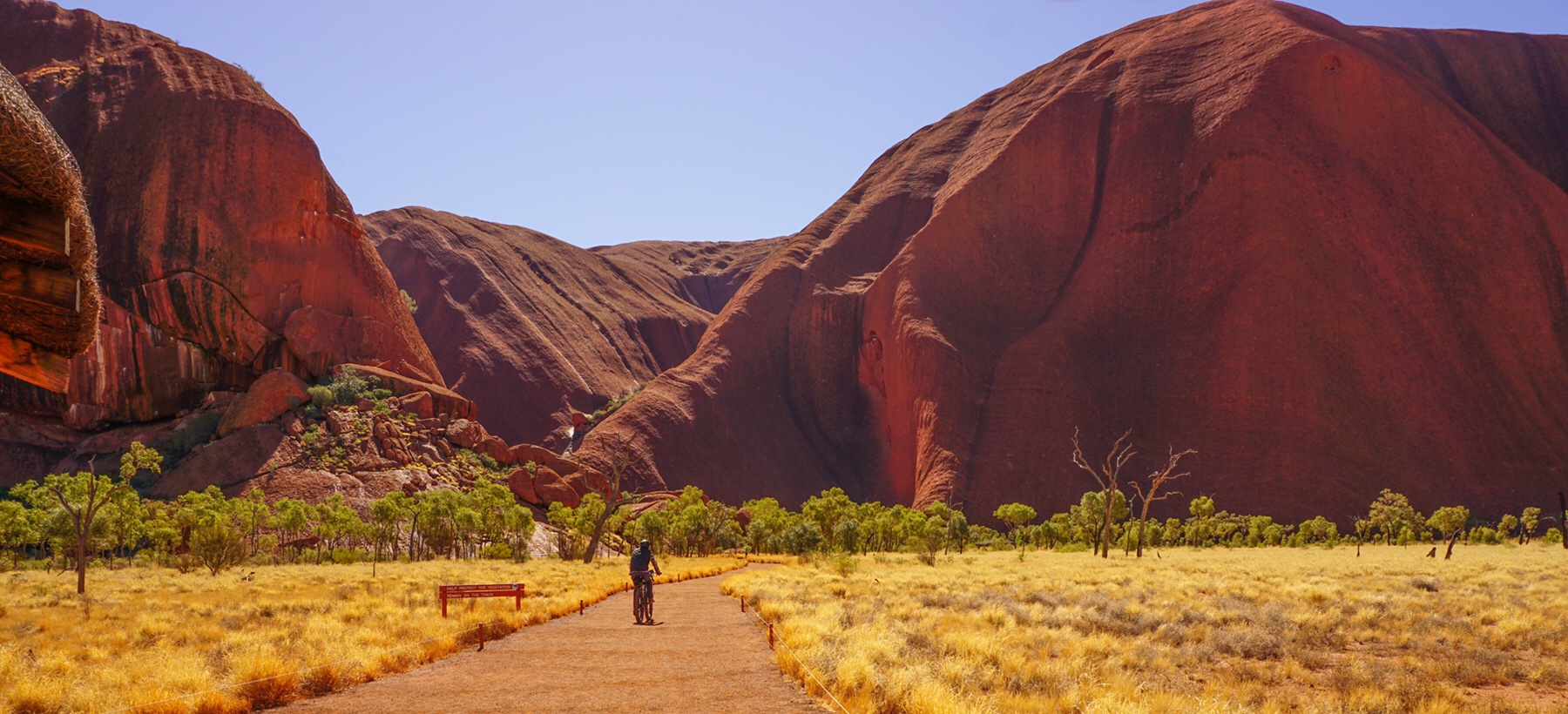
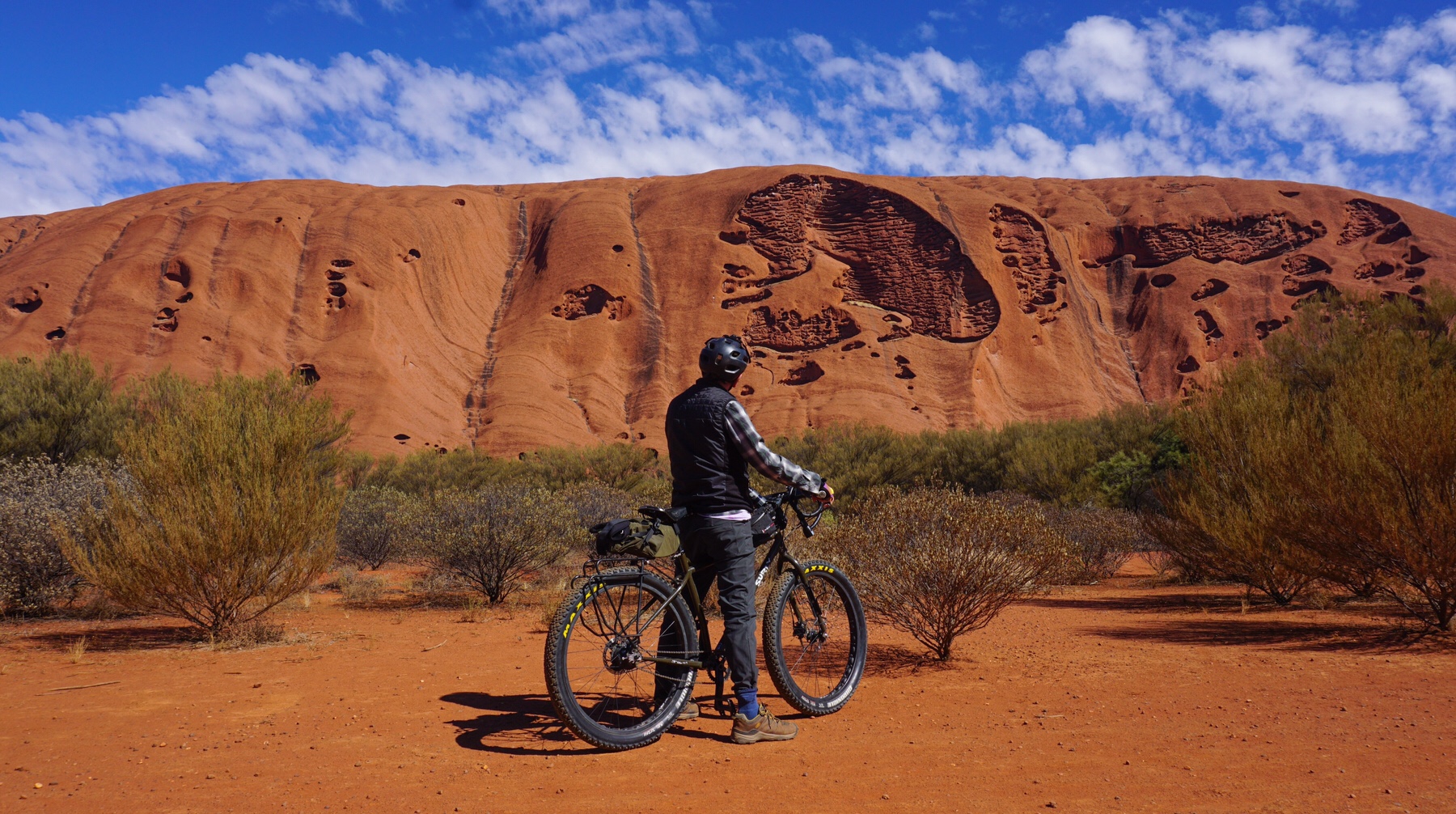
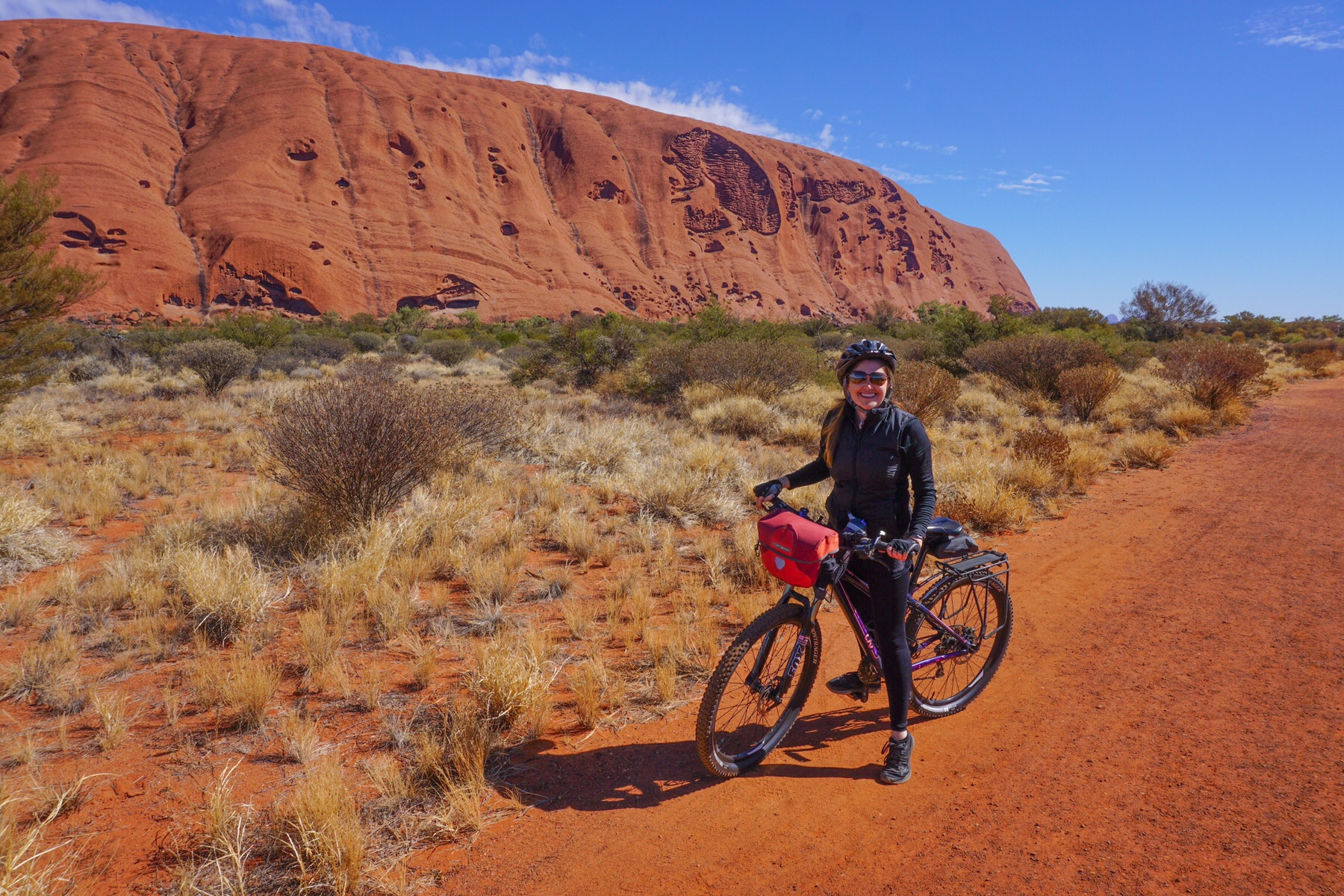 We joined the pain path around the rock and checked the signage, it only showed walkers, but there were bike hire companies around and plenty of tyre marks, so off we went.
We joined the pain path around the rock and checked the signage, it only showed walkers, but there were bike hire companies around and plenty of tyre marks, so off we went.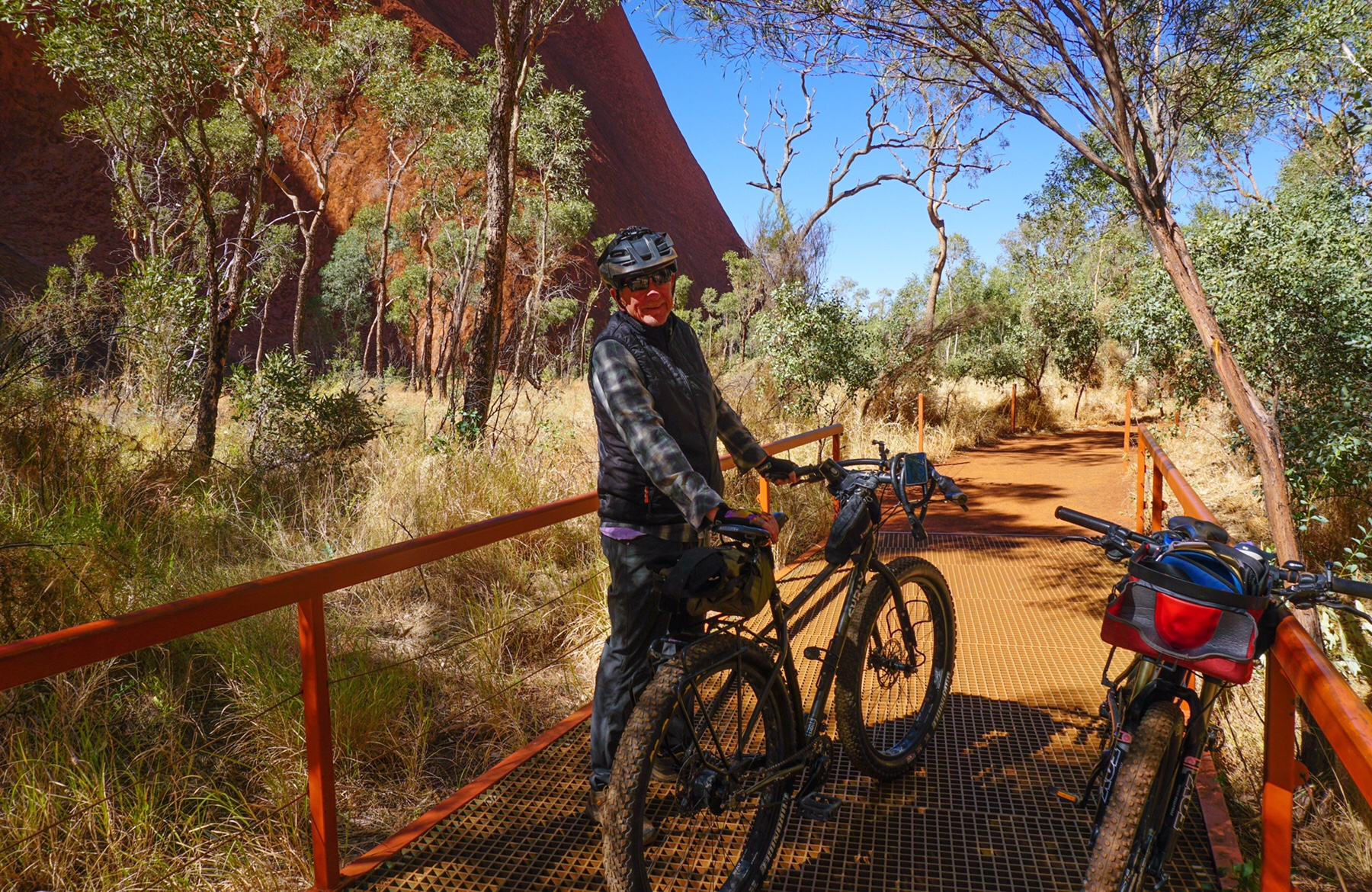
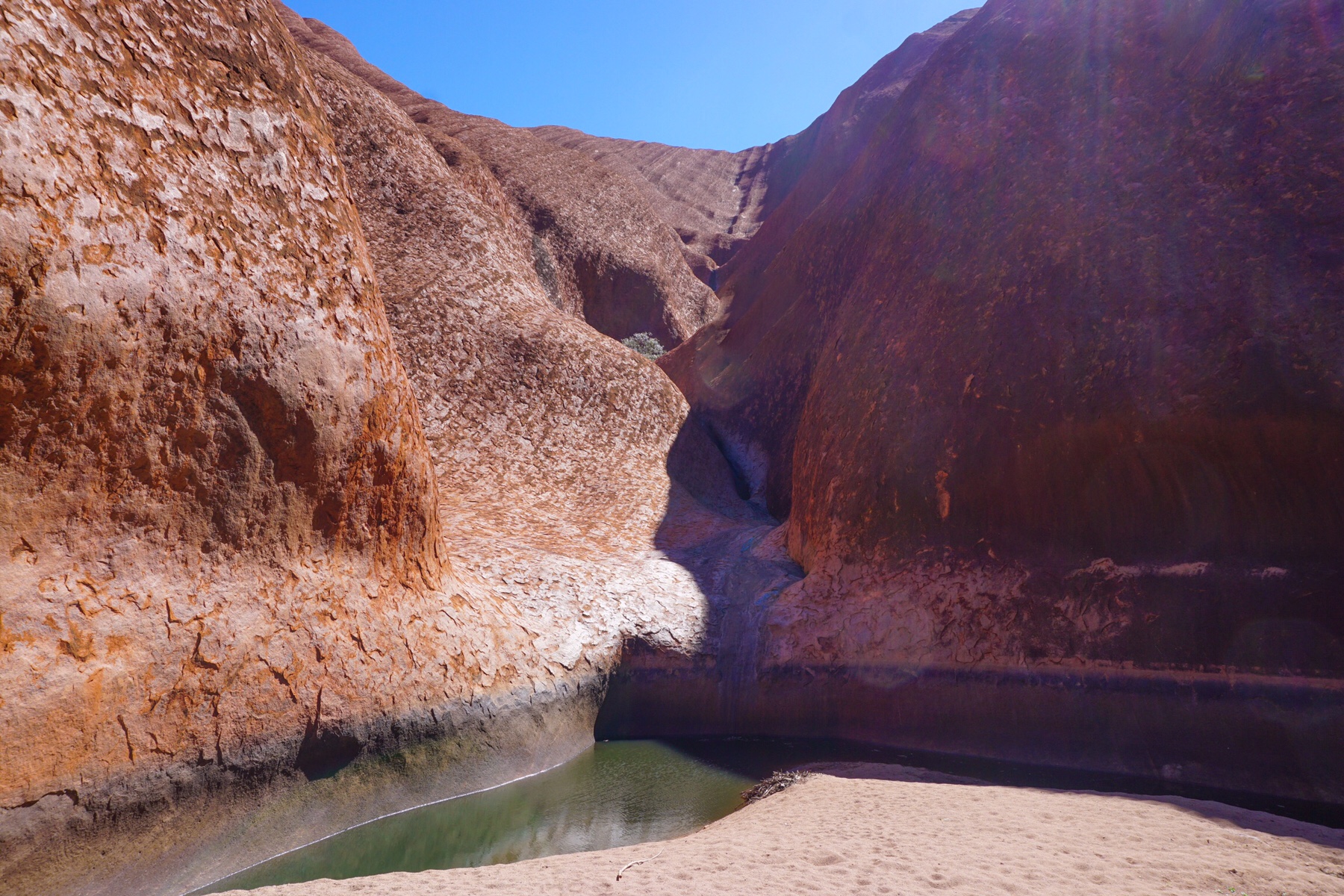
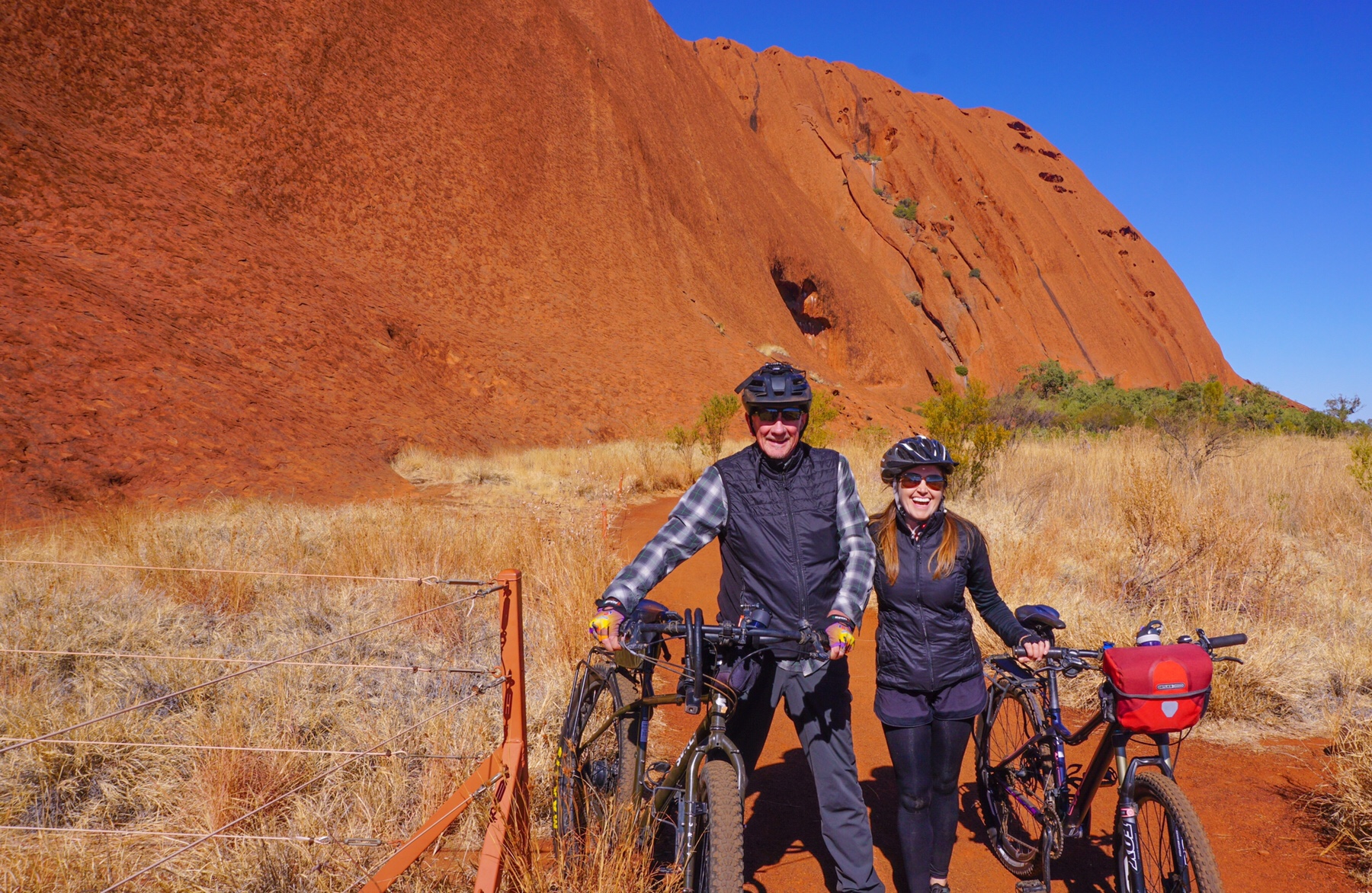 Riding a bike always brings a grin to our faces wherever we are, but to be riding along under this brilliant blue sky, dwarfed by this towering red rock…breathtaking. We just couldn’t stop ogling this magnificent scenery. Neither of us are in any way spiritual, but we both felt this to be the closest we could get, just sitting quietly looking up at this massive granite monolith towering over us.
Riding a bike always brings a grin to our faces wherever we are, but to be riding along under this brilliant blue sky, dwarfed by this towering red rock…breathtaking. We just couldn’t stop ogling this magnificent scenery. Neither of us are in any way spiritual, but we both felt this to be the closest we could get, just sitting quietly looking up at this massive granite monolith towering over us.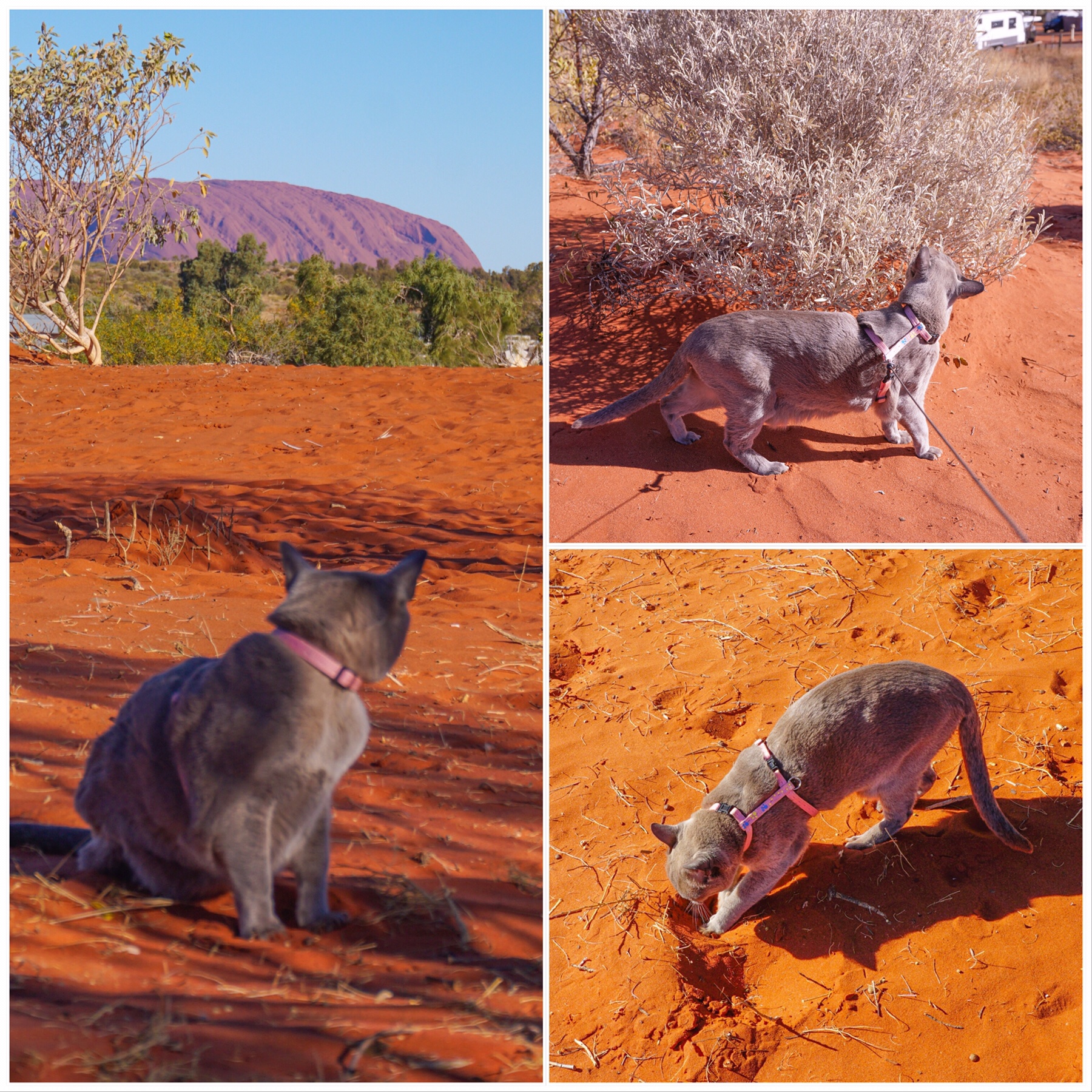
 The short walk we did here was one of the most enjoyable we have done from a scenic perspective for ages. It’s called the Valley of the Winds walk, and takes you up through the domes and in a 7km circuit.
The short walk we did here was one of the most enjoyable we have done from a scenic perspective for ages. It’s called the Valley of the Winds walk, and takes you up through the domes and in a 7km circuit.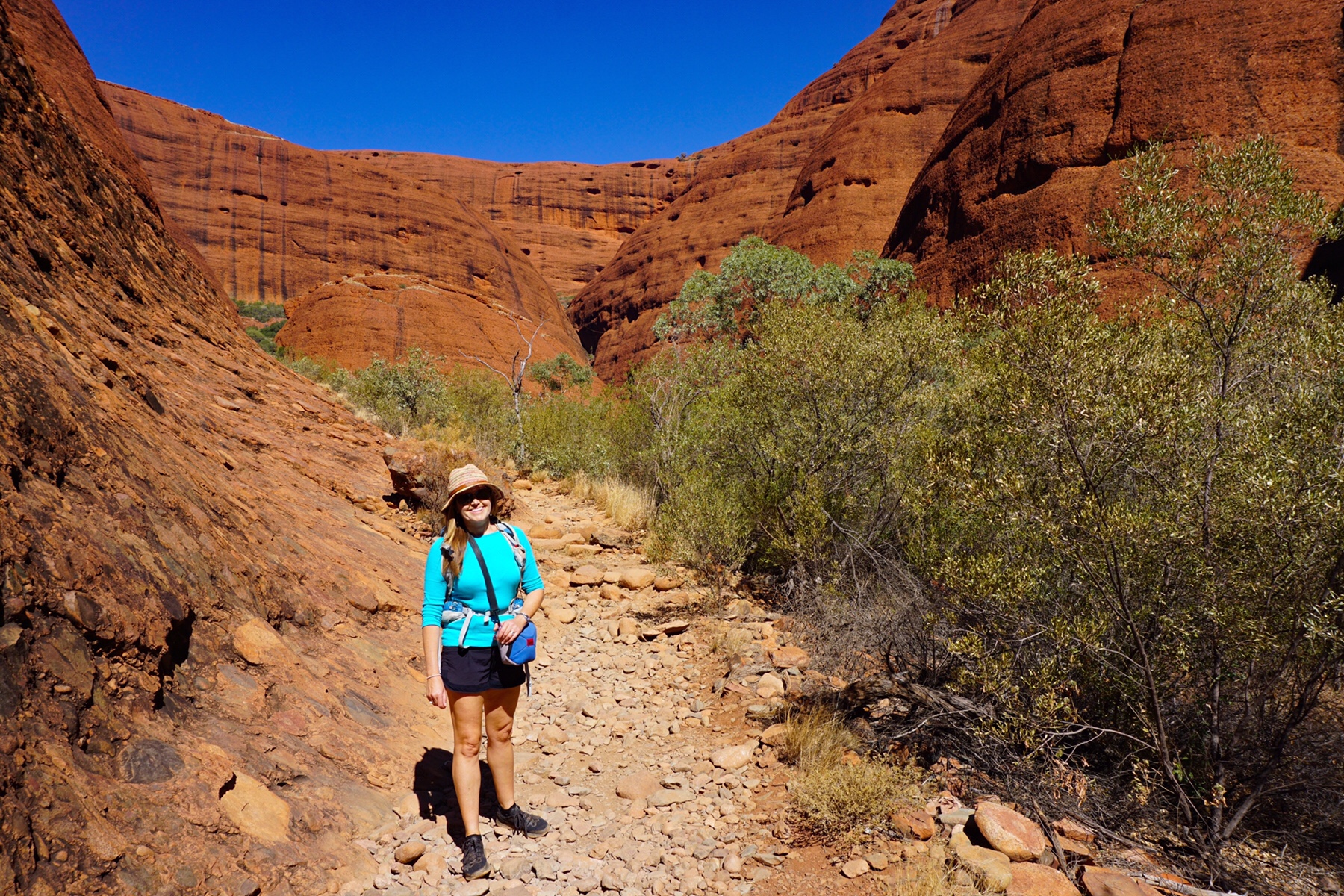
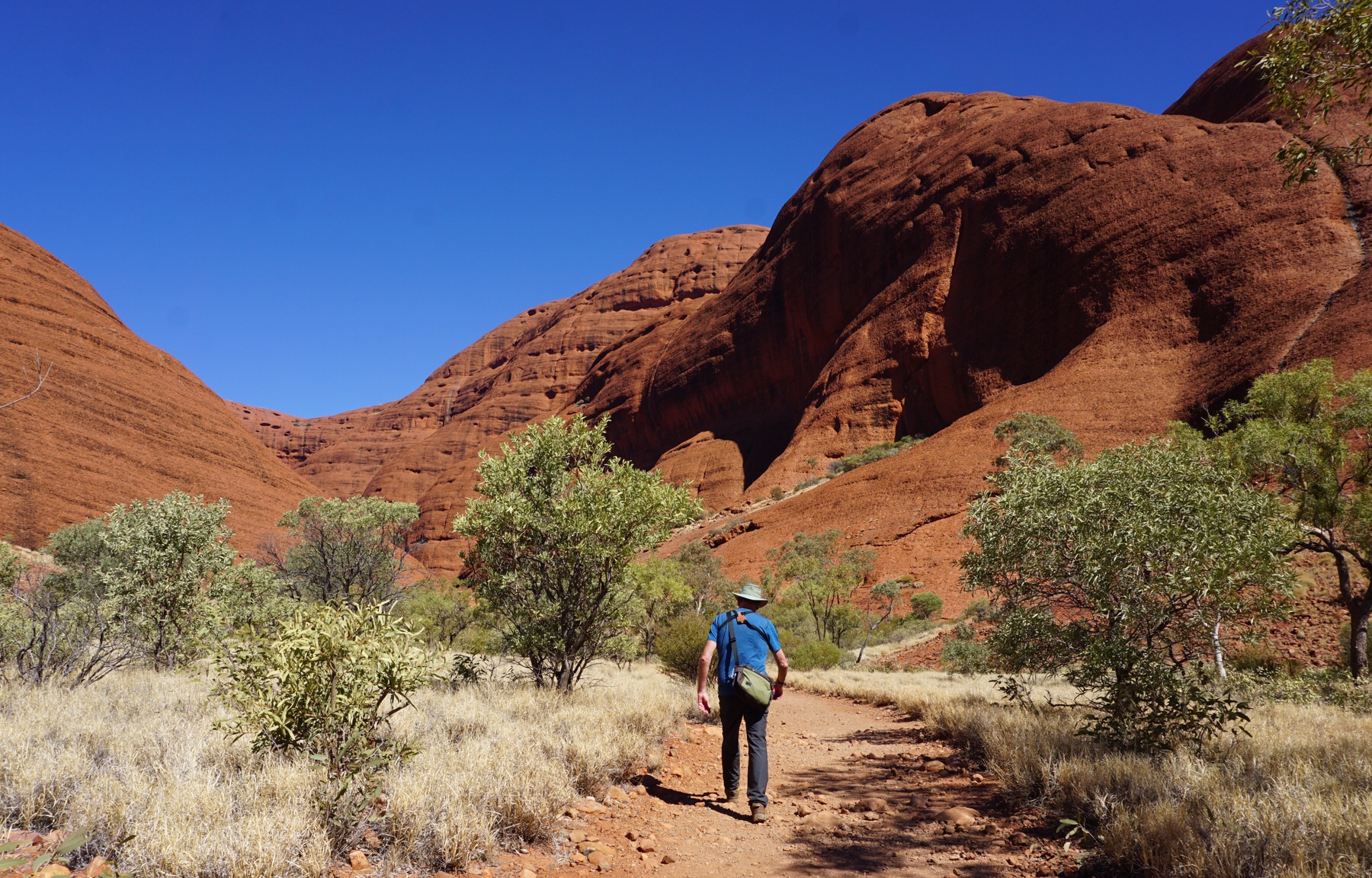
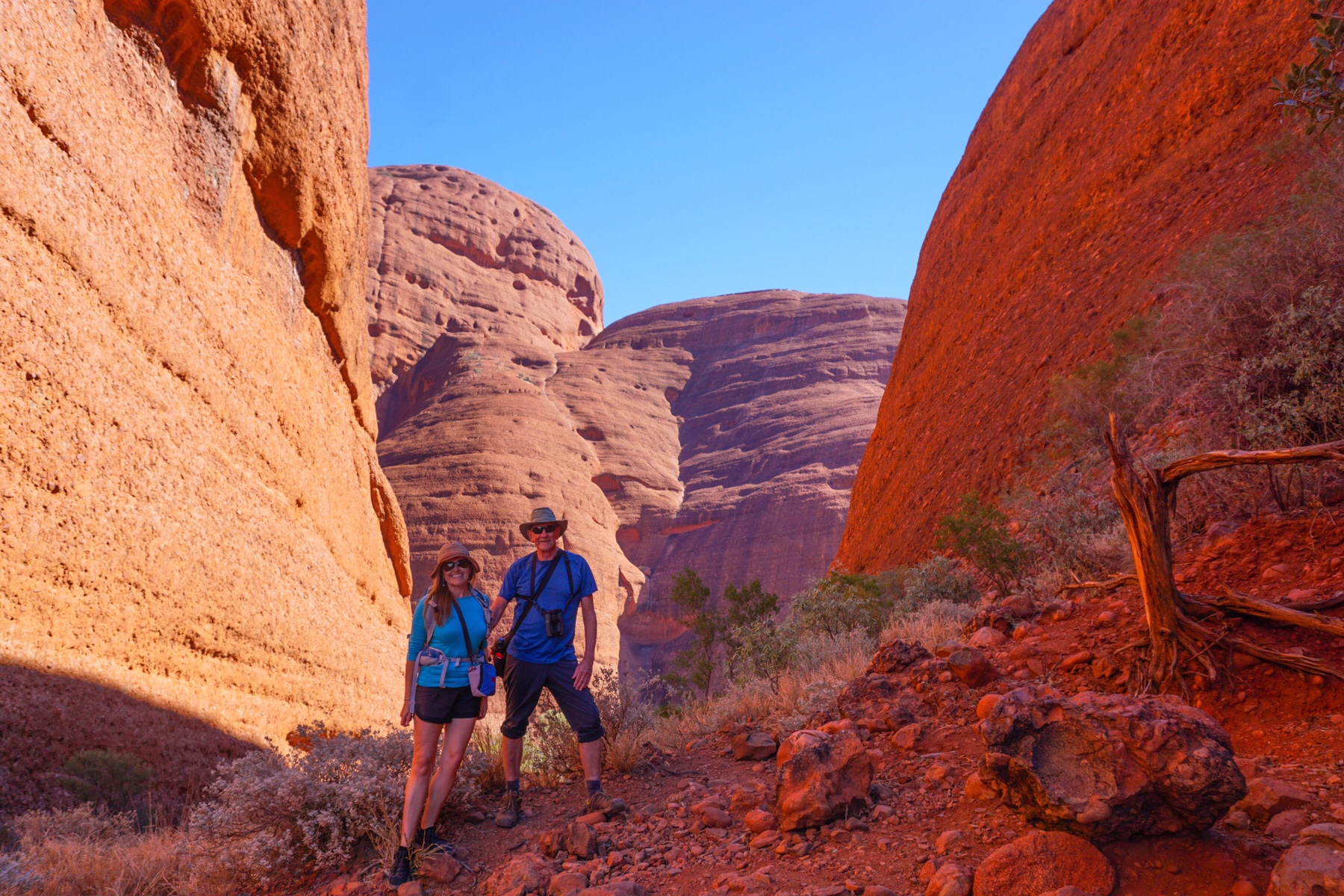
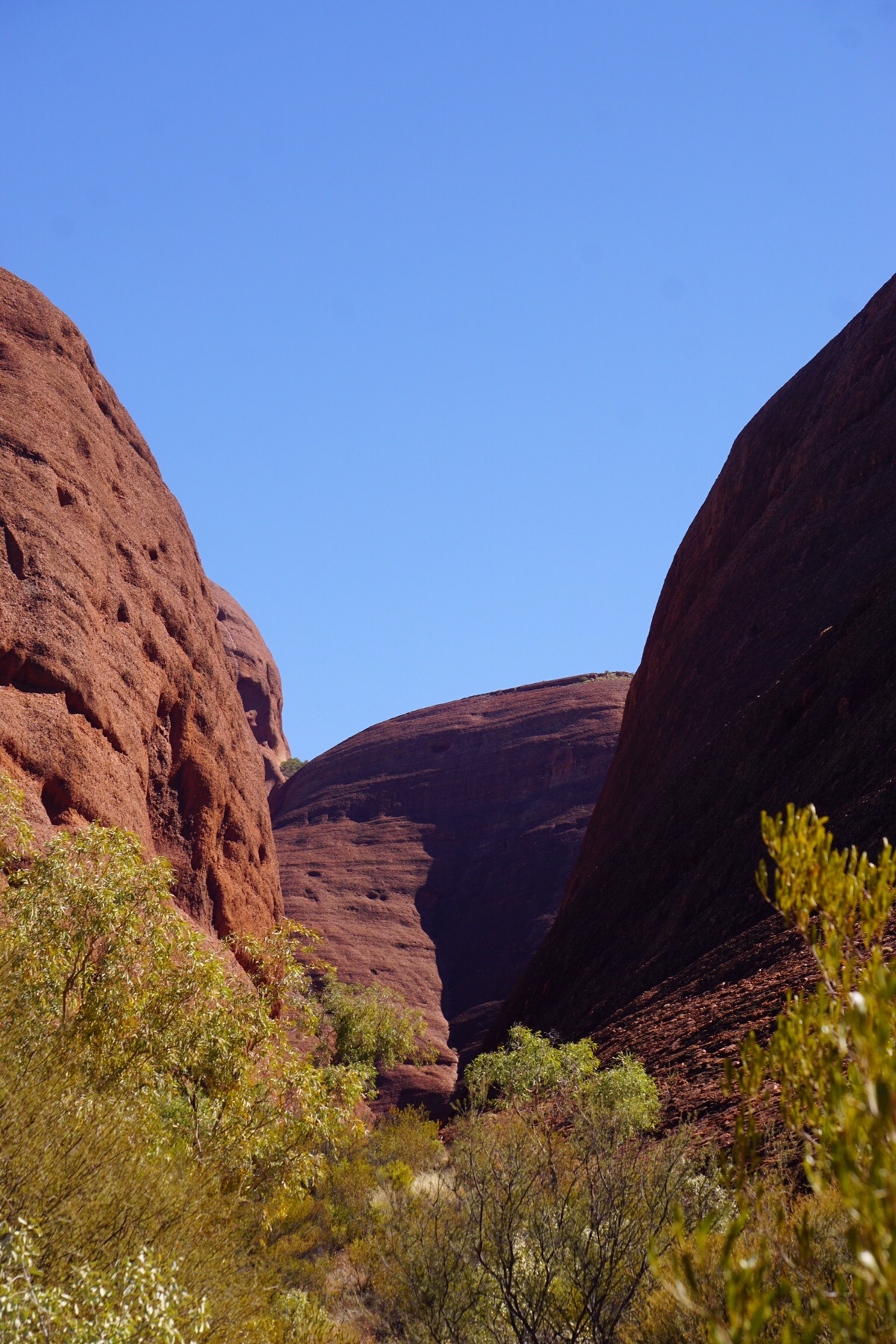
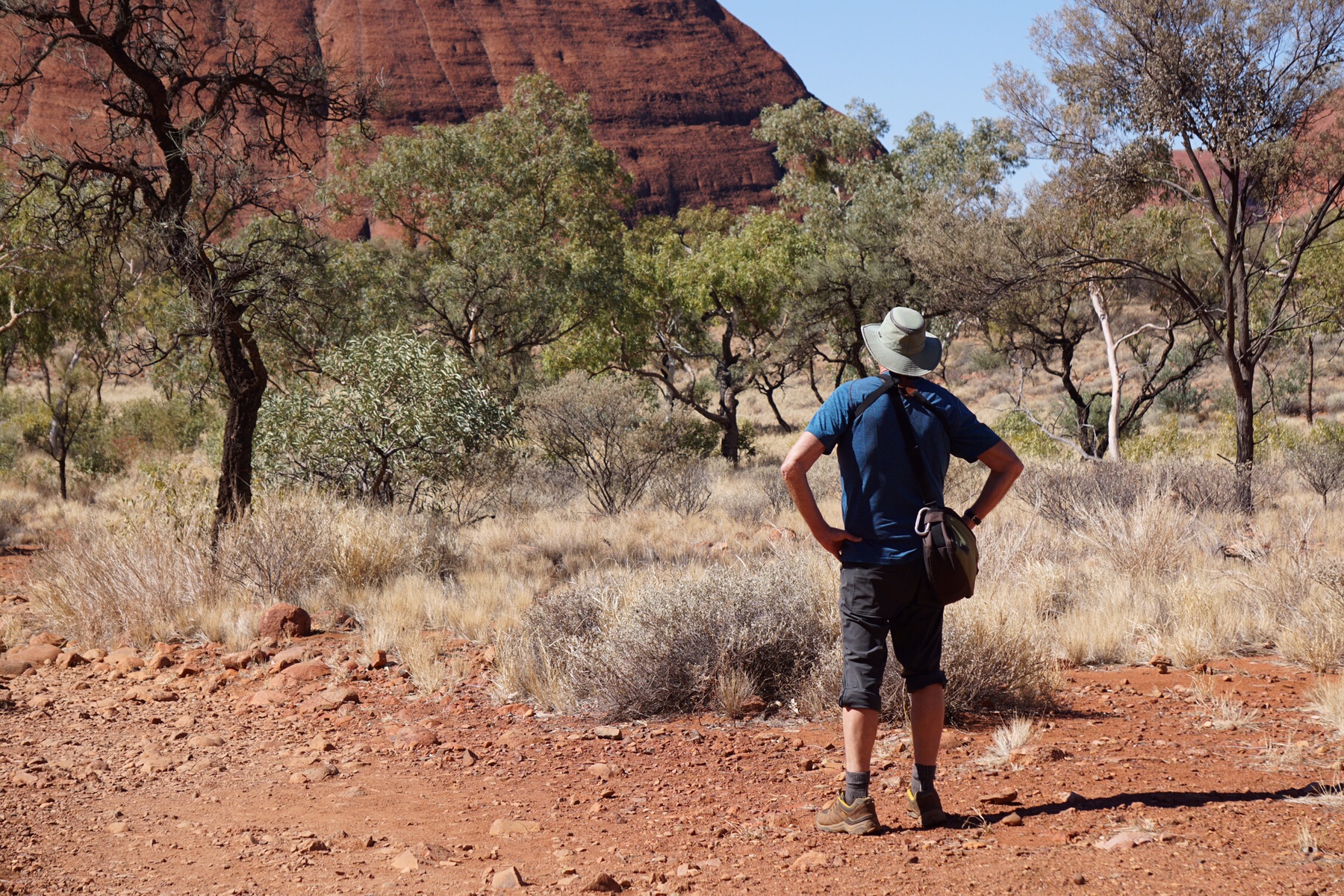 (Below, a friendly Grey Shrike-Thrush which accompanied us on our walk)
(Below, a friendly Grey Shrike-Thrush which accompanied us on our walk)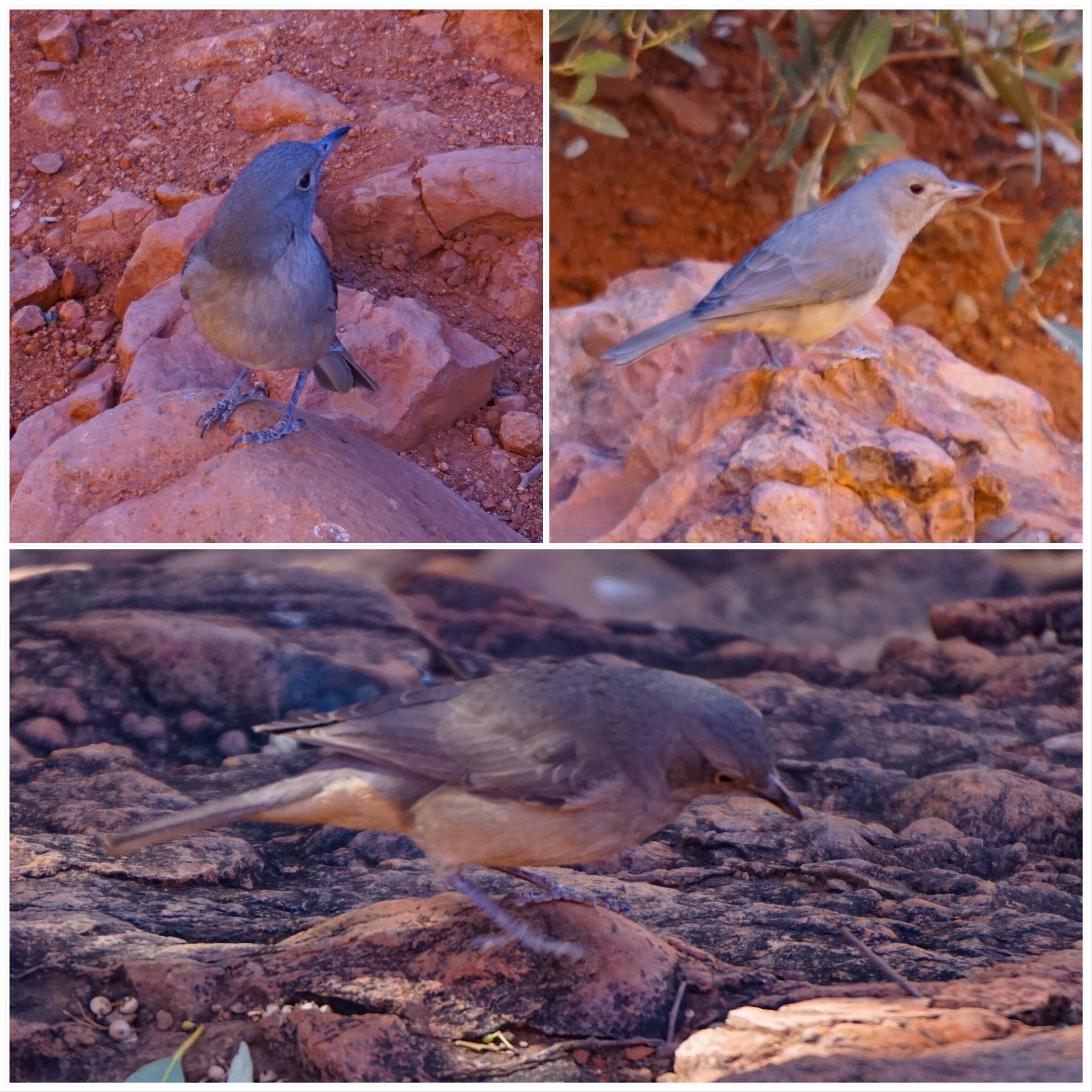 We could easily have spent a few more days here, but we are now on a bit of deadline, given we have lost a couple of weeks from our itinerary. So soon it was time to pack up and move on.
We could easily have spent a few more days here, but we are now on a bit of deadline, given we have lost a couple of weeks from our itinerary. So soon it was time to pack up and move on.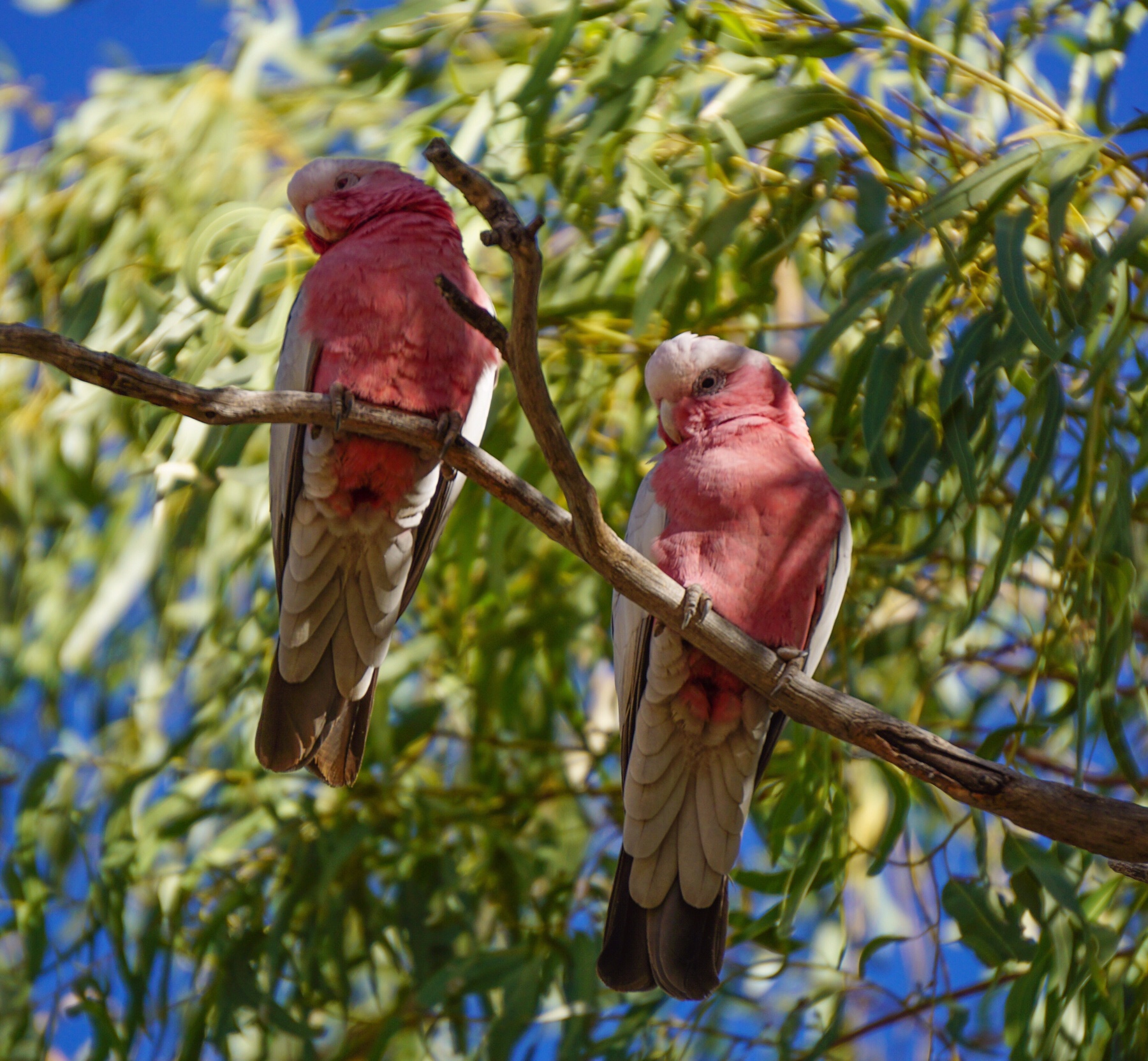
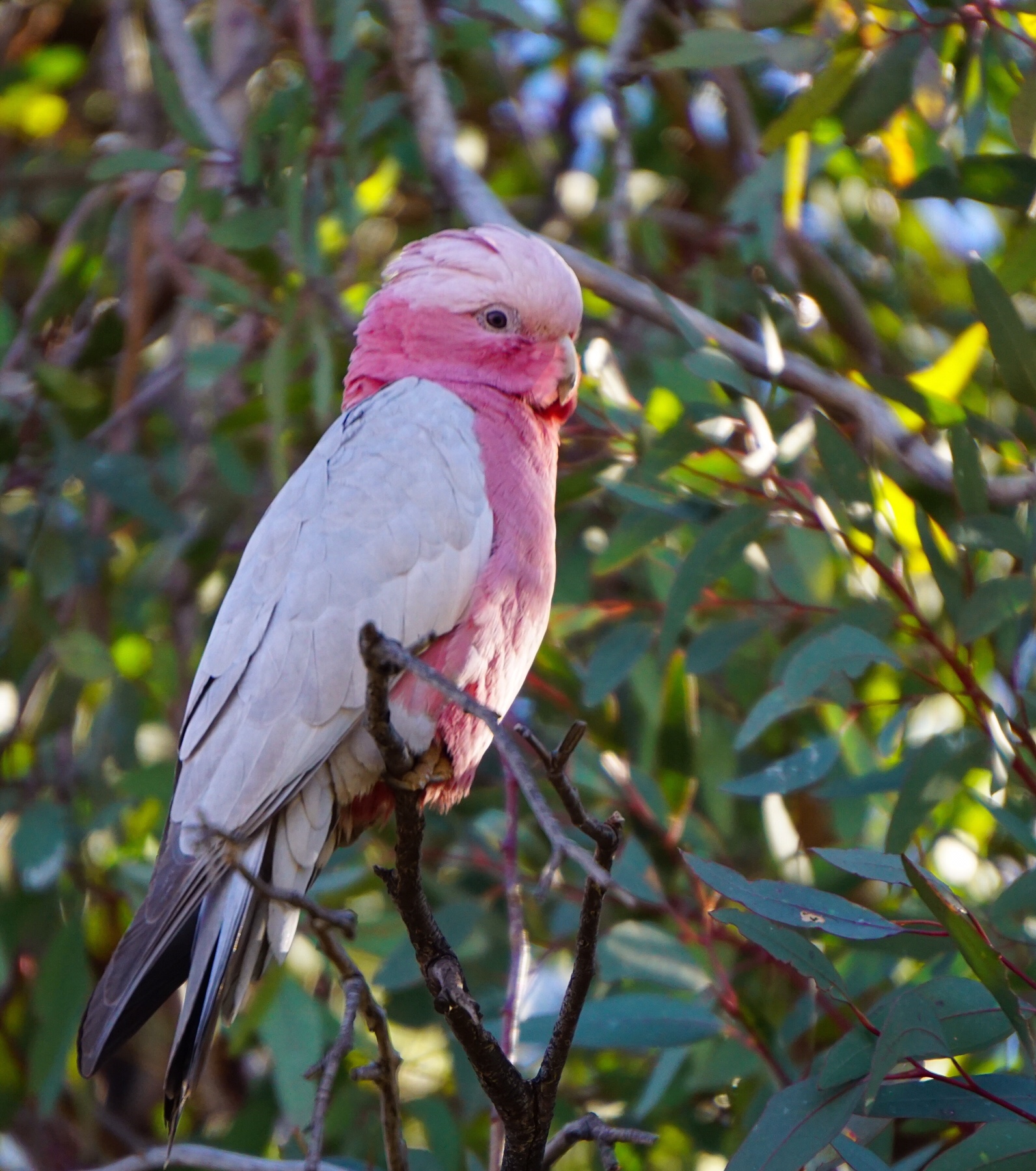
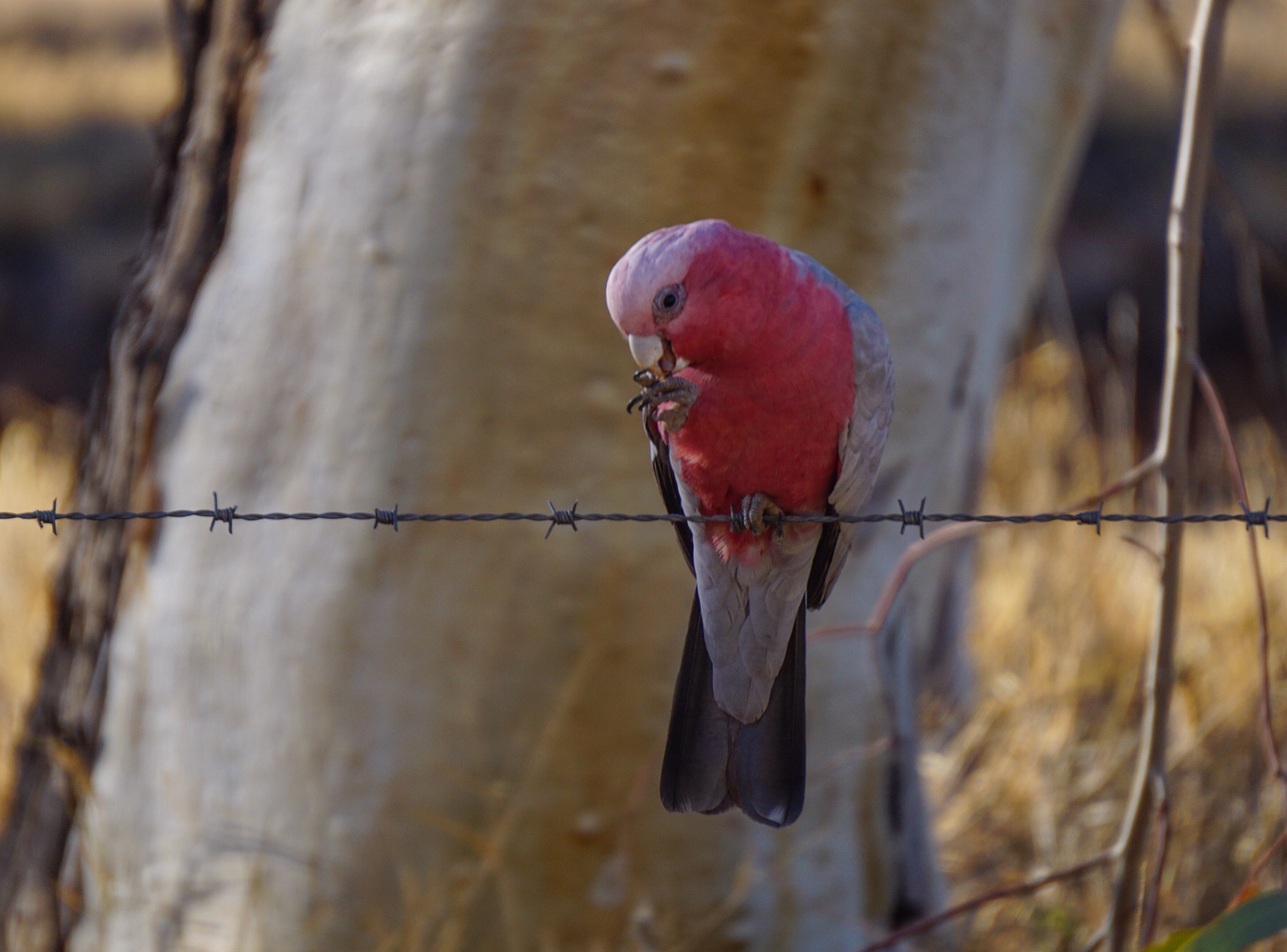 We had a nice stroll around admiring the scenery and enjoying the feeling of being upright!
We had a nice stroll around admiring the scenery and enjoying the feeling of being upright!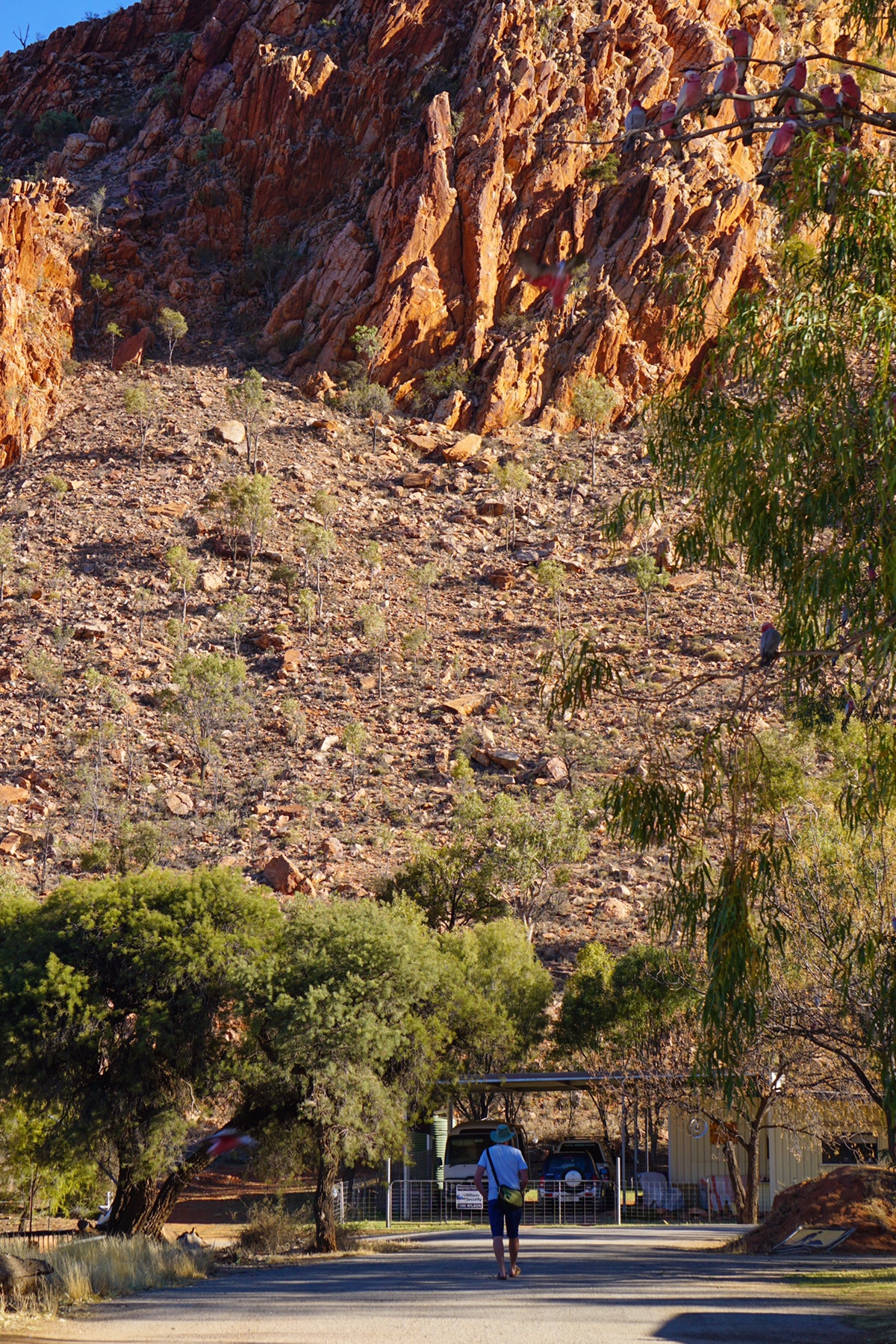 Sunday – location: Petermann
Sunday – location: Petermann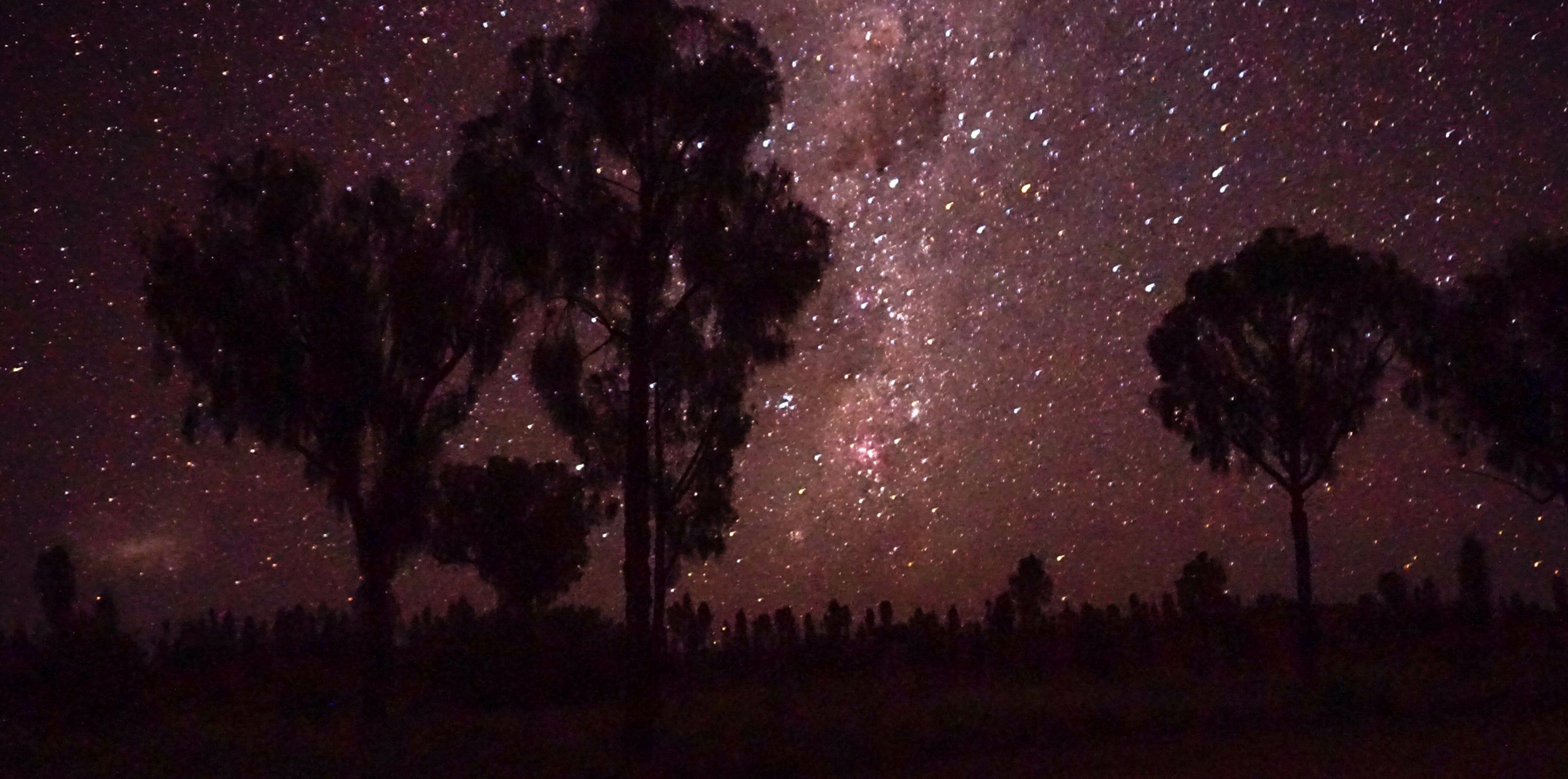
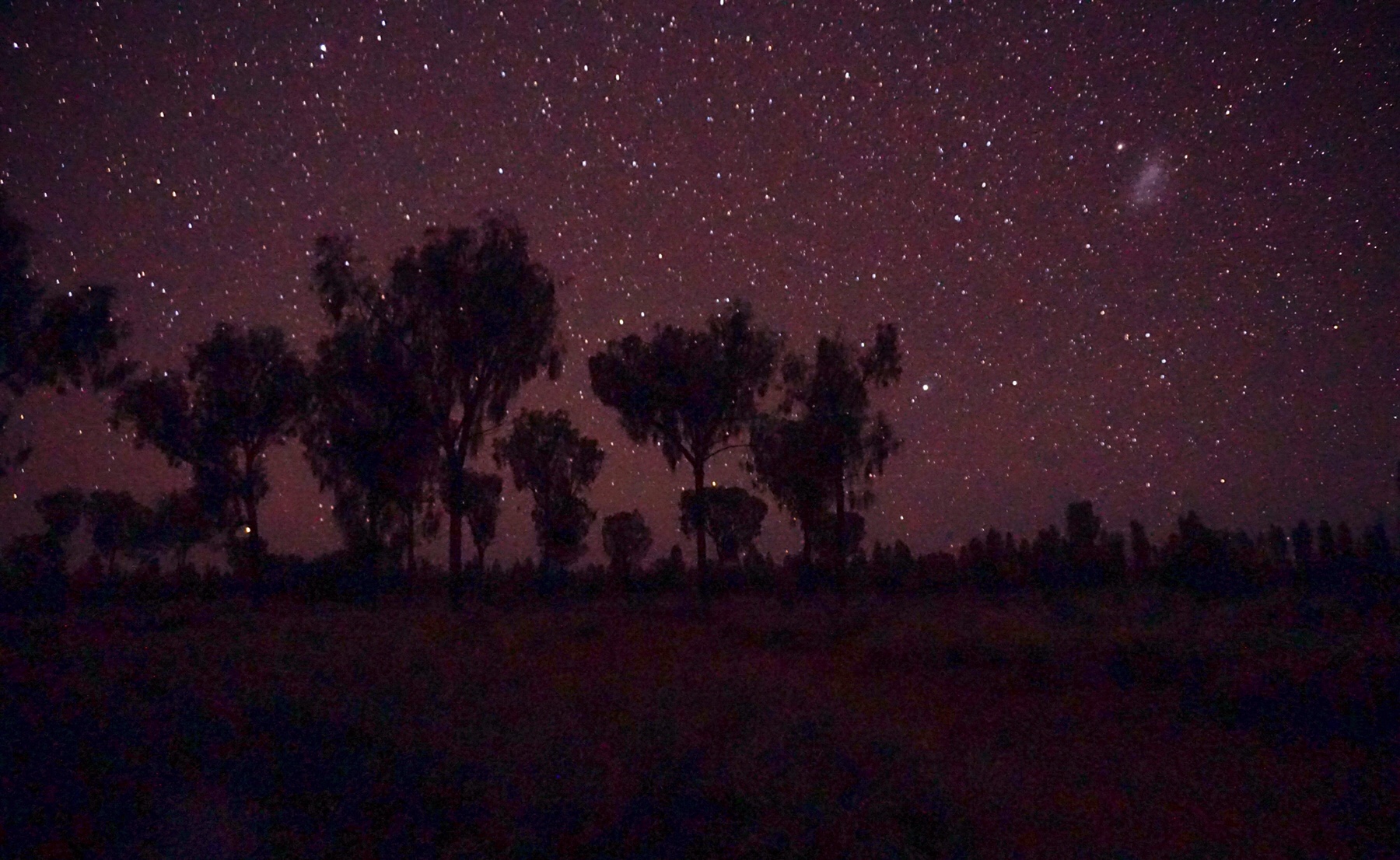
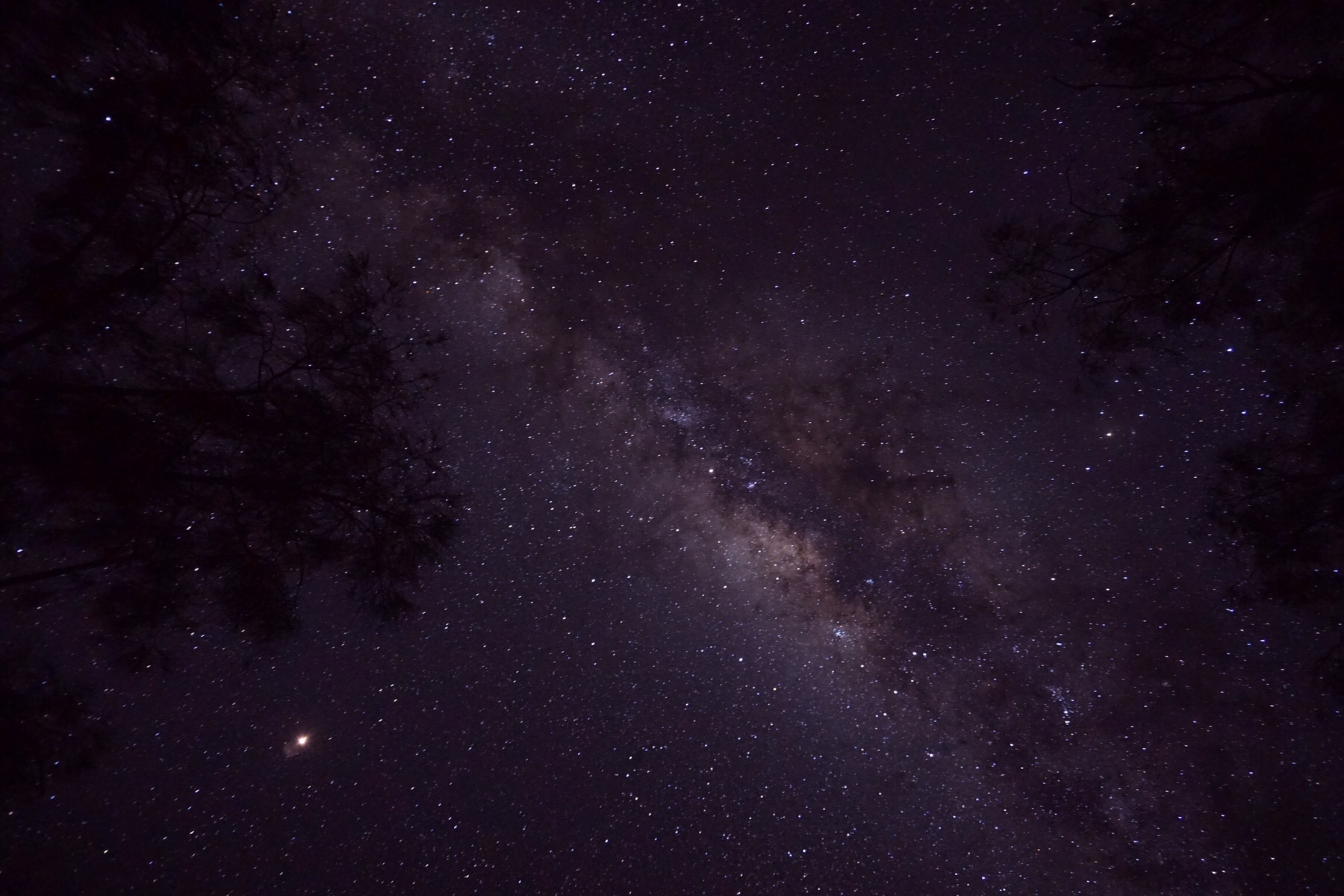
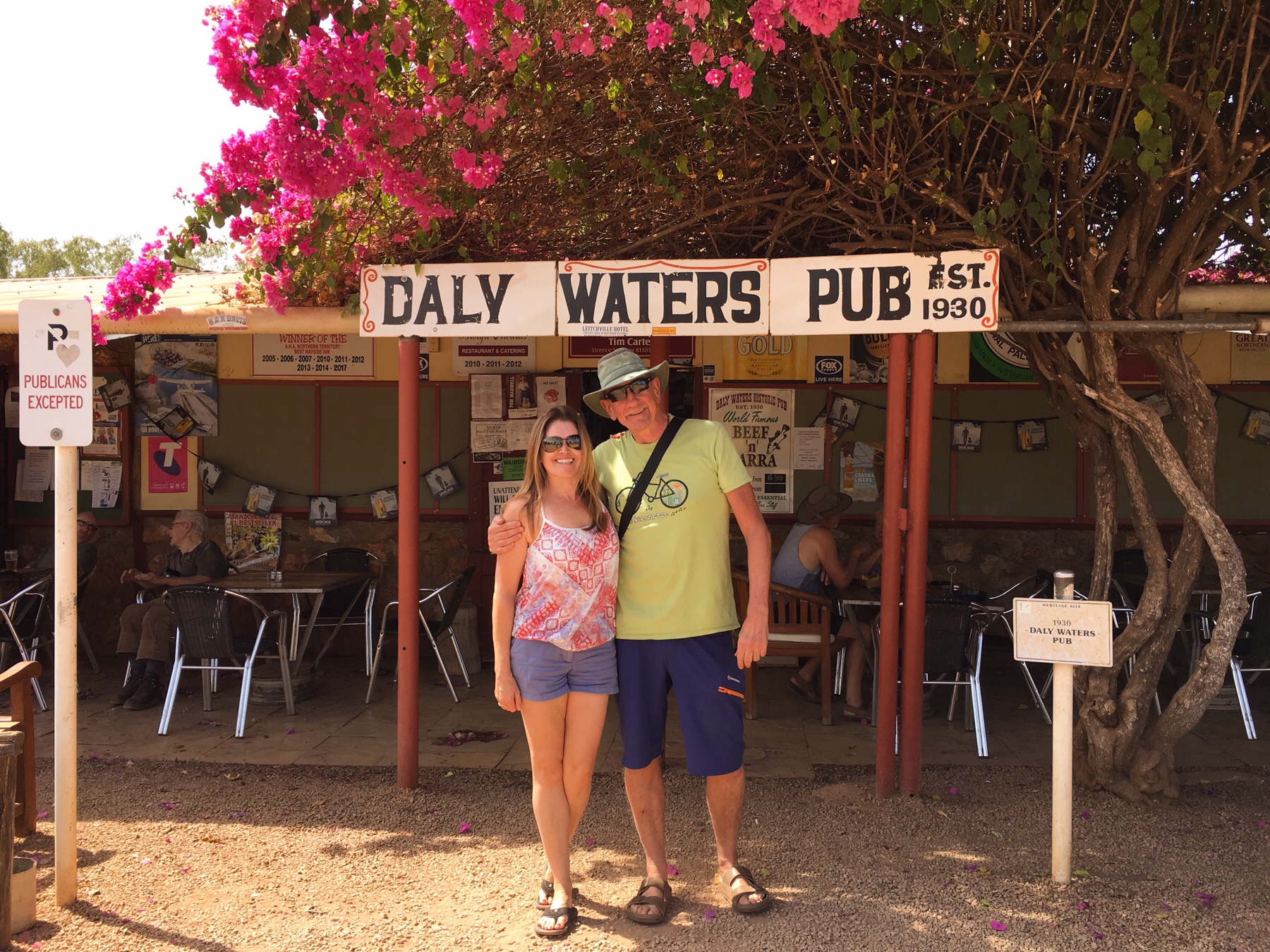
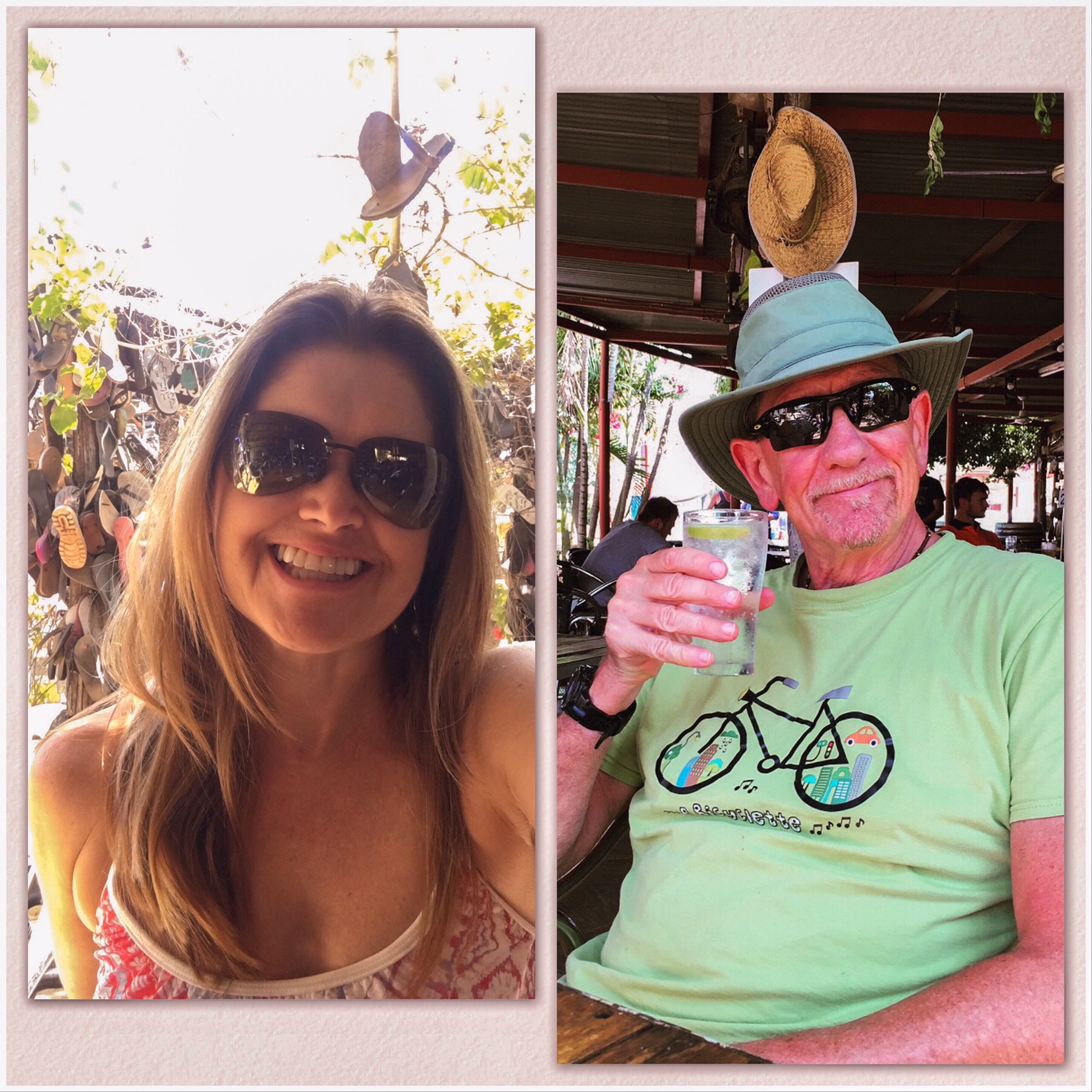 Anyway, it was a long day in the saddle, but we pulled up finally at a place we had stopped at on the way north last year. It’s just an old road that loops off the Stuart Highway for about 5km, signposted ‘Churchill’s Head’.
Anyway, it was a long day in the saddle, but we pulled up finally at a place we had stopped at on the way north last year. It’s just an old road that loops off the Stuart Highway for about 5km, signposted ‘Churchill’s Head’.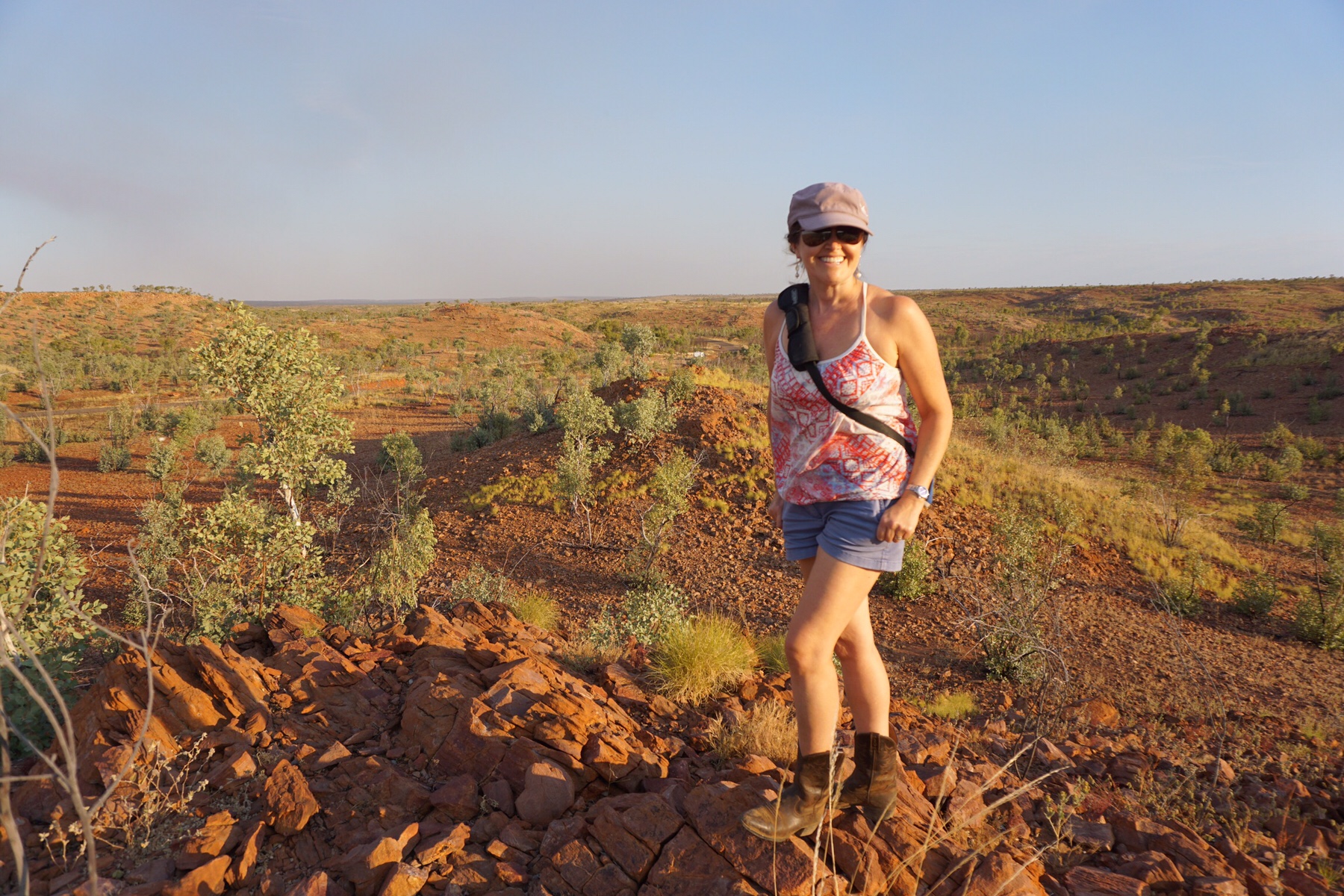
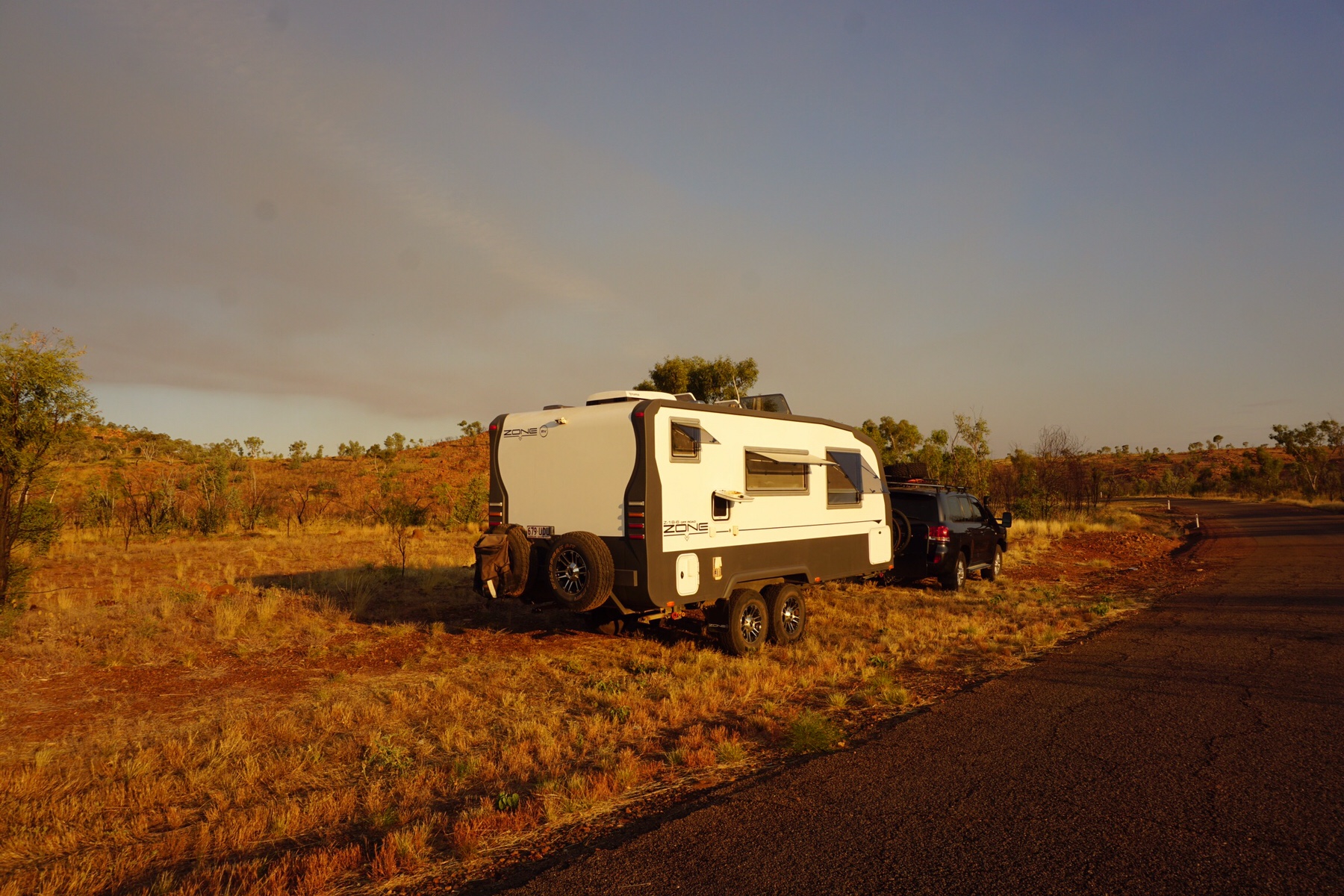 No facilities, just a level bit of ground a view across the plains. We loved it last time, and we love it again. There seem to be so few places like this on the well trodden routes we have been following. For a start there are very few minor roads that lead off the main highway, so we are drawn to caravan parks or the crowded free camps often so close the highway that the road trains sound like they are coming right through the Zone! “Ah..the serenity”, to quote from one of our favourite movies “The Castle”.
No facilities, just a level bit of ground a view across the plains. We loved it last time, and we love it again. There seem to be so few places like this on the well trodden routes we have been following. For a start there are very few minor roads that lead off the main highway, so we are drawn to caravan parks or the crowded free camps often so close the highway that the road trains sound like they are coming right through the Zone! “Ah..the serenity”, to quote from one of our favourite movies “The Castle”. If we were to walk out of the van due west we wouldn’t reach another tarmac road for 1,325km – on the west coast of Australia, south of Broome. Not one hint of civilisation, except the Alice to Darwin railway. Nothing else. What a country. How many places in the world still have that amount of emptiness?
If we were to walk out of the van due west we wouldn’t reach another tarmac road for 1,325km – on the west coast of Australia, south of Broome. Not one hint of civilisation, except the Alice to Darwin railway. Nothing else. What a country. How many places in the world still have that amount of emptiness?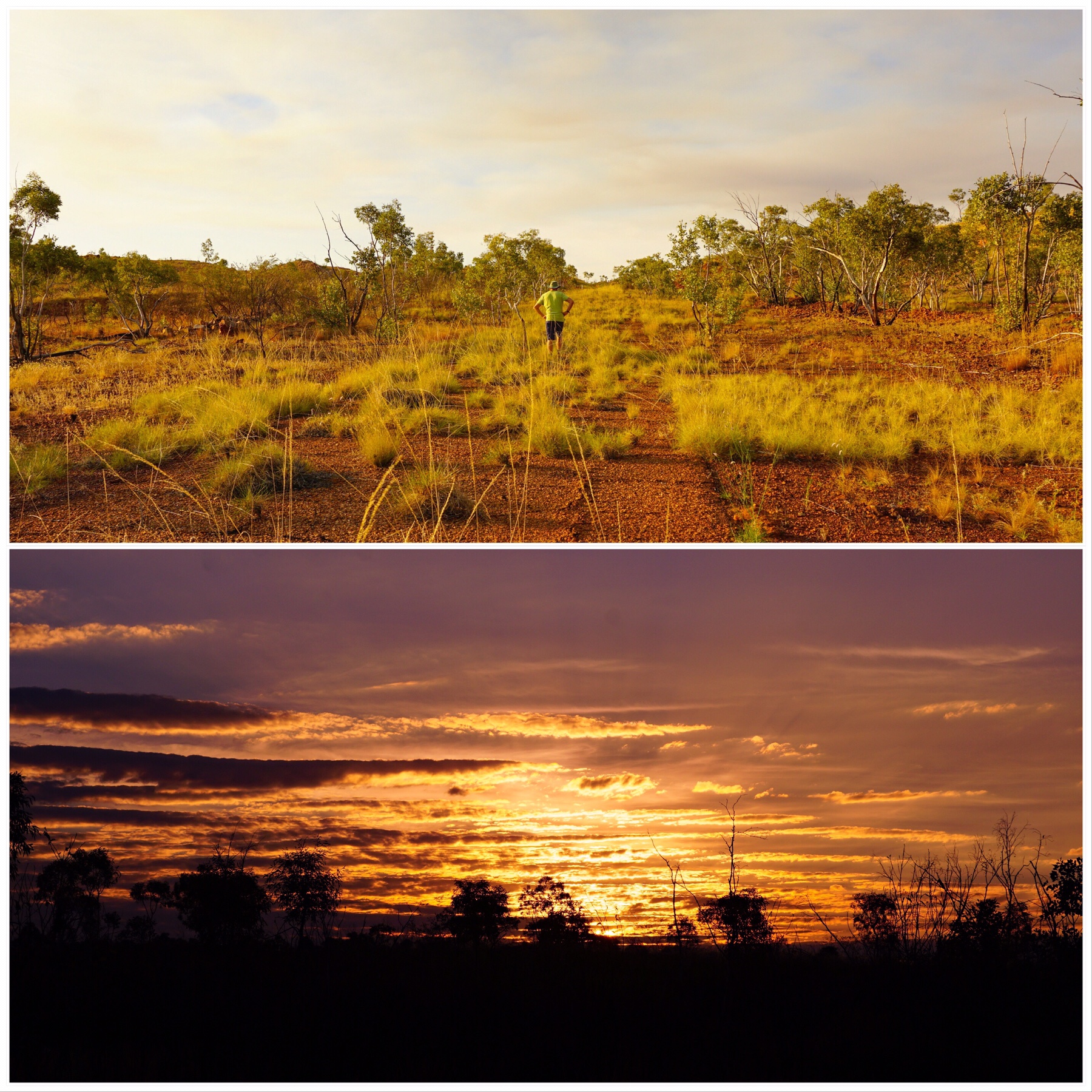

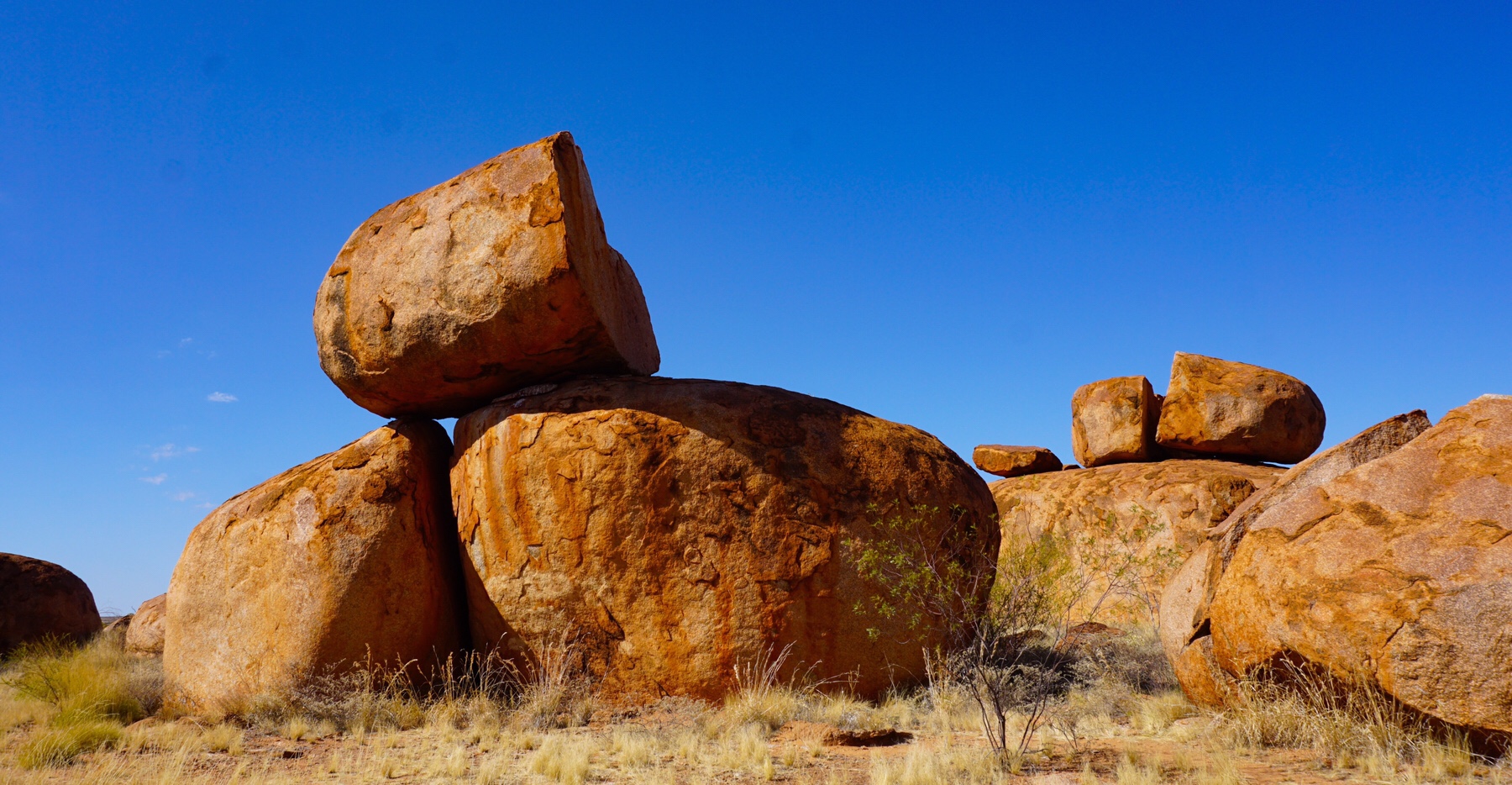
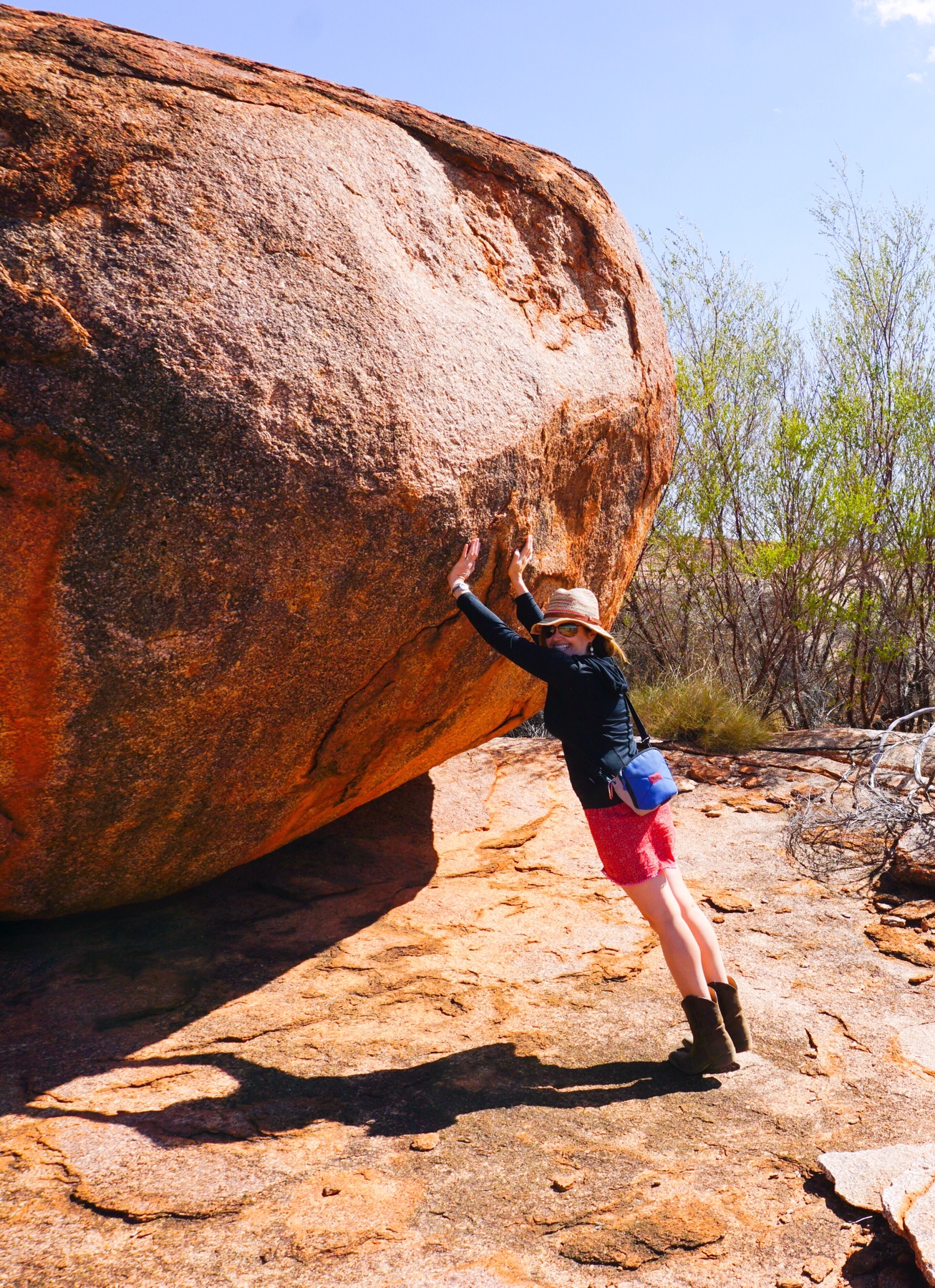
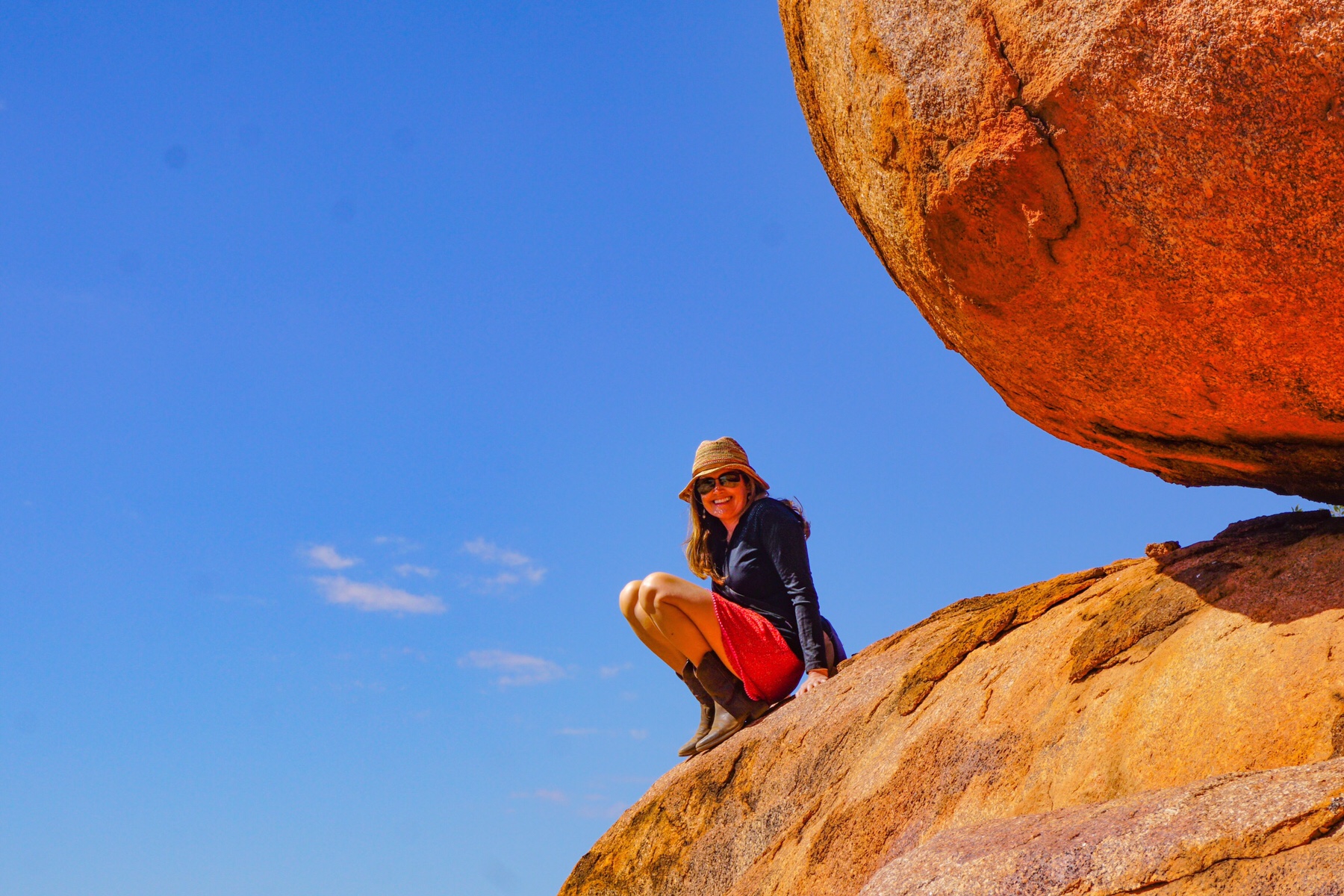
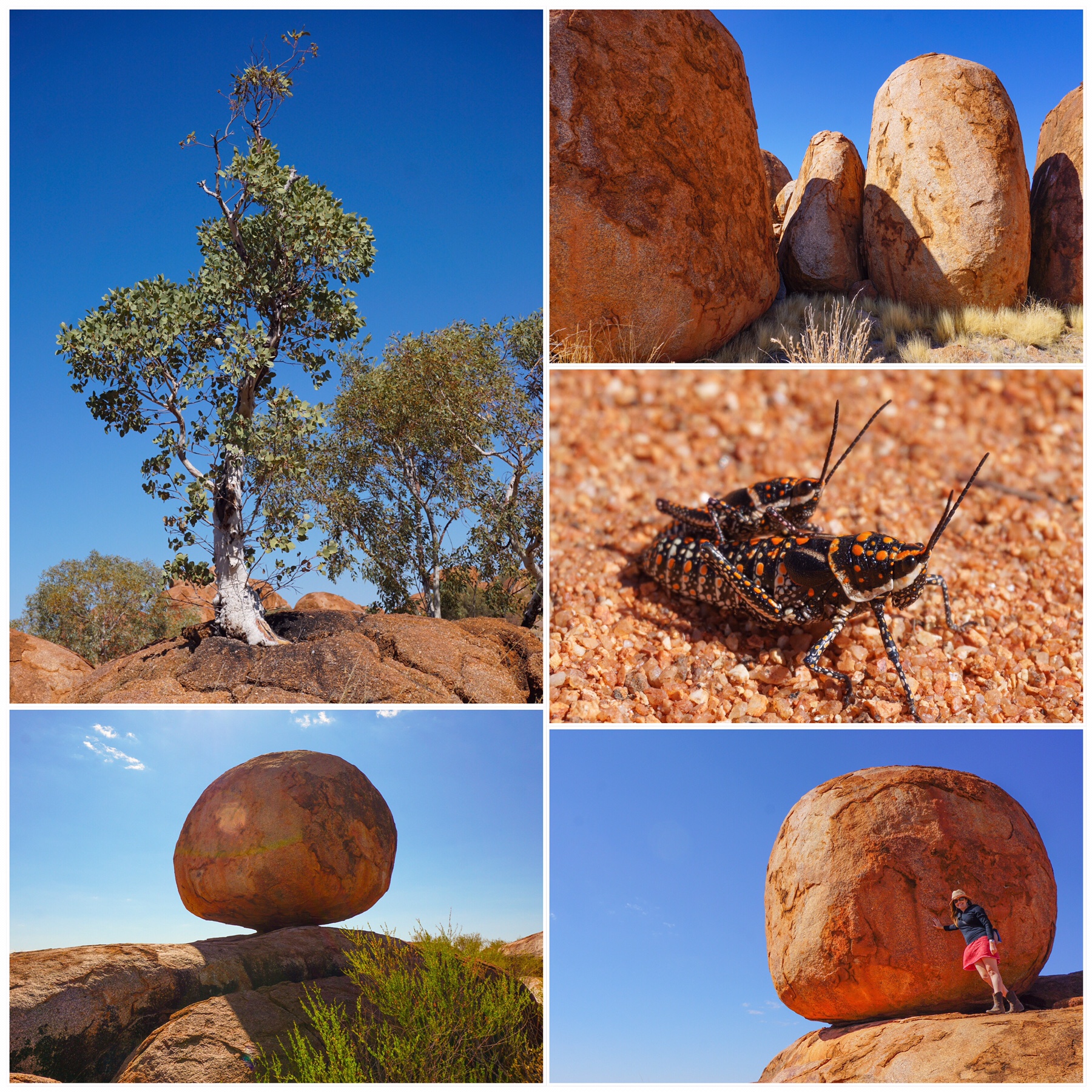 Then after lunch we were through Tenant Creek, only stopping for the dump point, and by late afternoon arriving at our camp for the night in a small service centre for the surrounding aboriginal communities called Ti-Tree. Guess what sort of trees grow here?
Then after lunch we were through Tenant Creek, only stopping for the dump point, and by late afternoon arriving at our camp for the night in a small service centre for the surrounding aboriginal communities called Ti-Tree. Guess what sort of trees grow here? It was blissfully peaceful on Monday afternoon, in stark comparison to Friday afternoon when I had cycled over to find it absolutely full – later finding out Friday was a public holiday in Darwin, which explains the crowds.
It was blissfully peaceful on Monday afternoon, in stark comparison to Friday afternoon when I had cycled over to find it absolutely full – later finding out Friday was a public holiday in Darwin, which explains the crowds.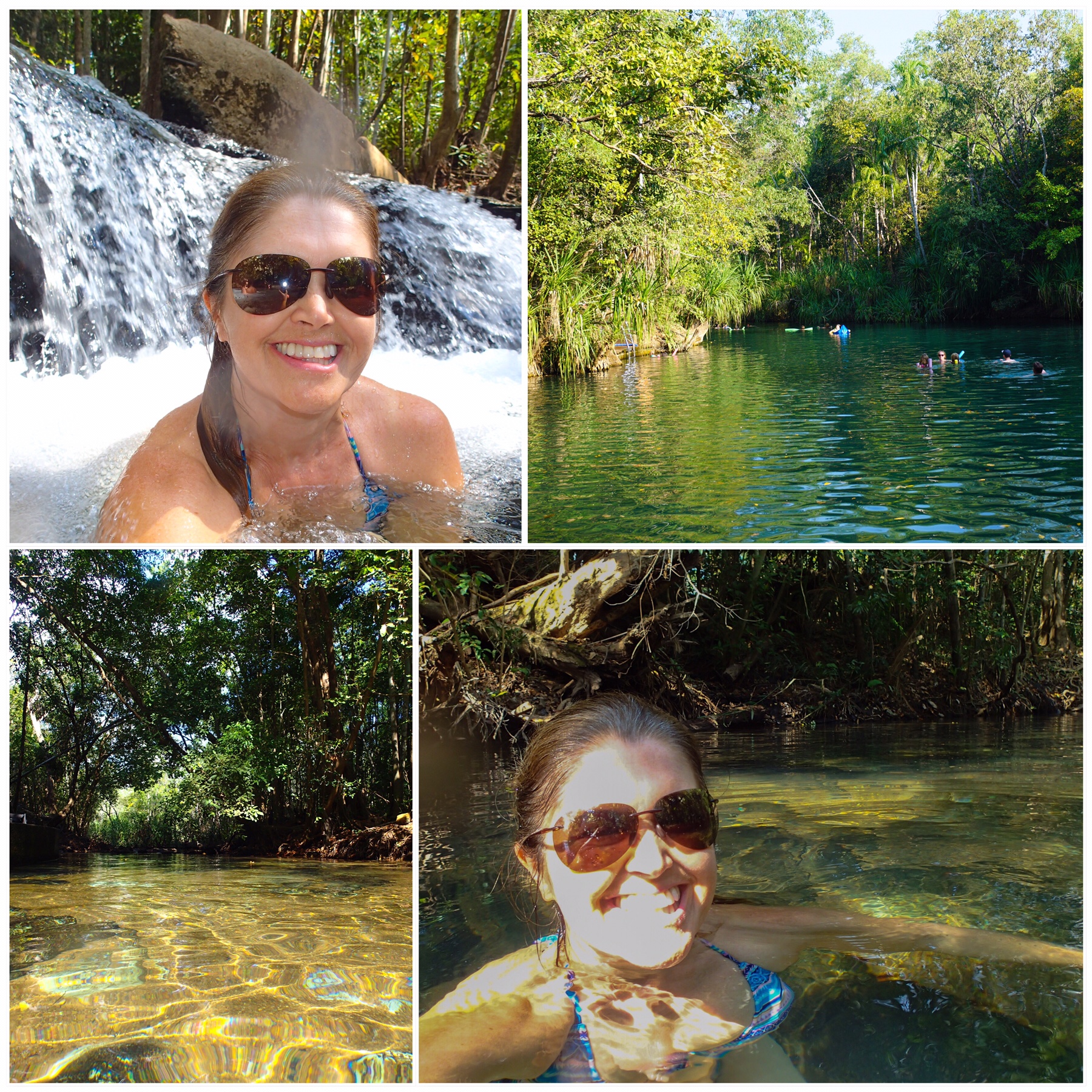 Berry Springs consists of a series of pools, starting at the waterfall, fed by crystal clear springs. I enjoyed a nice shoulder massage as the water crashed over the rocks, before swimming along the creek to the main pool and lower pool. The pools are quite large and deep, ideal for swimming, kept topped up by a weir. Apparently below the weir is crocodile country, so I stayed clear from there!
Berry Springs consists of a series of pools, starting at the waterfall, fed by crystal clear springs. I enjoyed a nice shoulder massage as the water crashed over the rocks, before swimming along the creek to the main pool and lower pool. The pools are quite large and deep, ideal for swimming, kept topped up by a weir. Apparently below the weir is crocodile country, so I stayed clear from there!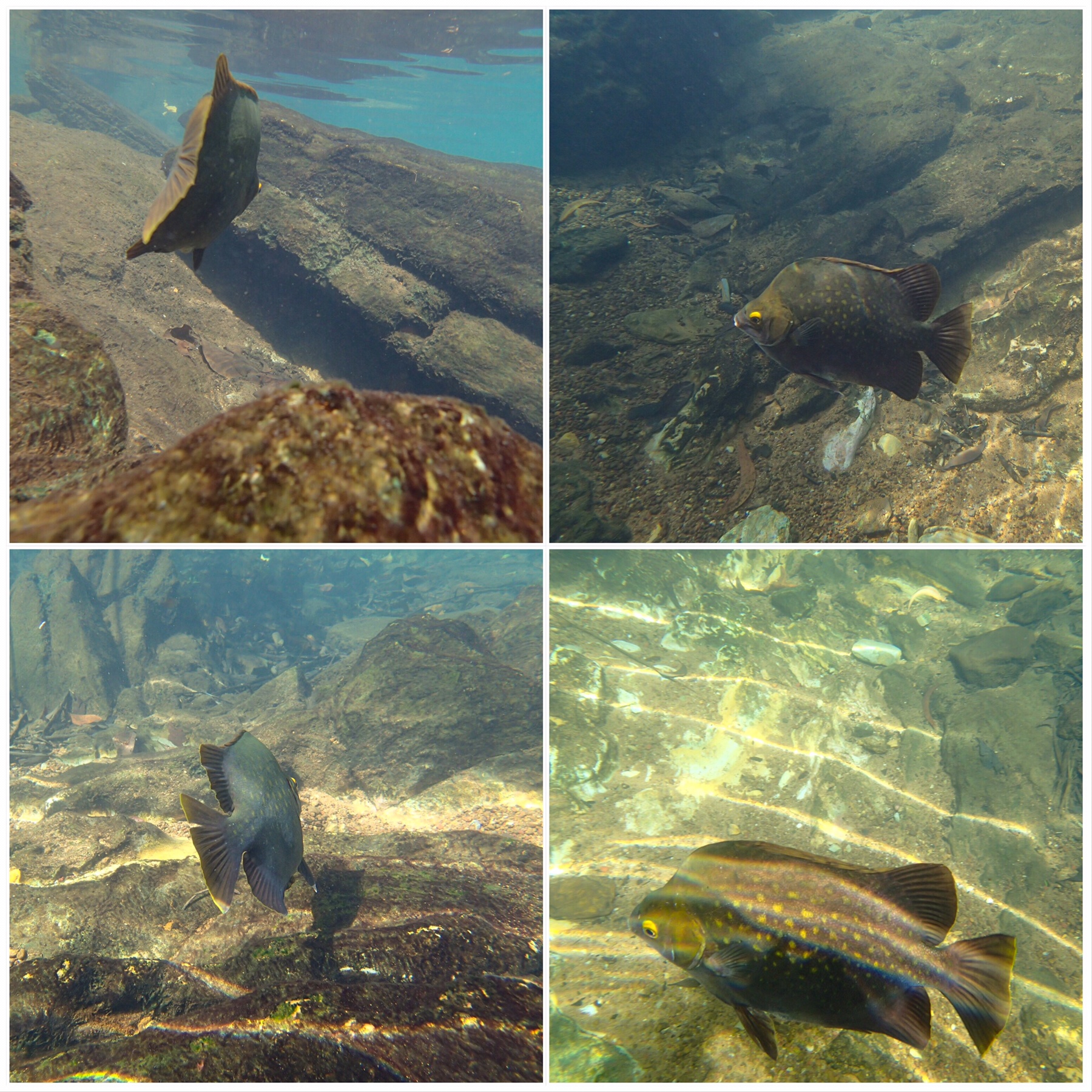 The water is a beautiful temperature.
The water is a beautiful temperature.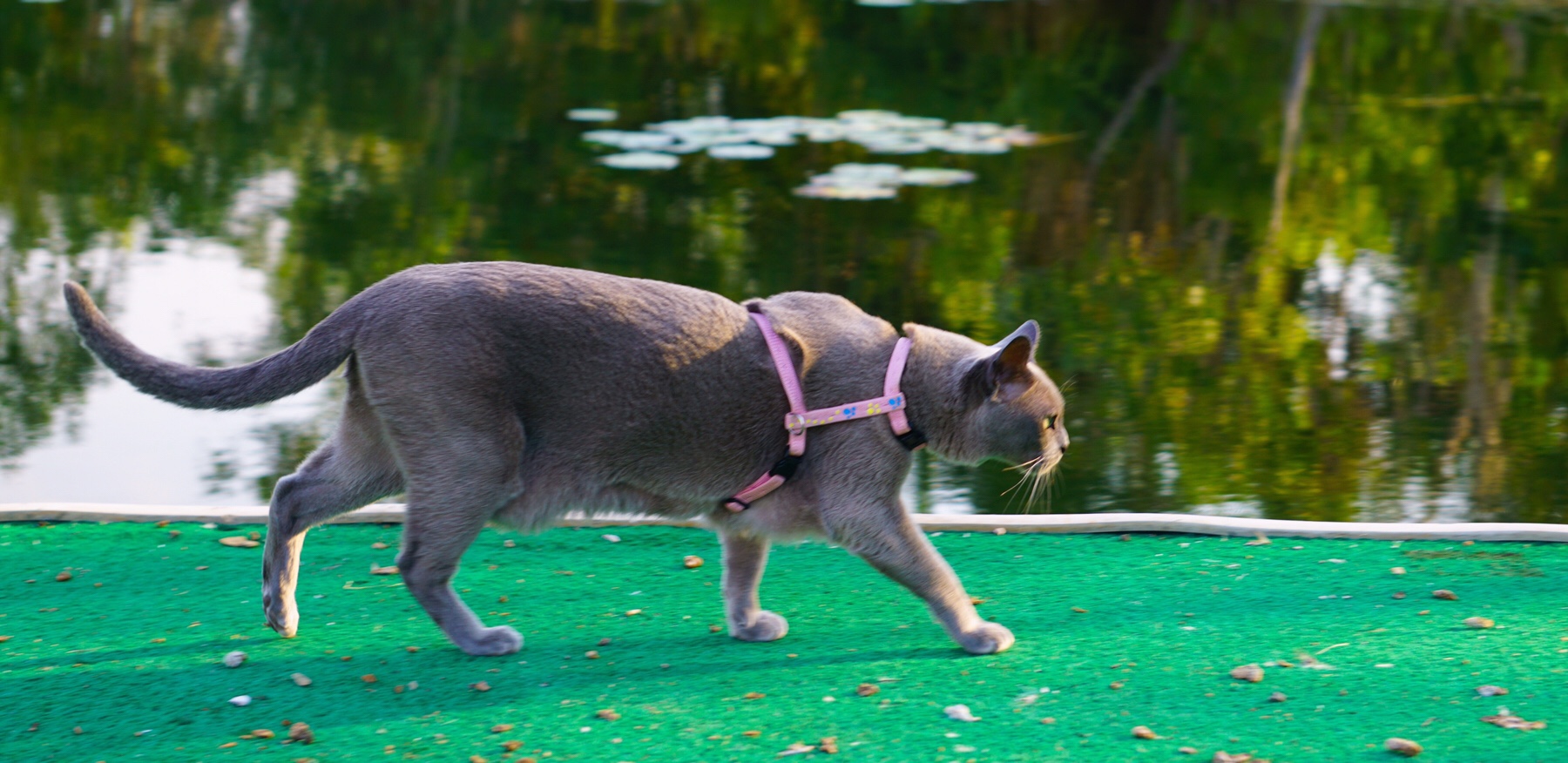 Miss Tassie particularly enjoys the pontoon over the water – firstly because there are no canines around, but secondly I think it reminds her of our swimming pool at home. She usually likes to lie beside that, and has similar feelings about our local lake. I accompanied her each evening for our private sunset viewing.
Miss Tassie particularly enjoys the pontoon over the water – firstly because there are no canines around, but secondly I think it reminds her of our swimming pool at home. She usually likes to lie beside that, and has similar feelings about our local lake. I accompanied her each evening for our private sunset viewing.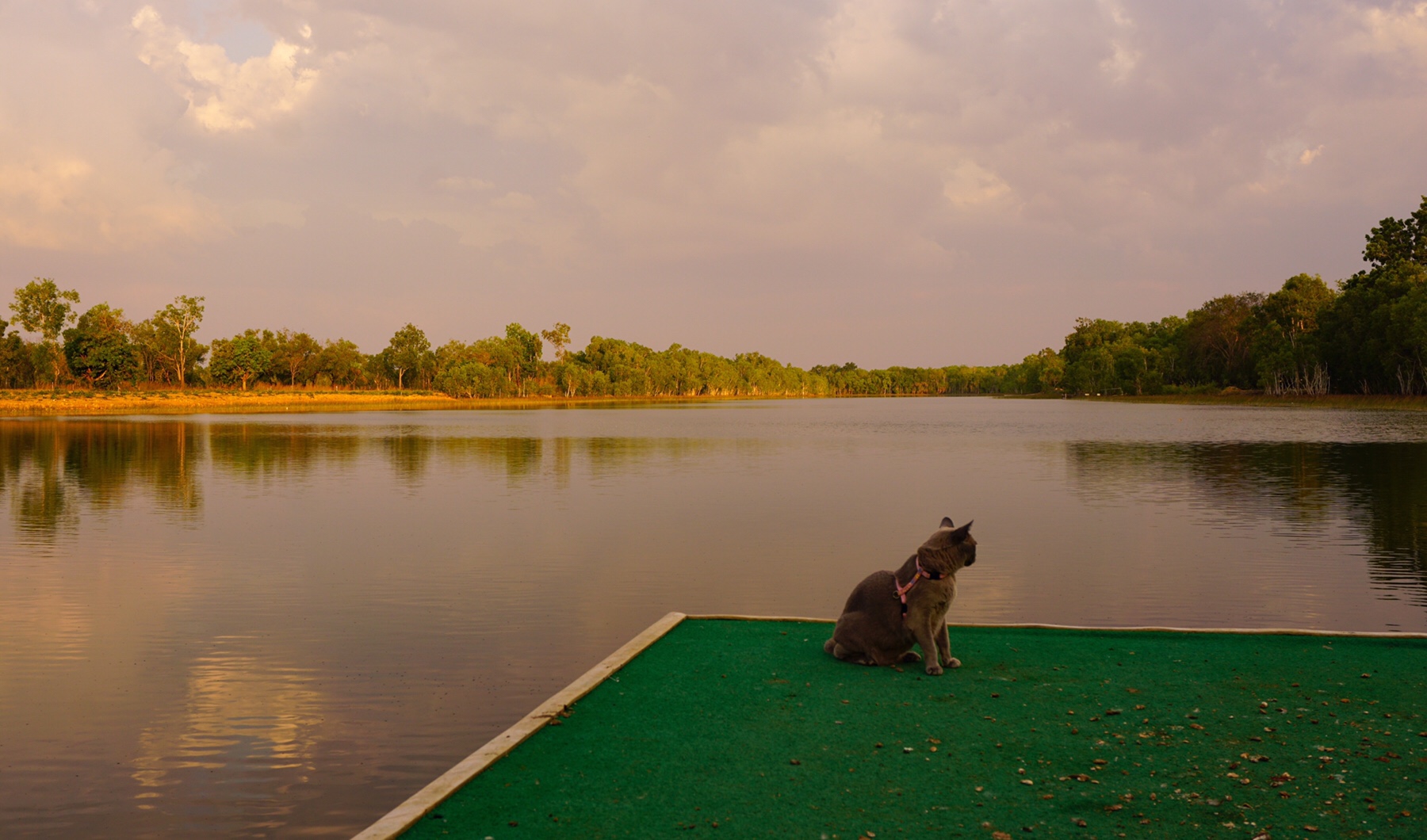
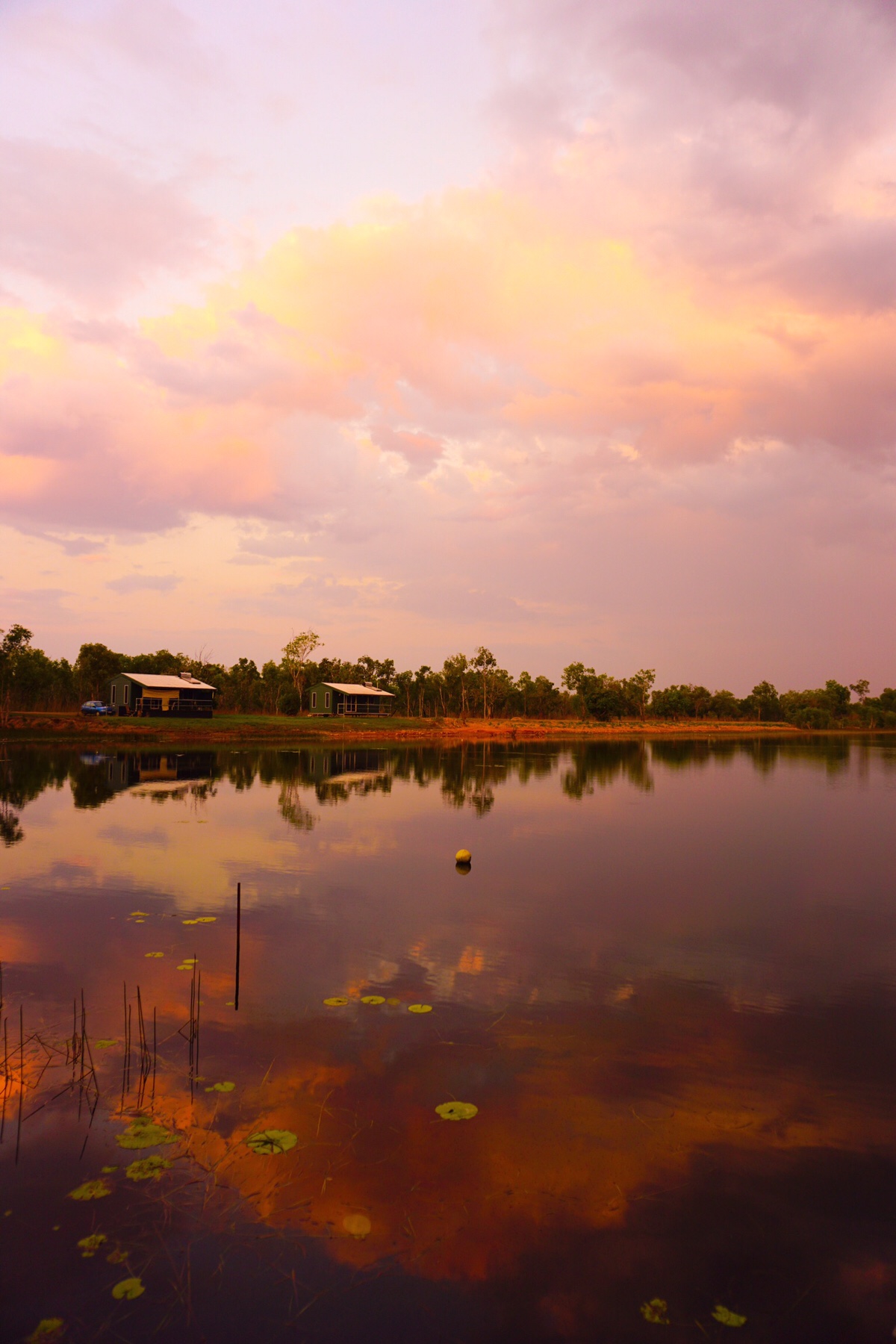
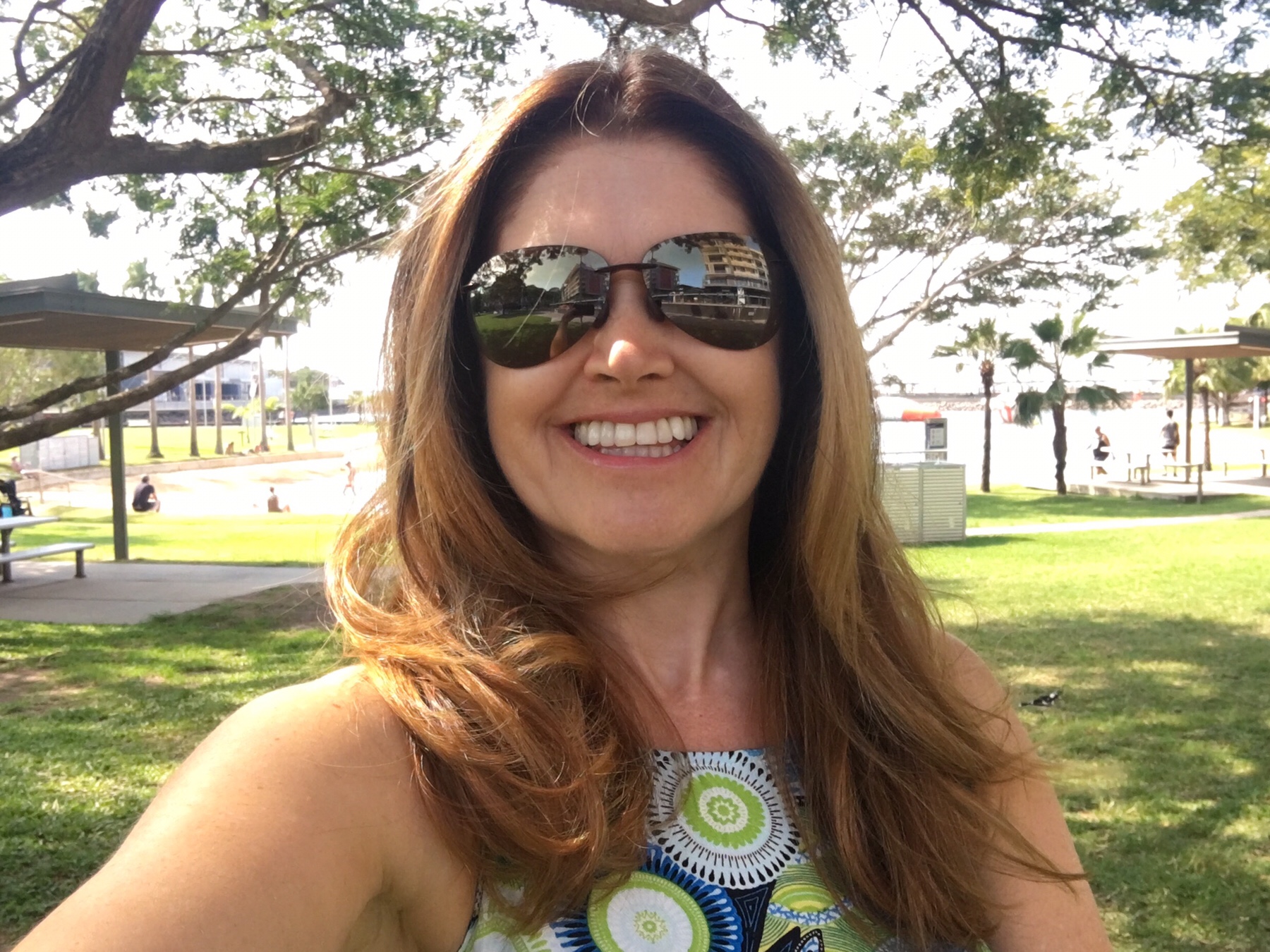 I had a brief moment of blow-dried glamour down by the Darwin waterfront, before the humidity made any semblance of bounce drop and the breeze blew the last bits out. Why do hairdressers never believe me when I say their bouncy blow dry is unlikely to make it back to the car, let alone beyond the next 20 minutes?
I had a brief moment of blow-dried glamour down by the Darwin waterfront, before the humidity made any semblance of bounce drop and the breeze blew the last bits out. Why do hairdressers never believe me when I say their bouncy blow dry is unlikely to make it back to the car, let alone beyond the next 20 minutes?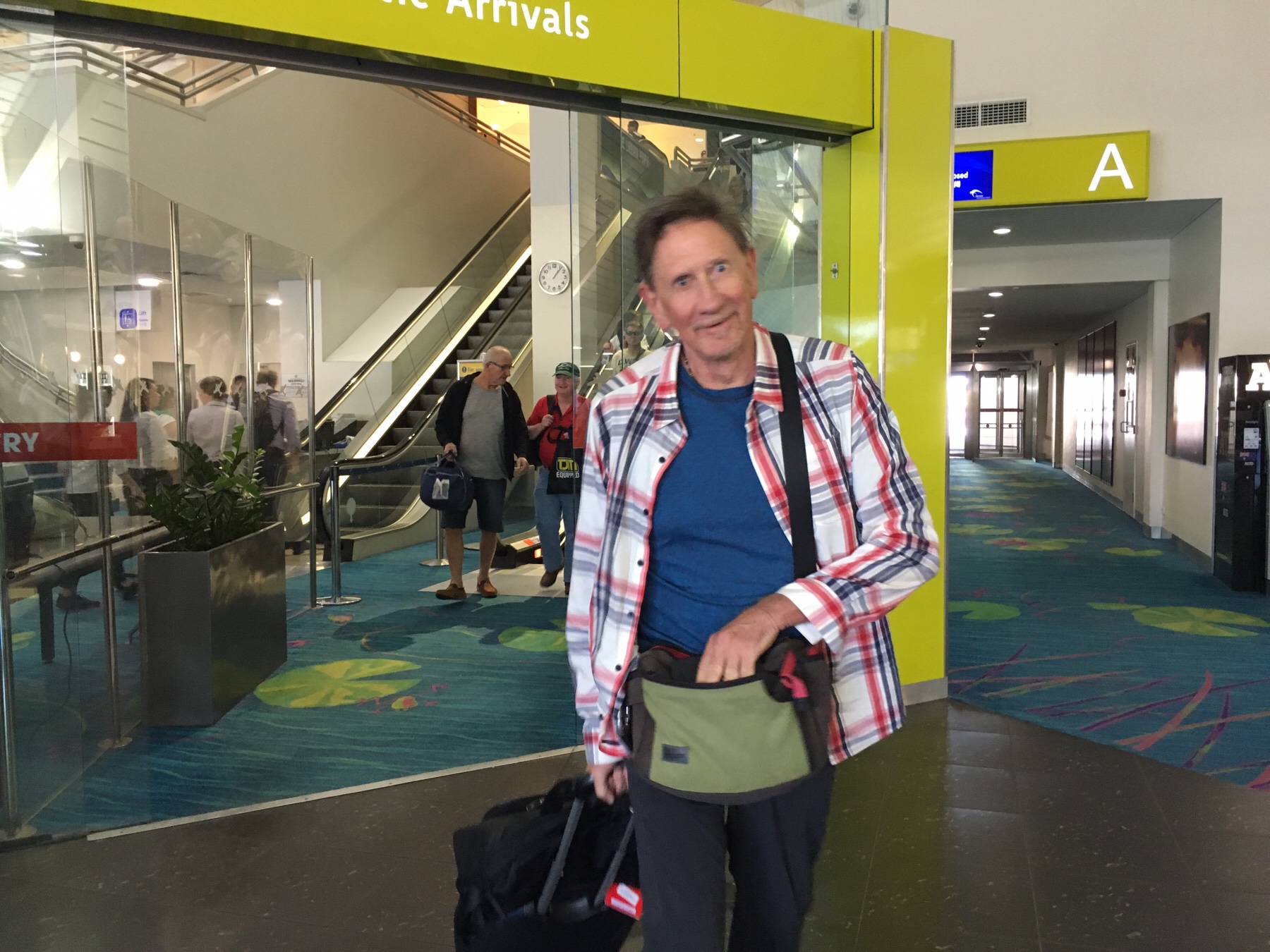 Mark arrived safe and sound after his long journey – a little frazzled having left his friends’ house in the UK 40 hours ago, and having travelled by three trains and three planes to finally reach this spot. Still, all flights had left and arrived to schedule so no complaints. All went as well as could be expected on his trip, and he really appreciates all the messages of condolence he has received.
Mark arrived safe and sound after his long journey – a little frazzled having left his friends’ house in the UK 40 hours ago, and having travelled by three trains and three planes to finally reach this spot. Still, all flights had left and arrived to schedule so no complaints. All went as well as could be expected on his trip, and he really appreciates all the messages of condolence he has received.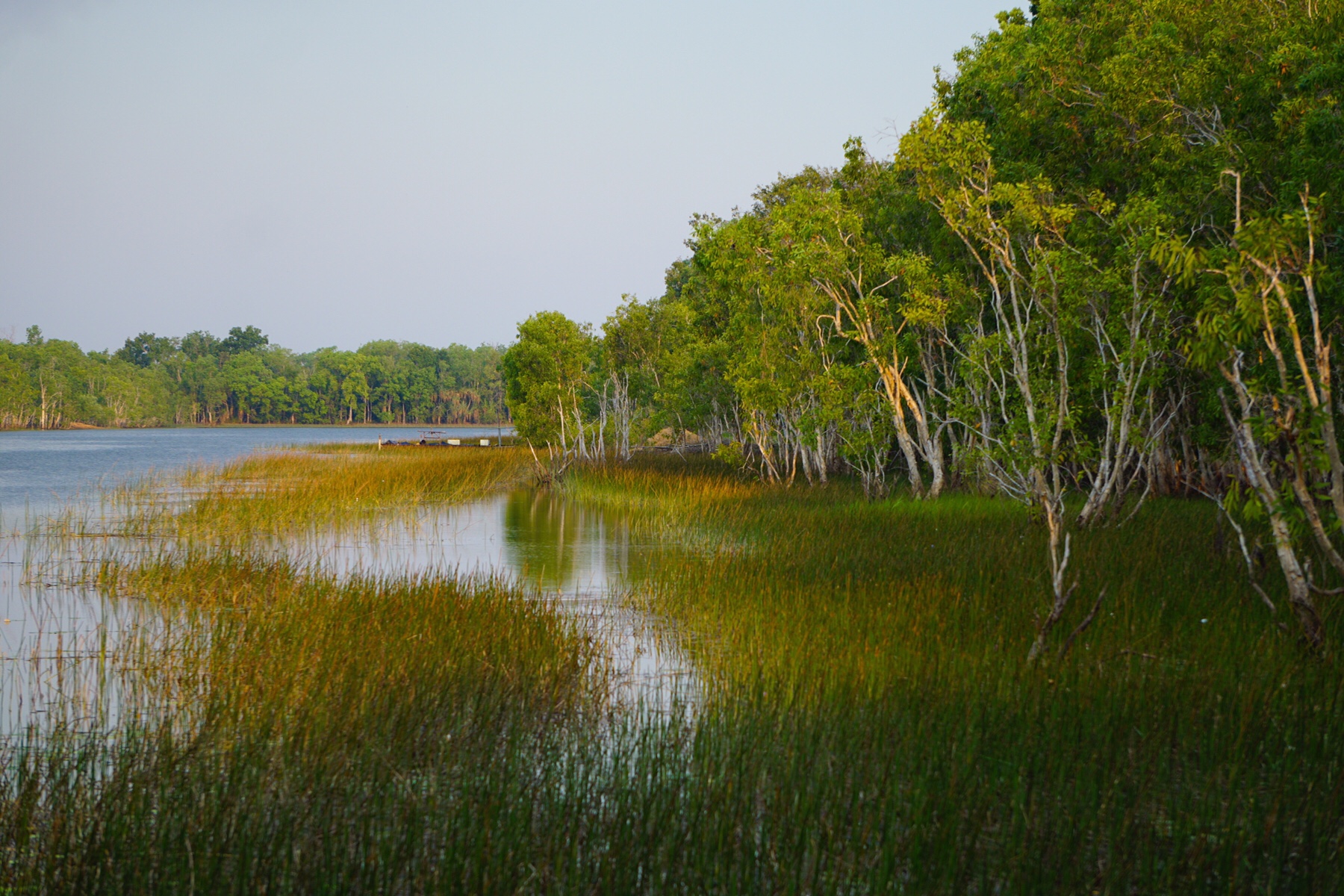
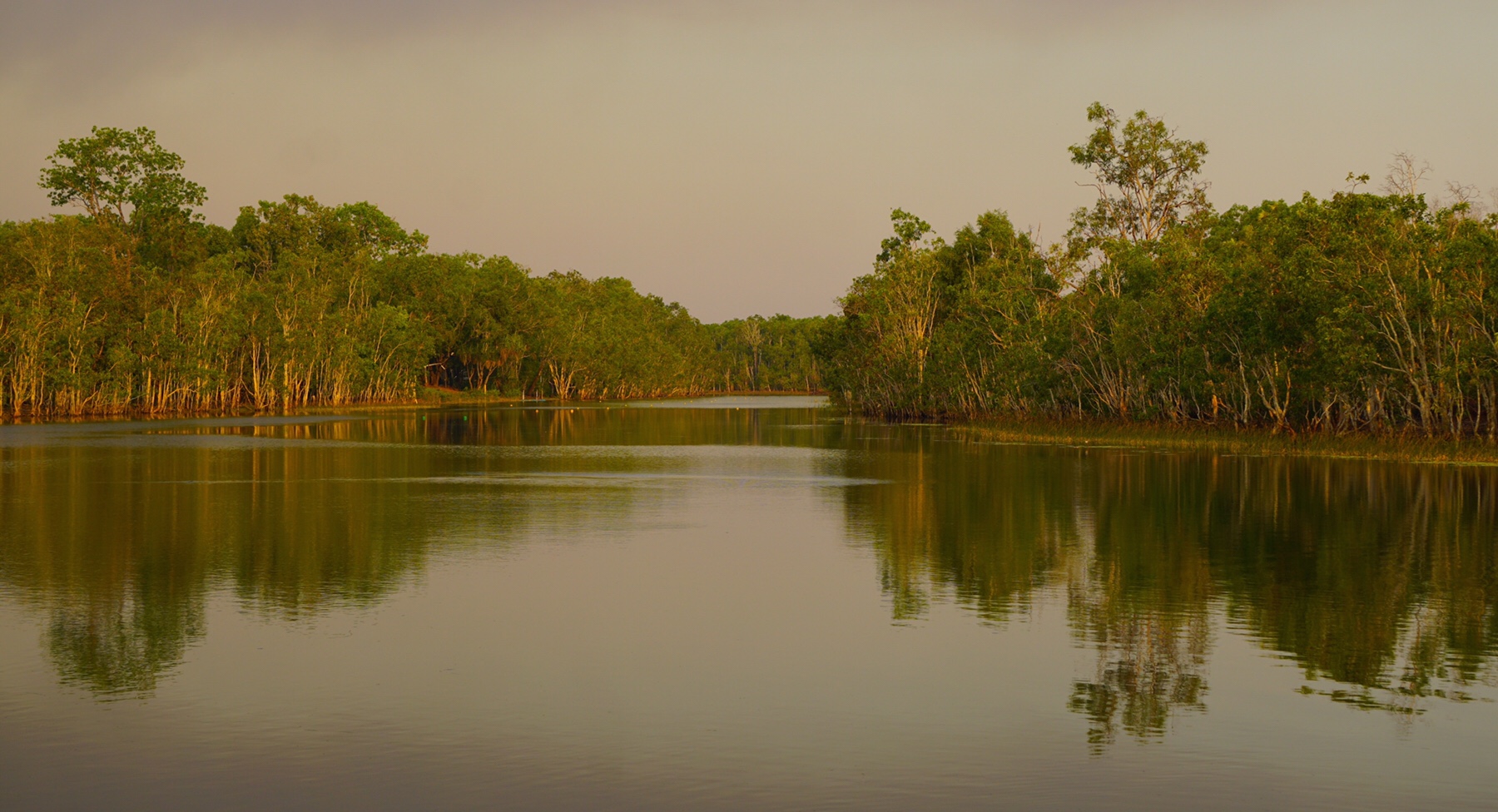 Checking in for 10 days, I believe we have one of the best sites in the park. Nice and shady, grassy with no neighbours for about 15 metres.
Checking in for 10 days, I believe we have one of the best sites in the park. Nice and shady, grassy with no neighbours for about 15 metres. 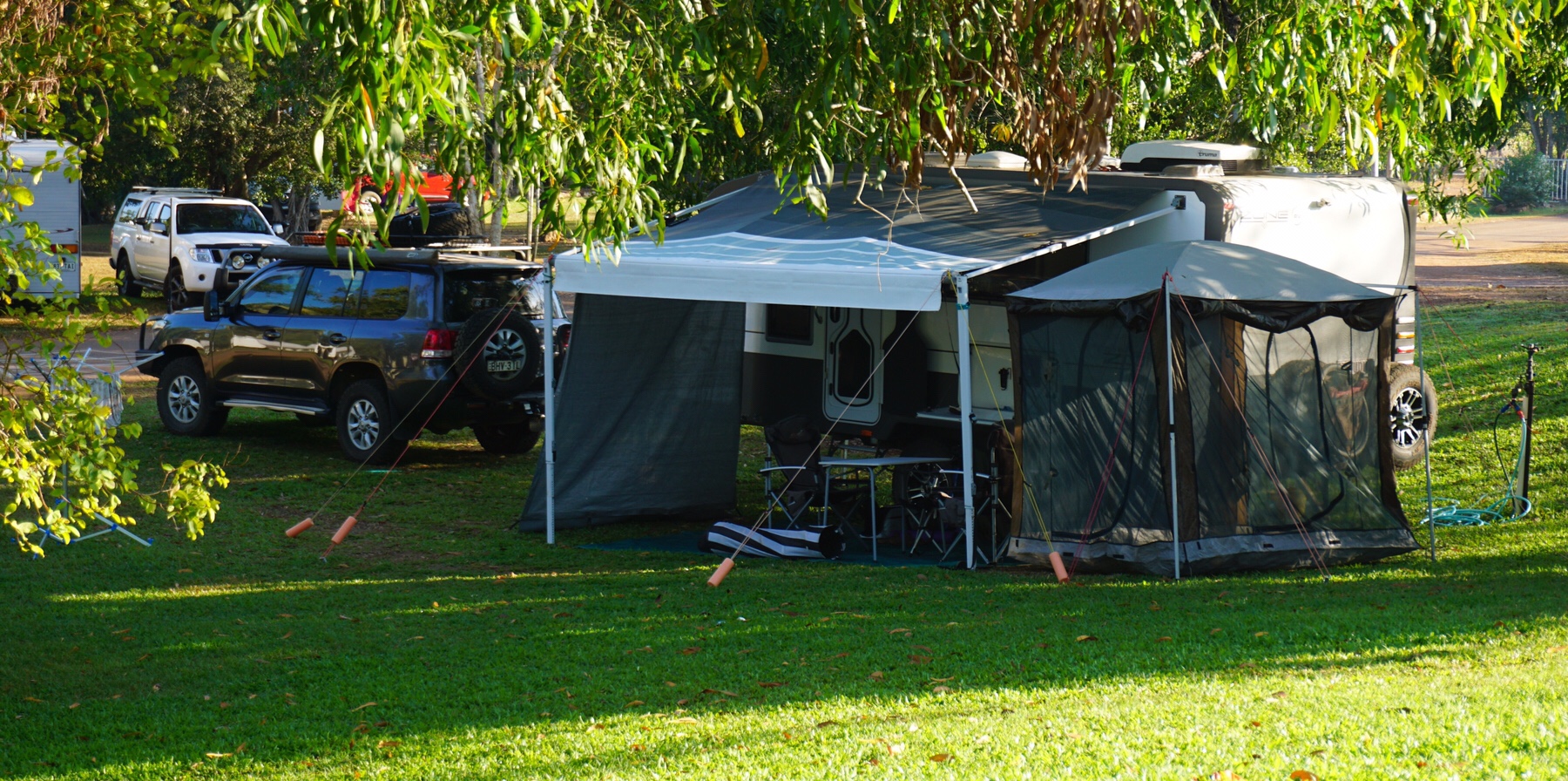 Better still, we had barely set up when the campground managers came over with three boxes of wine – our Vinomofo and Ross Hill deliveries have made it safely. Sadly the Tscharke wine delivery made it in a leaking crumpled mess to the Berry Springs Post Office with just enough time for the courier to photograph it and then take it away again. Will we ever get to try this wine? Third time lucky we hope…
Better still, we had barely set up when the campground managers came over with three boxes of wine – our Vinomofo and Ross Hill deliveries have made it safely. Sadly the Tscharke wine delivery made it in a leaking crumpled mess to the Berry Springs Post Office with just enough time for the courier to photograph it and then take it away again. Will we ever get to try this wine? Third time lucky we hope…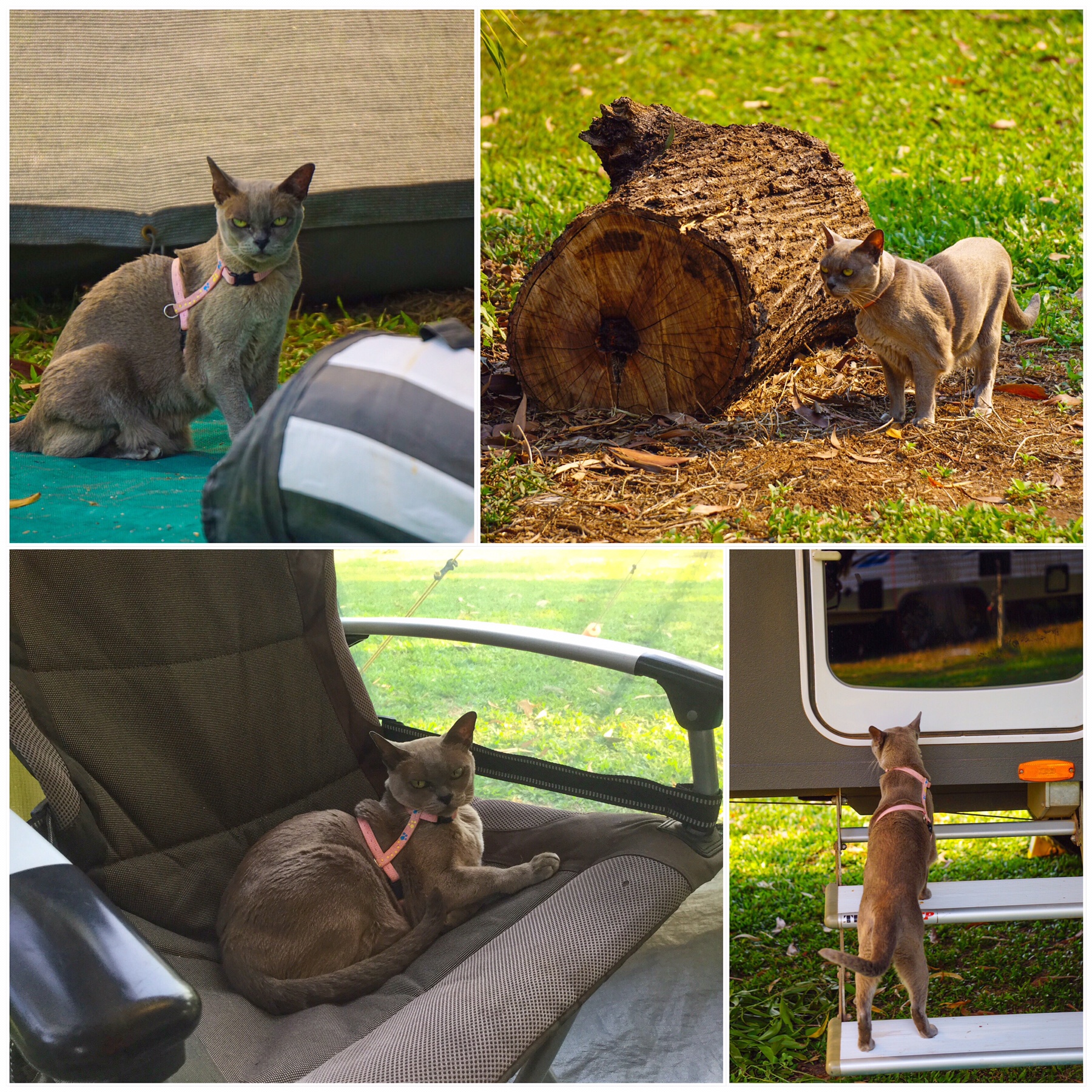
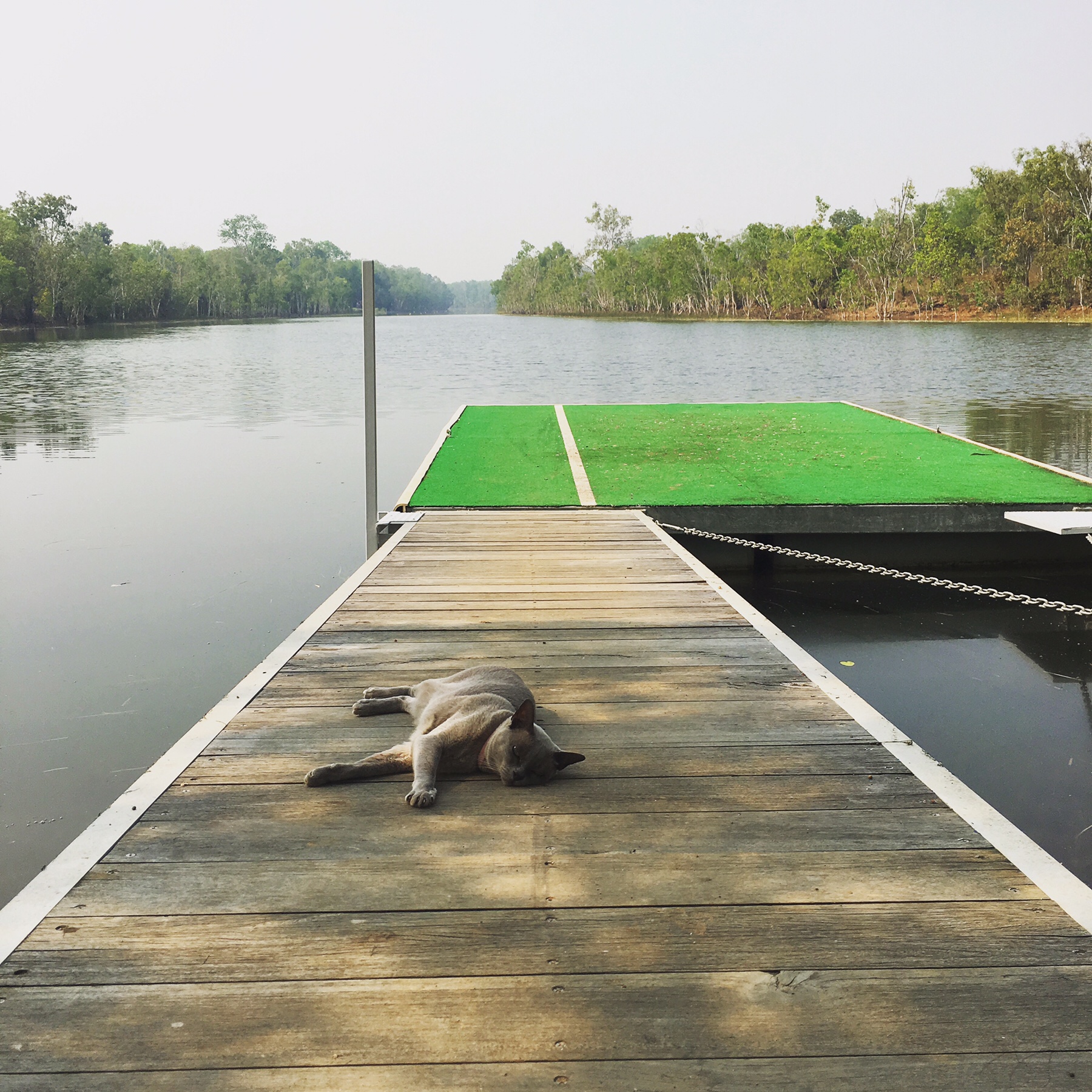

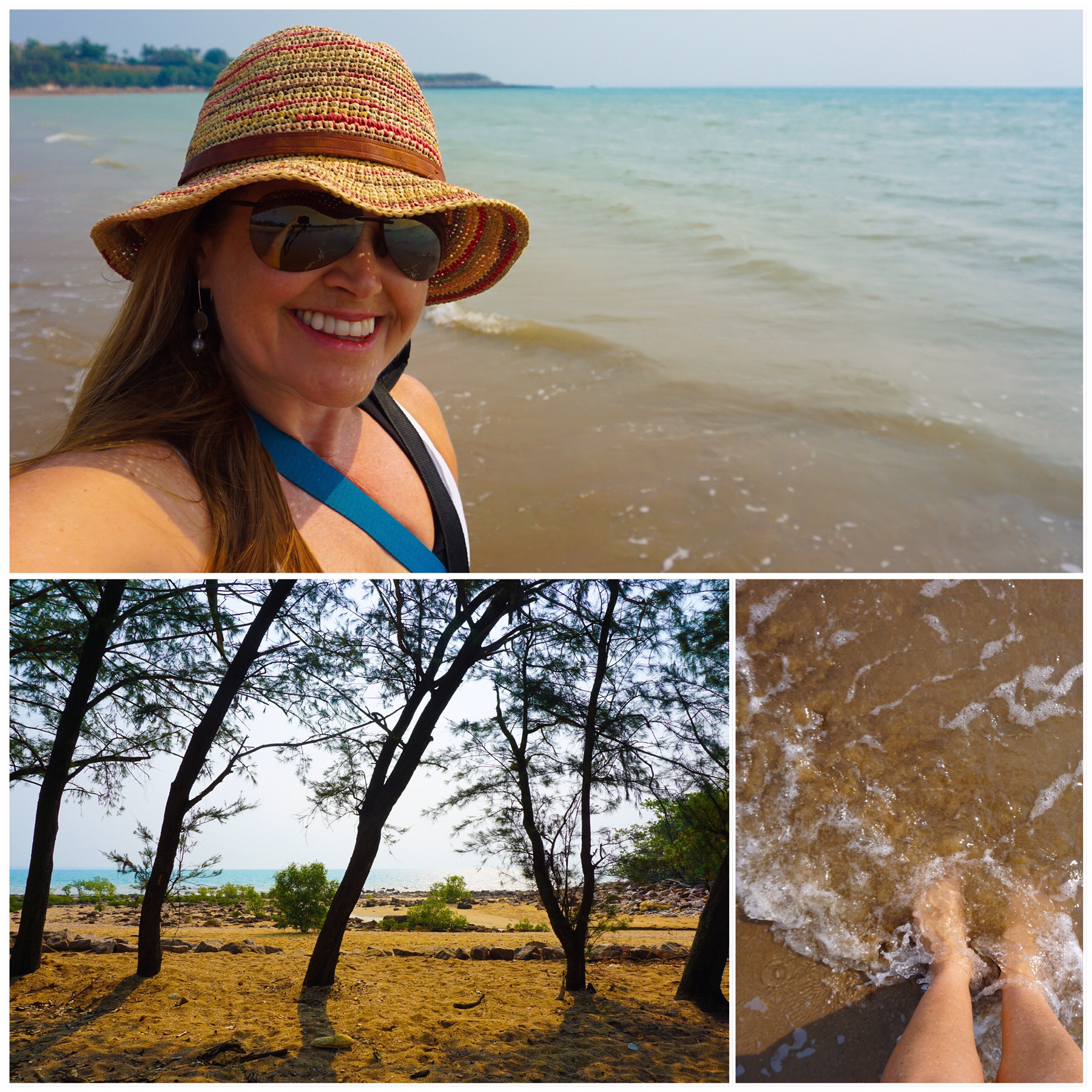
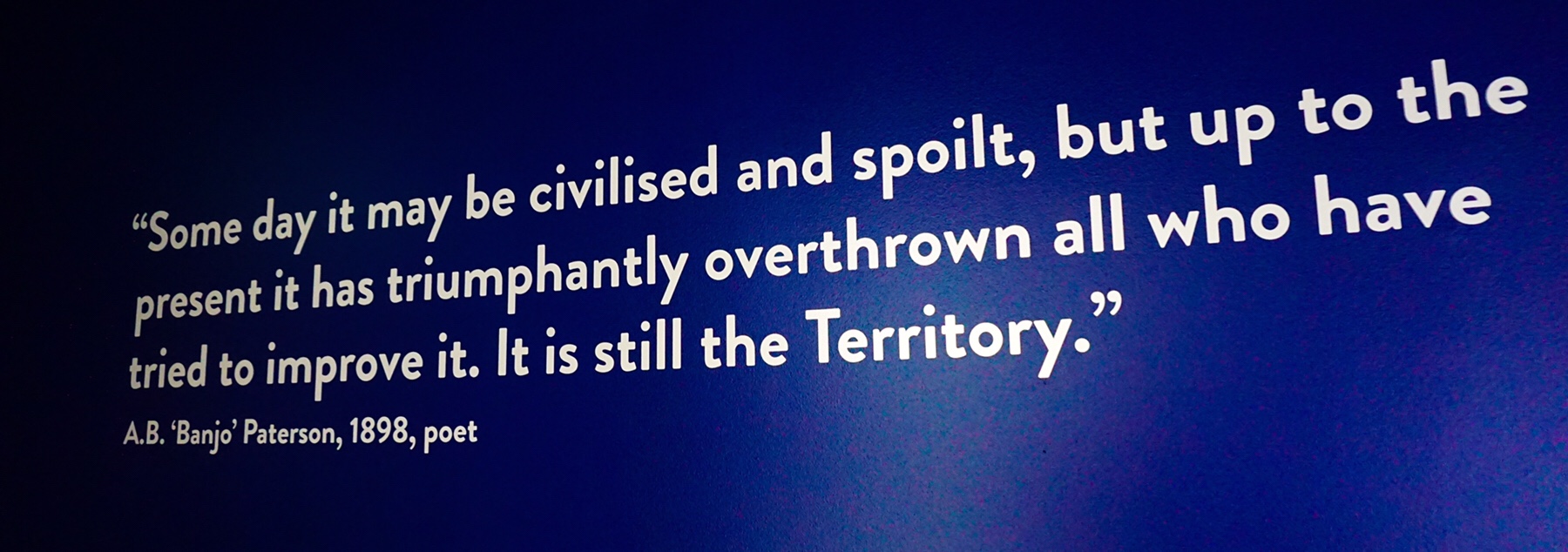 In the late 1800s and early 1900s, the Northern Territory was quite a tough and unruly place to live. The climate is challenging to say the least, and settlers trying to grow crops were also stymied by poor soils, high temperatures and rainfall followed by drought. Aboriginal people largely carried on their usual life, with some being employed by pastoralists and hotel operators, and as stockmen, hunters and laborers.
In the late 1800s and early 1900s, the Northern Territory was quite a tough and unruly place to live. The climate is challenging to say the least, and settlers trying to grow crops were also stymied by poor soils, high temperatures and rainfall followed by drought. Aboriginal people largely carried on their usual life, with some being employed by pastoralists and hotel operators, and as stockmen, hunters and laborers.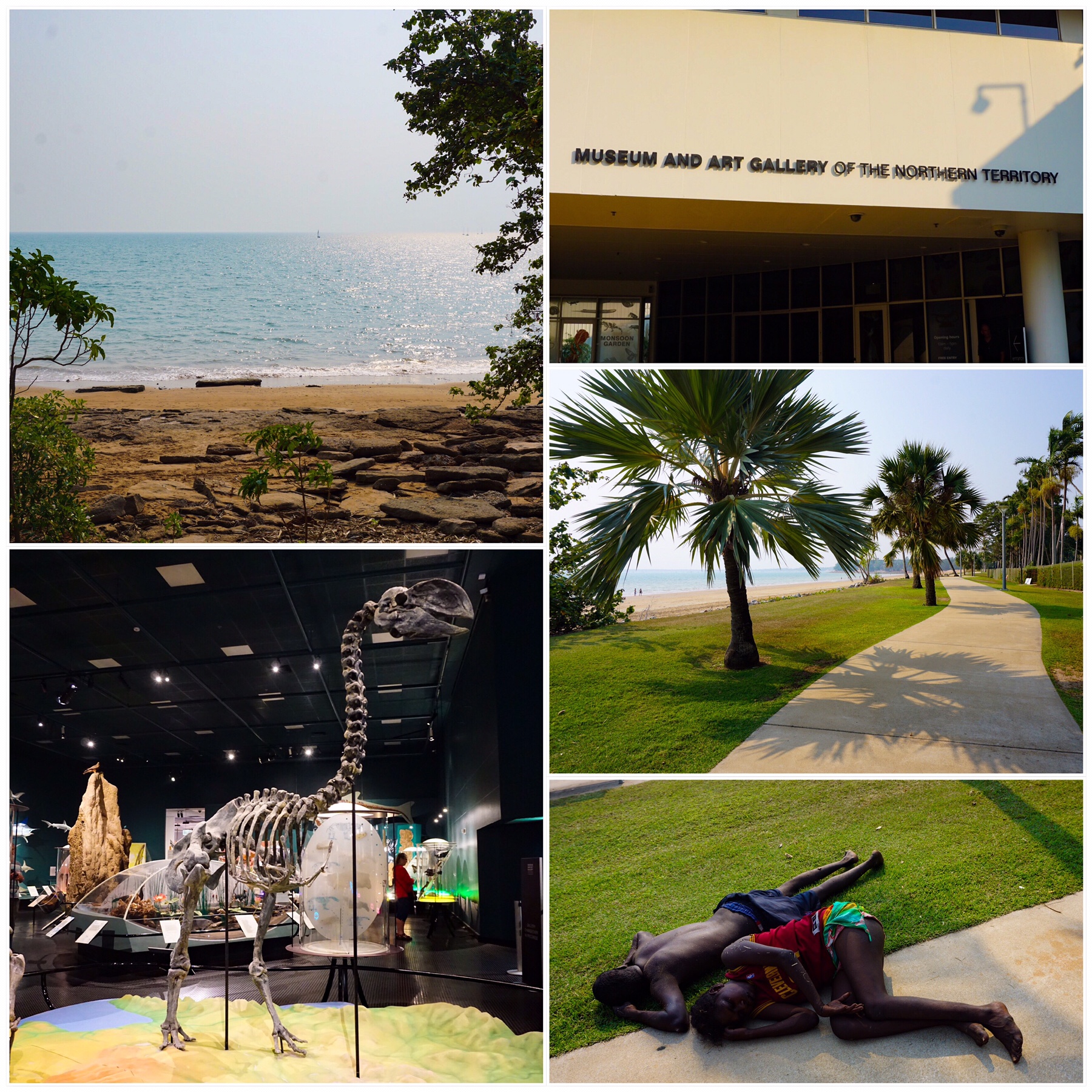 As you leave the museum and see young Aboriginal people sprawled drunk over the pavement, you see that it is now sadly alcohol addiction and a lack of sense of belonging which is killing them.
As you leave the museum and see young Aboriginal people sprawled drunk over the pavement, you see that it is now sadly alcohol addiction and a lack of sense of belonging which is killing them.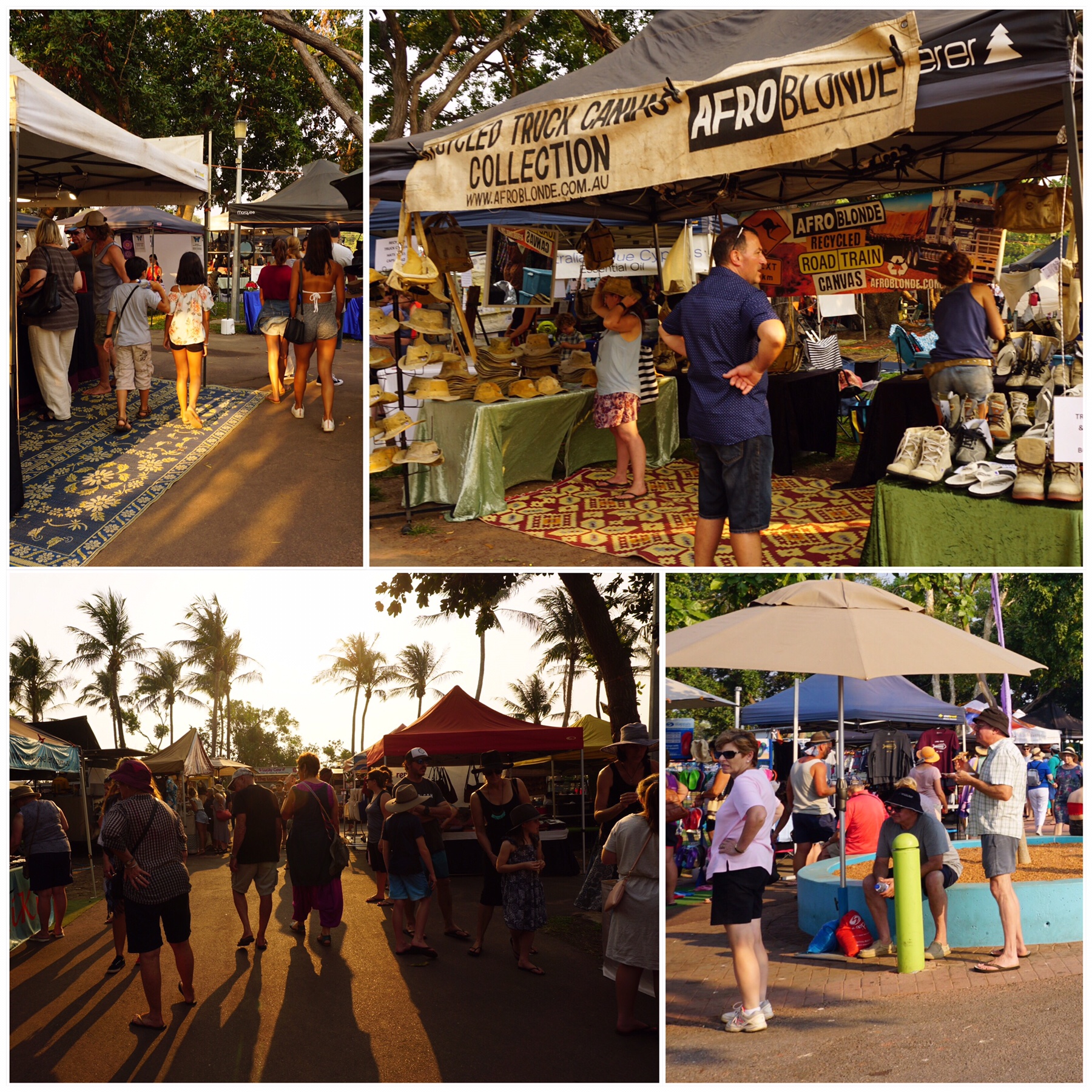 I had an early dinner and purchased a raw gluten-free, dairy-free cake (Mark’s worst nightmare!) as a treat for dessert before returning to Berry Springs for the evening.
I had an early dinner and purchased a raw gluten-free, dairy-free cake (Mark’s worst nightmare!) as a treat for dessert before returning to Berry Springs for the evening.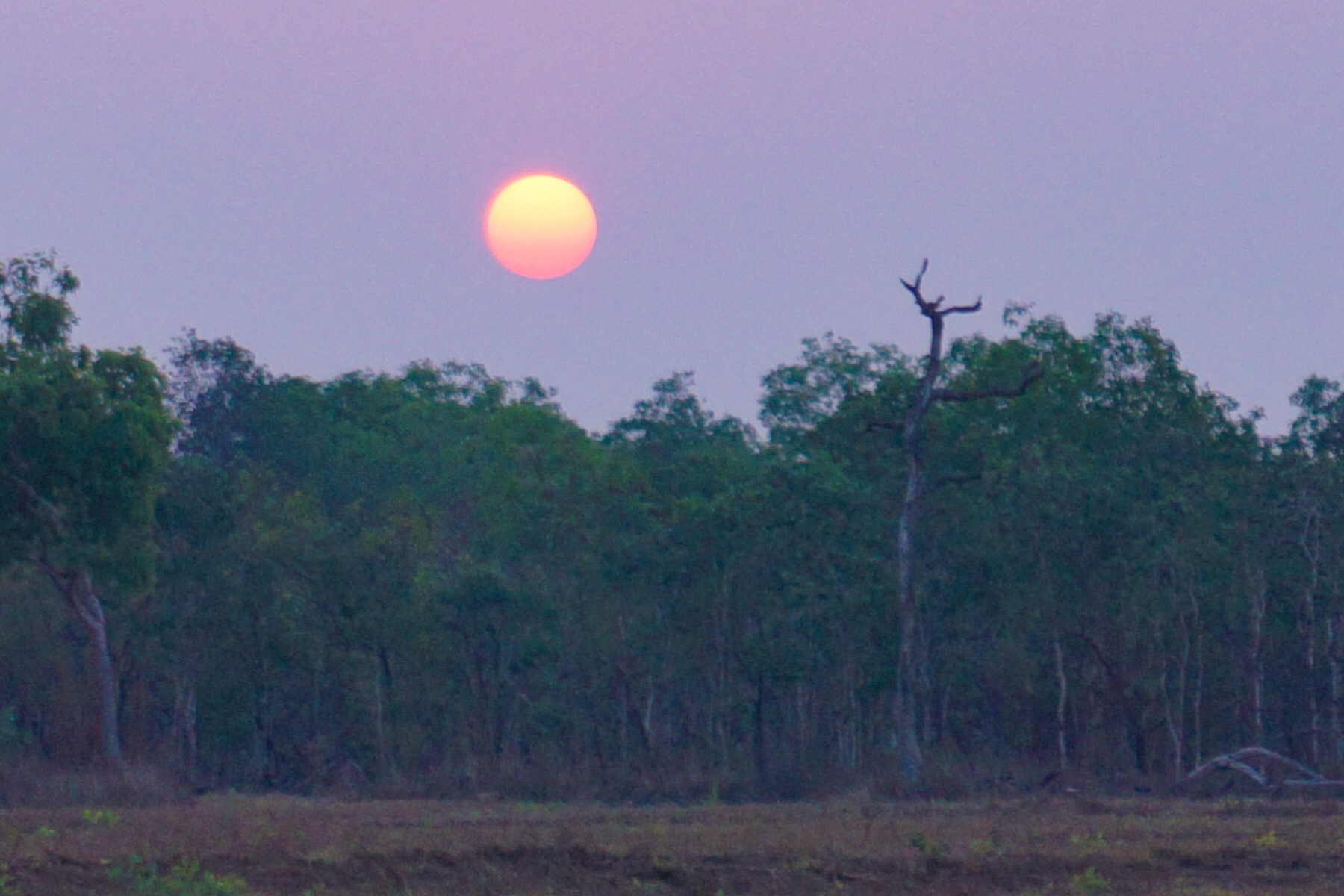
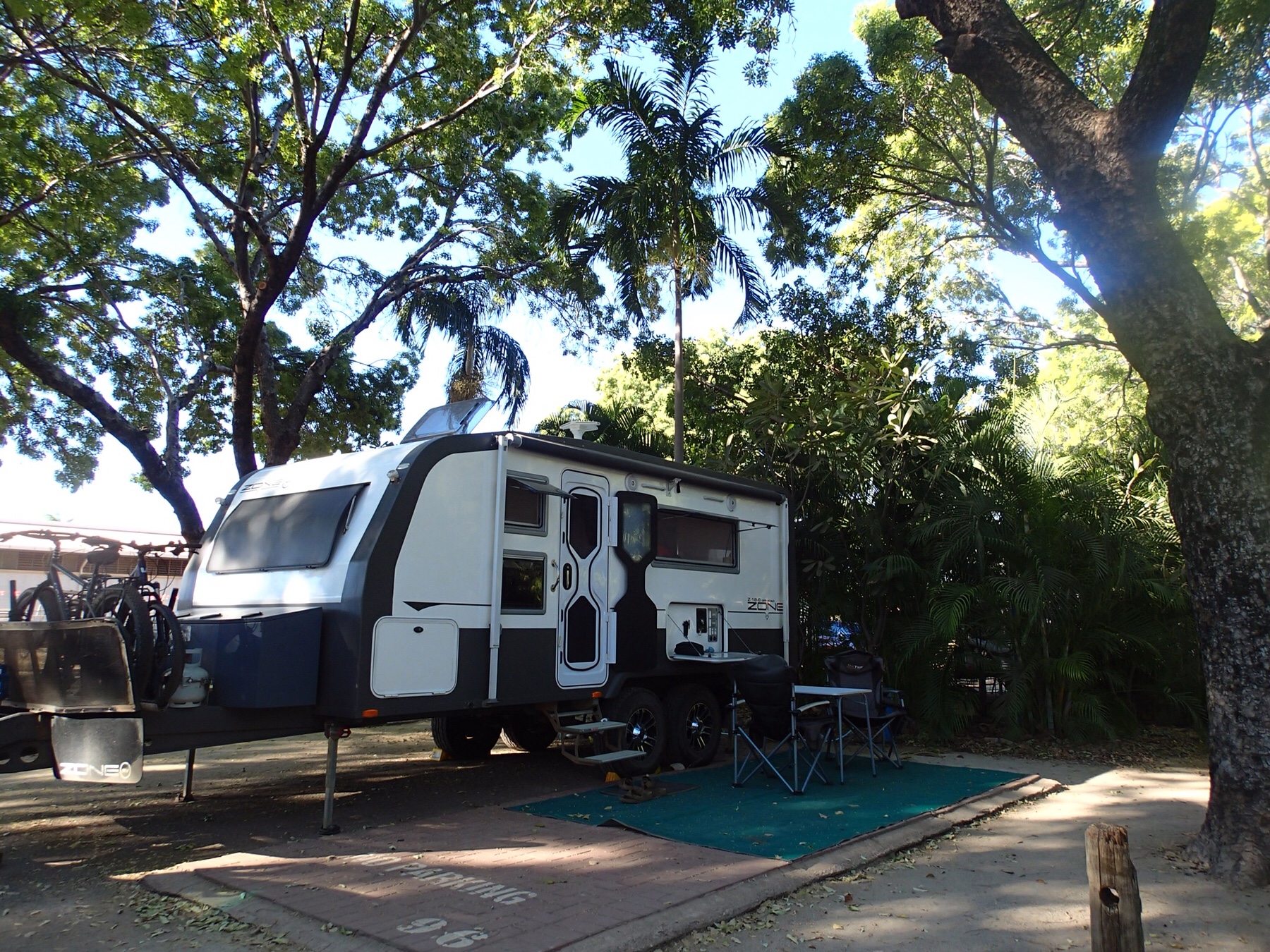 We set up under the shade of some of the tallest trees we have seen in a month, demonstrating just how much more water falls in these parts.
We set up under the shade of some of the tallest trees we have seen in a month, demonstrating just how much more water falls in these parts.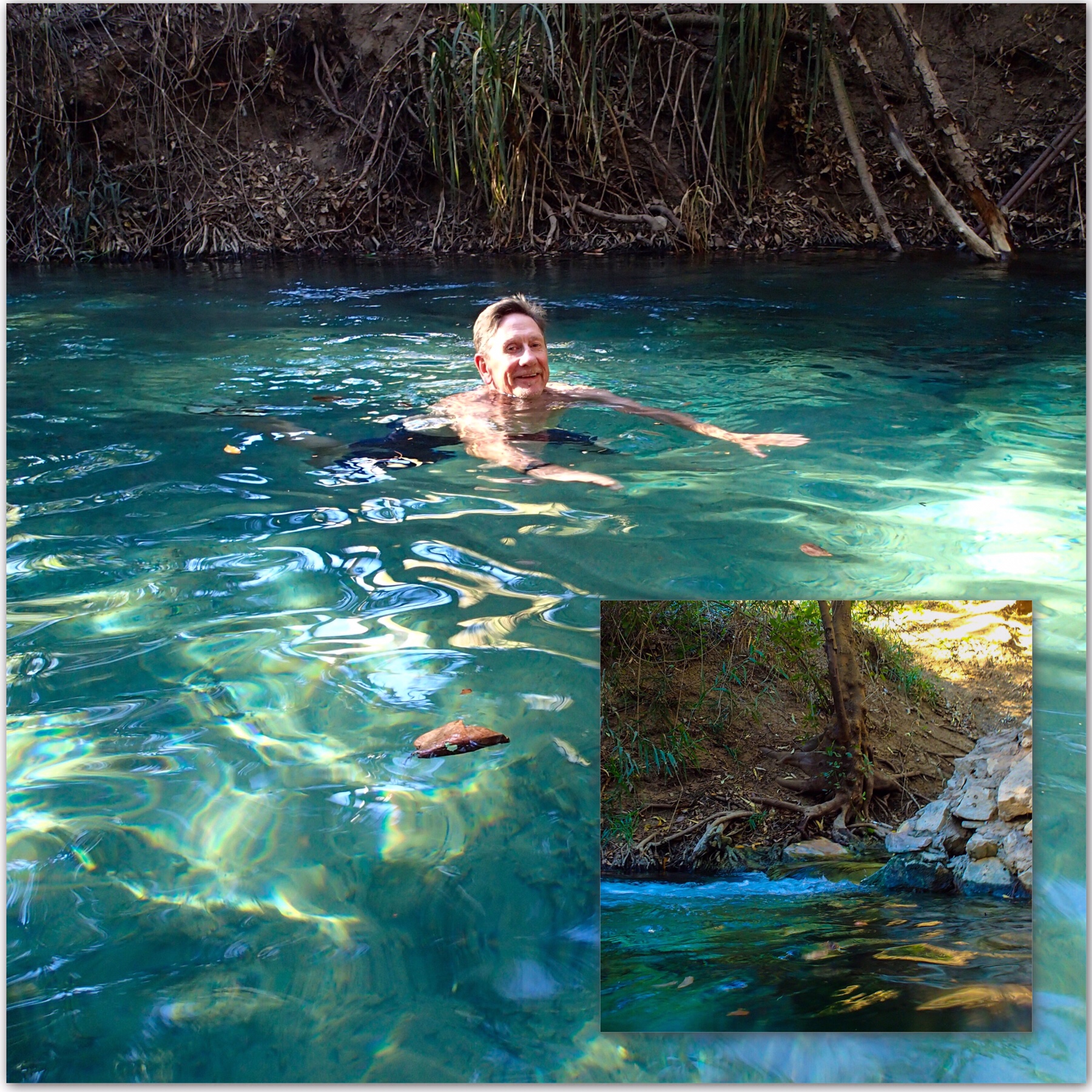 It was a small deep pool, but you could swim quite a bit due to the continuous strong current – a bit like a 33 degree centigrade swimming treadmill!
It was a small deep pool, but you could swim quite a bit due to the continuous strong current – a bit like a 33 degree centigrade swimming treadmill!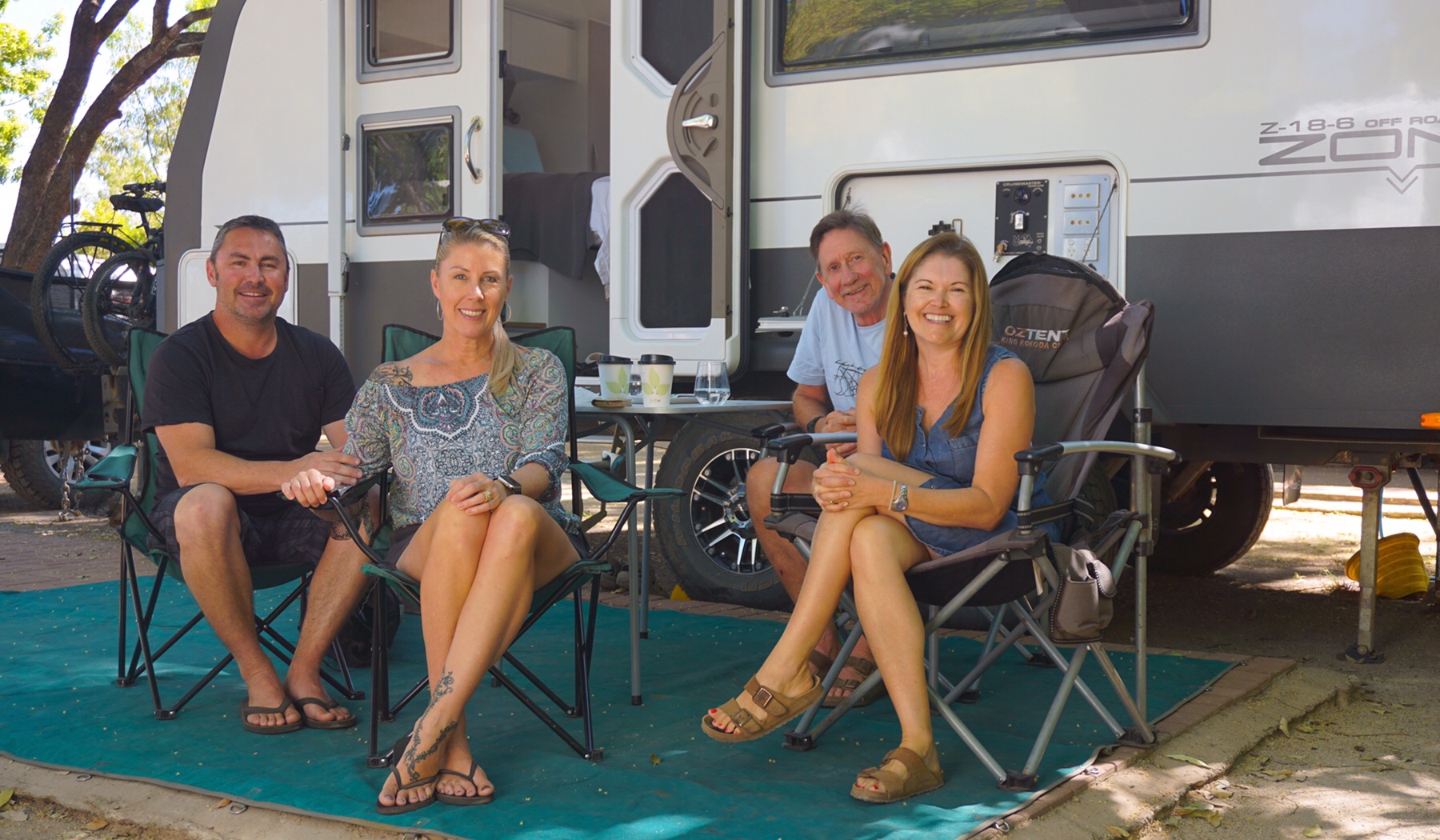 Before we knew it, three hours had passed, many stories and experiences shared and laughs had. Hopefully we will meet again on the road some day.
Before we knew it, three hours had passed, many stories and experiences shared and laughs had. Hopefully we will meet again on the road some day.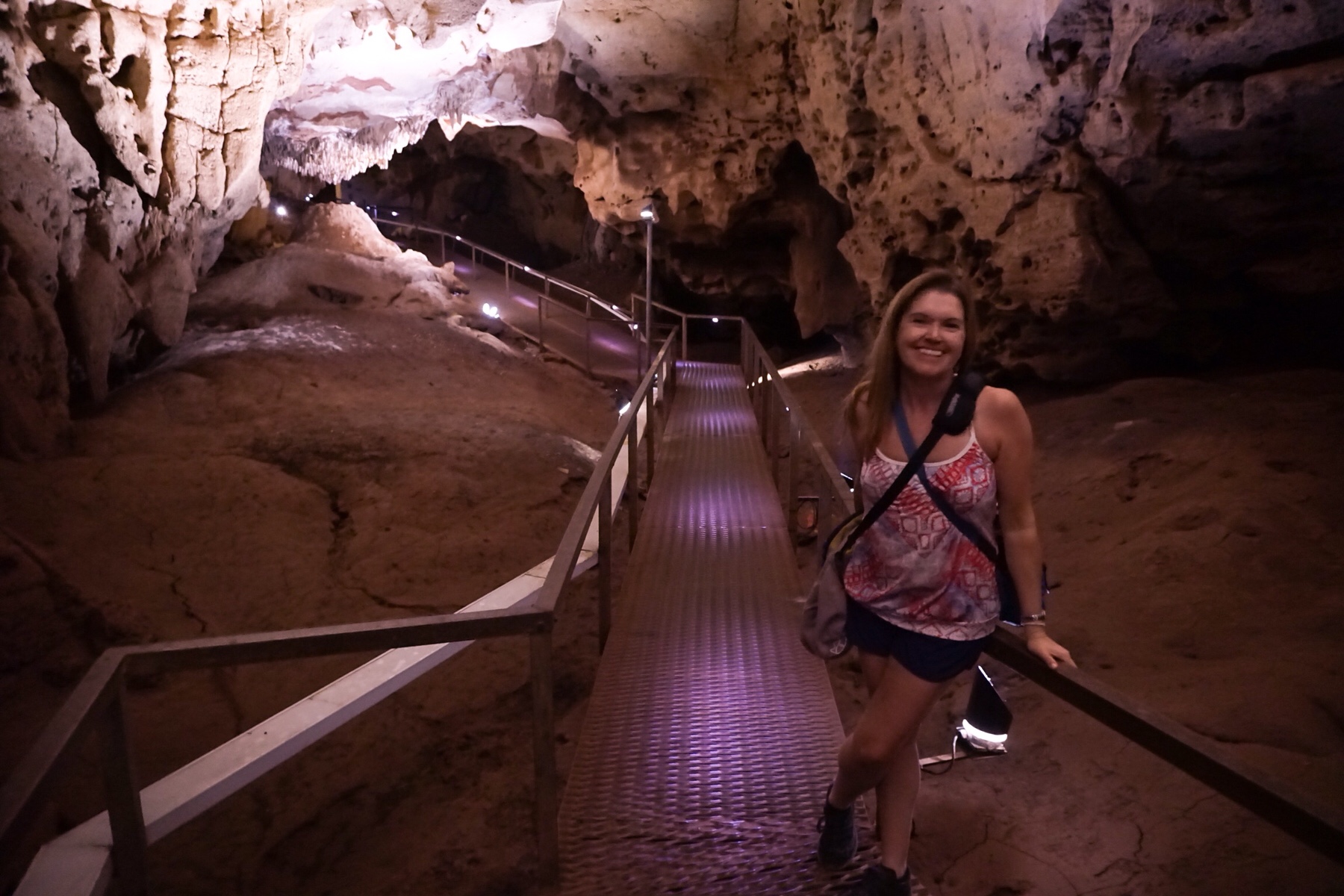 The caves have also been poorly cared for – in the early 1900s they were used for wild parties, and during World War II soldiers used the stalactites for target practice. With this preamble Mr A and I wondered what on earth we were here to see!
The caves have also been poorly cared for – in the early 1900s they were used for wild parties, and during World War II soldiers used the stalactites for target practice. With this preamble Mr A and I wondered what on earth we were here to see!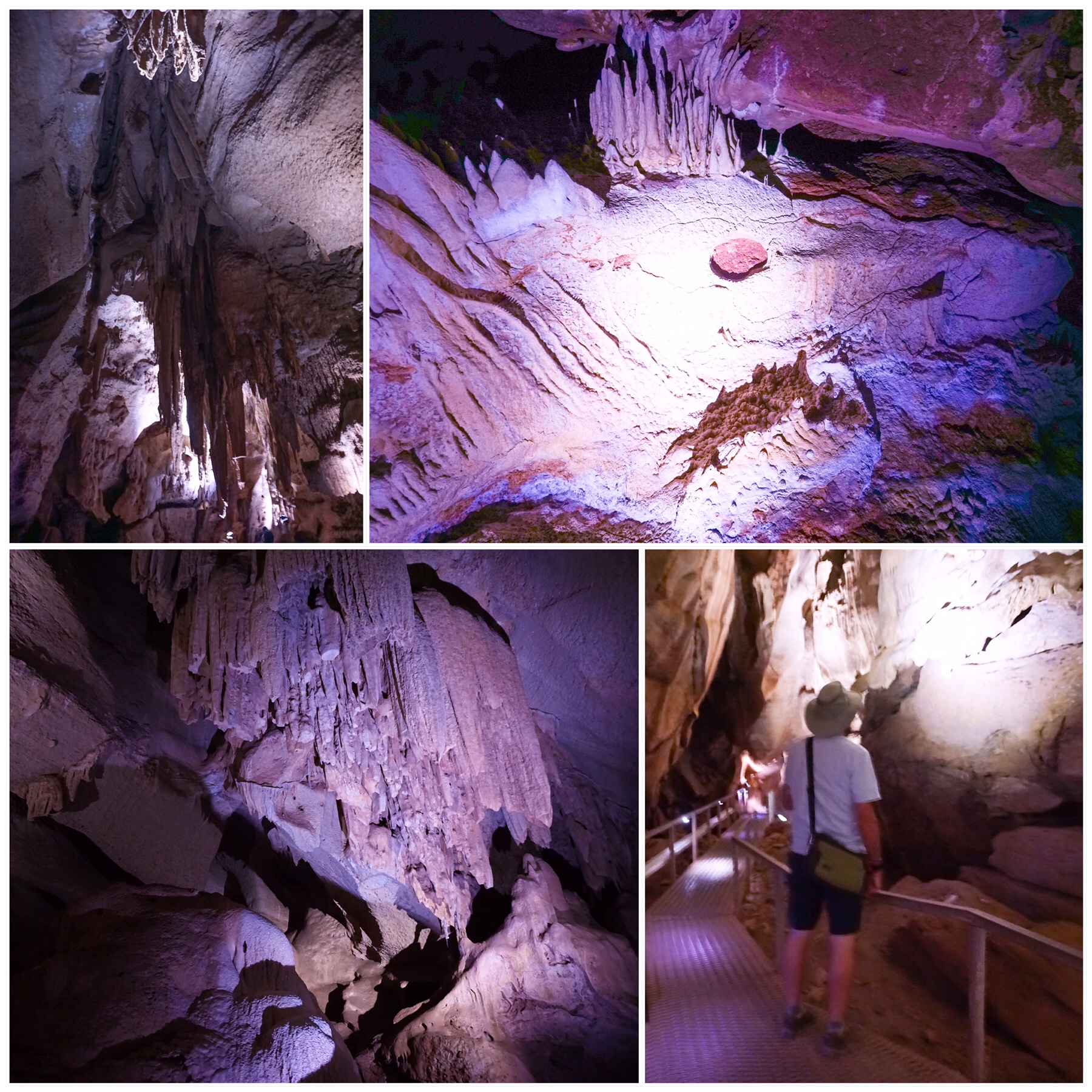 It was interesting to hear that the caves flood every wet season, and the water drains out through underground streams – ending up at the springs we swam in yesterday – funny how everything is linked!
It was interesting to hear that the caves flood every wet season, and the water drains out through underground streams – ending up at the springs we swam in yesterday – funny how everything is linked!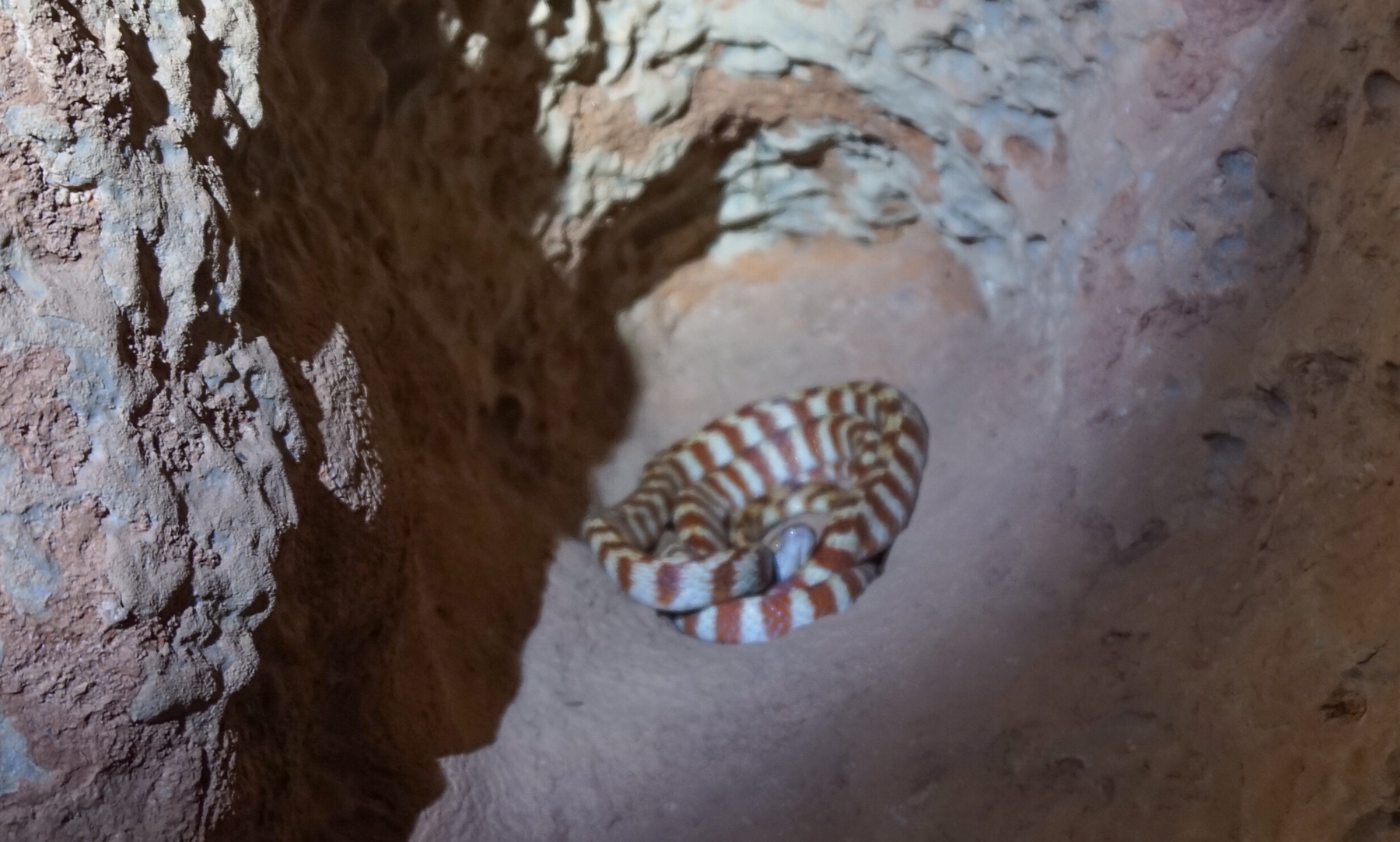 We finished our stay in Katherine with a night out at the local Chinese restaurant. There are in fact three Chinese restaurants in Katherine, but Regent Court Chinese is the one to visit. Fortunately we booked, as it was very busy, and great food.
We finished our stay in Katherine with a night out at the local Chinese restaurant. There are in fact three Chinese restaurants in Katherine, but Regent Court Chinese is the one to visit. Fortunately we booked, as it was very busy, and great food.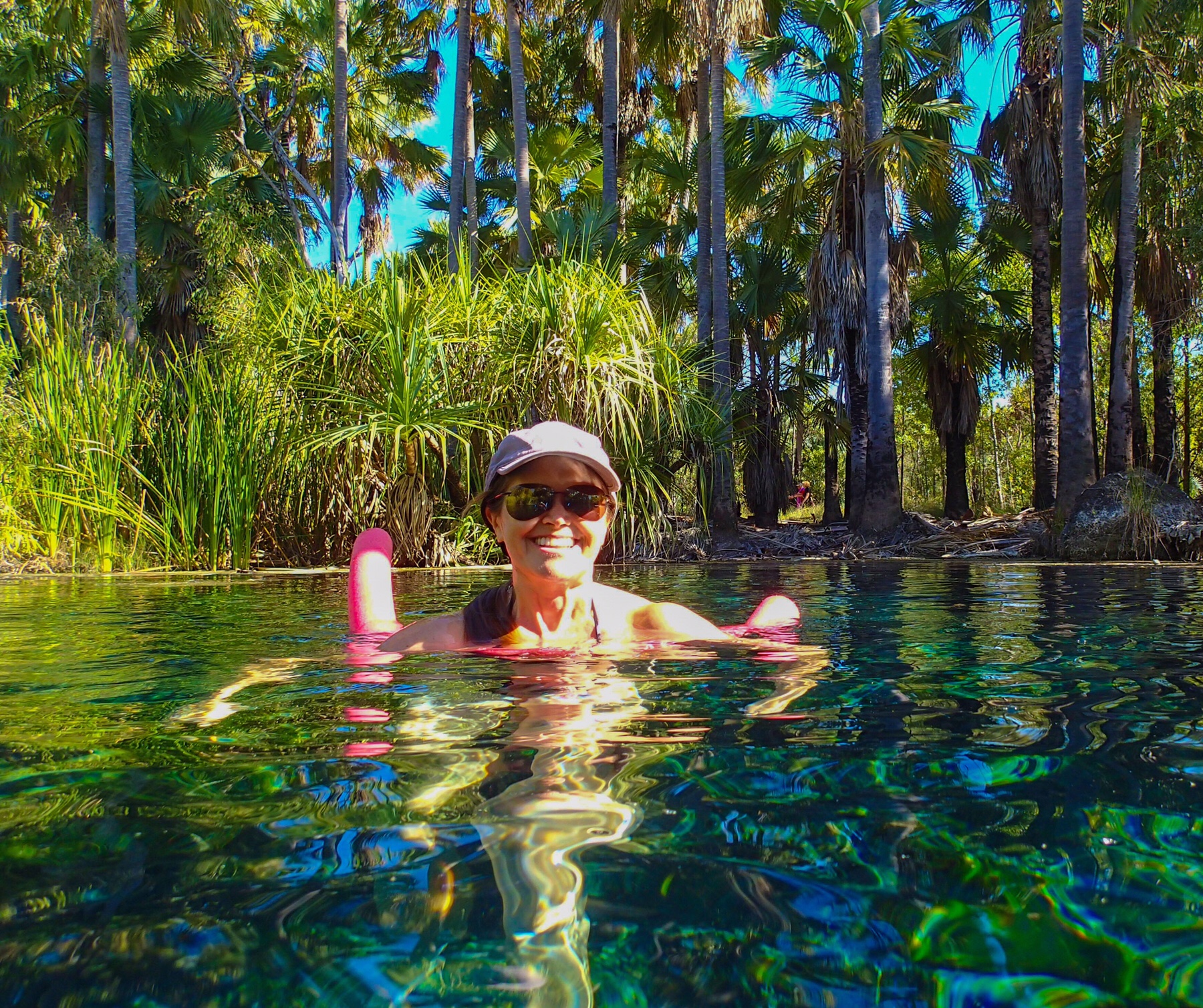
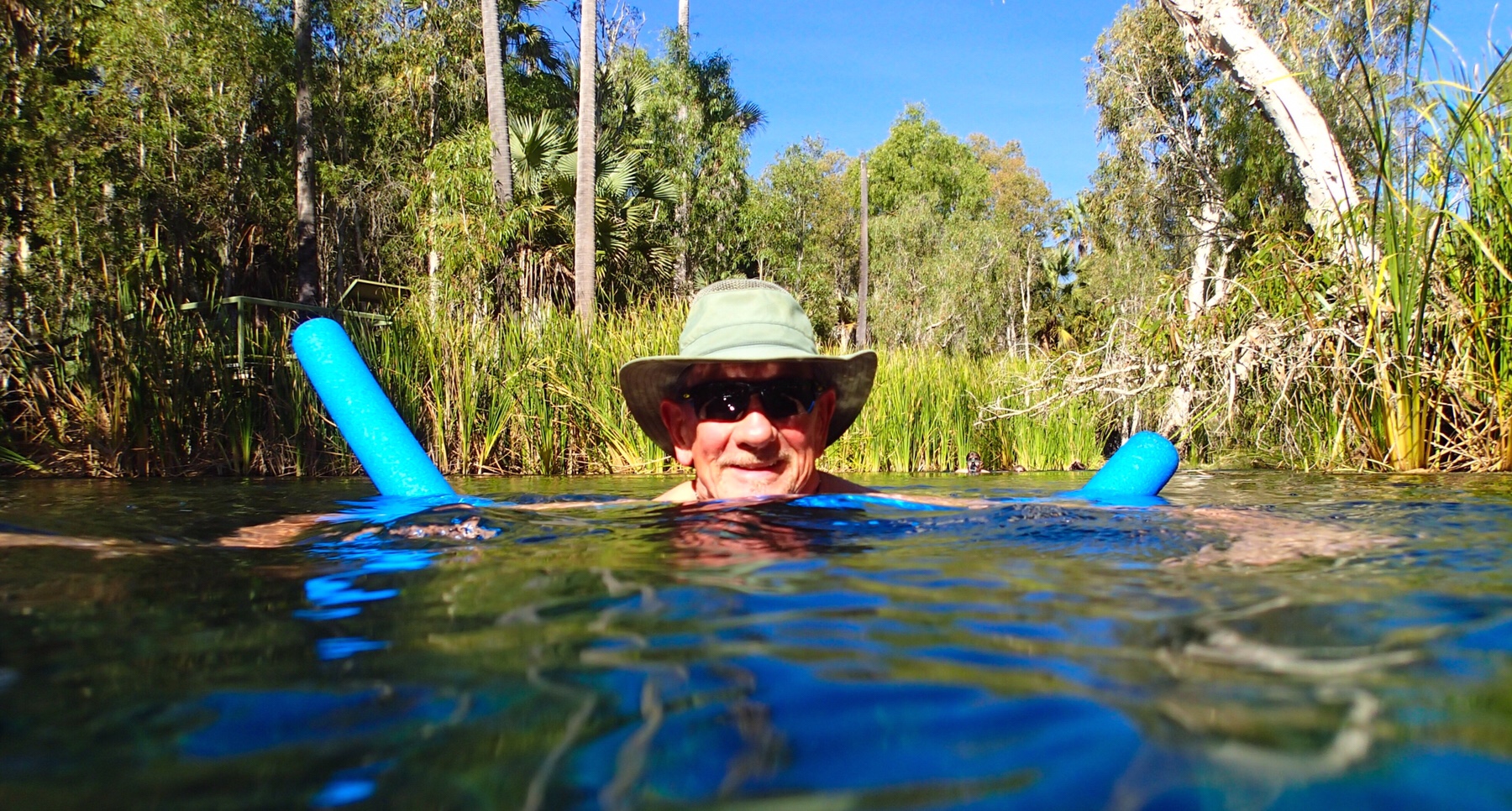 After all the heat and dust of the past few days, this was just what the doctor ordered. We swam up the warm river about 20 metres and were soon away from the crowds and had a lagoon all to ourselves. Just bliss. This has to be a stop over if you’re heading this way.
After all the heat and dust of the past few days, this was just what the doctor ordered. We swam up the warm river about 20 metres and were soon away from the crowds and had a lagoon all to ourselves. Just bliss. This has to be a stop over if you’re heading this way.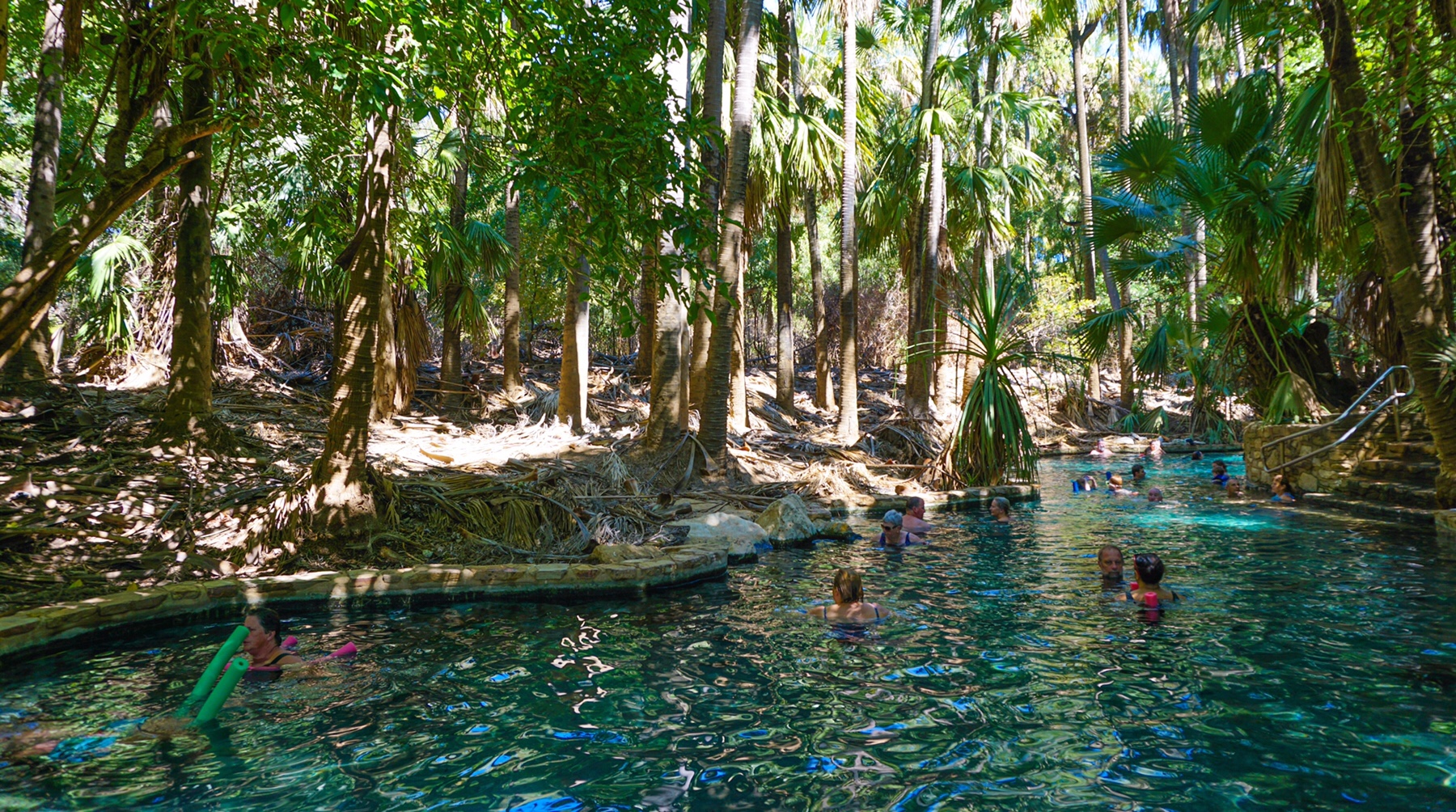 We did a short walk along the river before returning to Bitter Springs for a dip in the serenity.
We did a short walk along the river before returning to Bitter Springs for a dip in the serenity.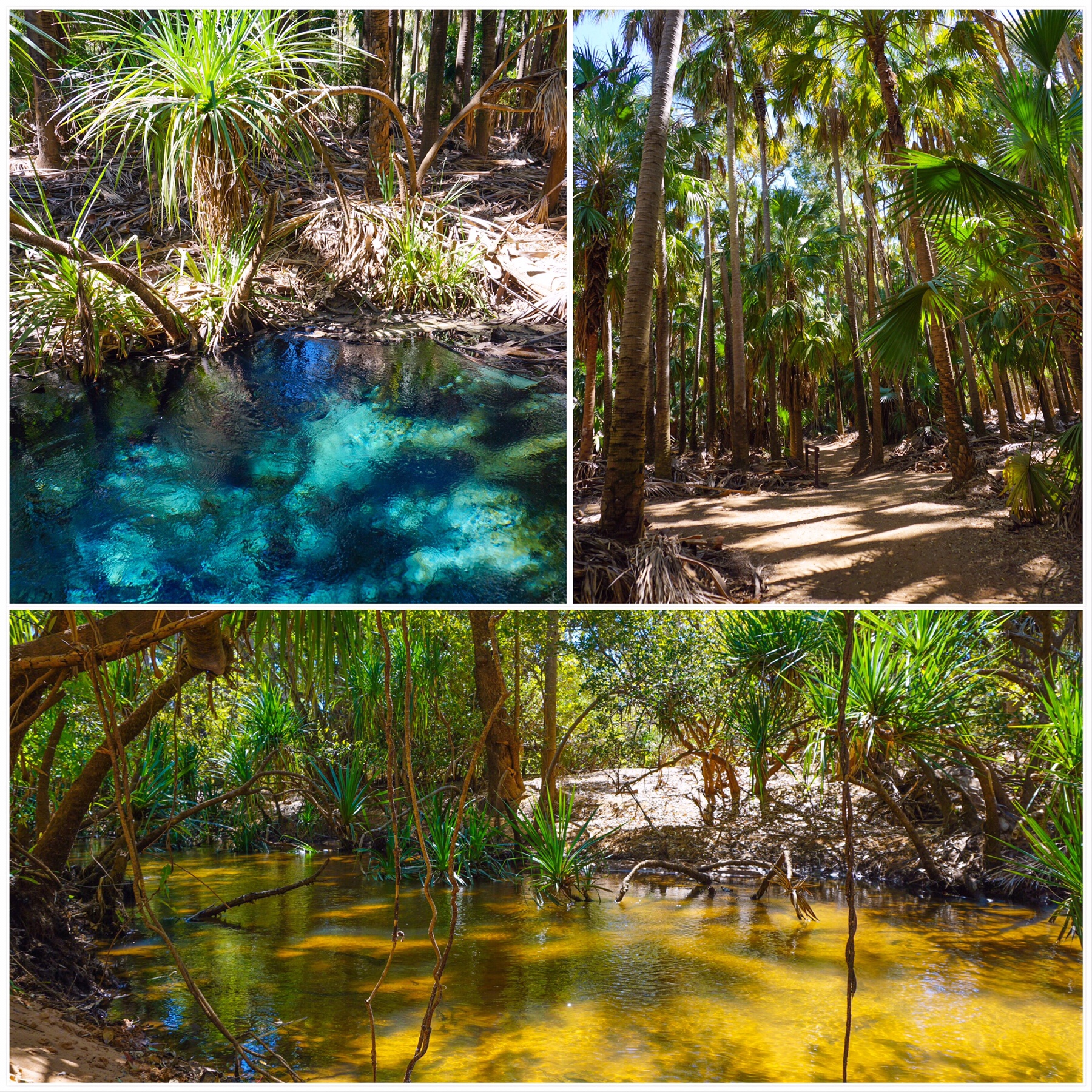
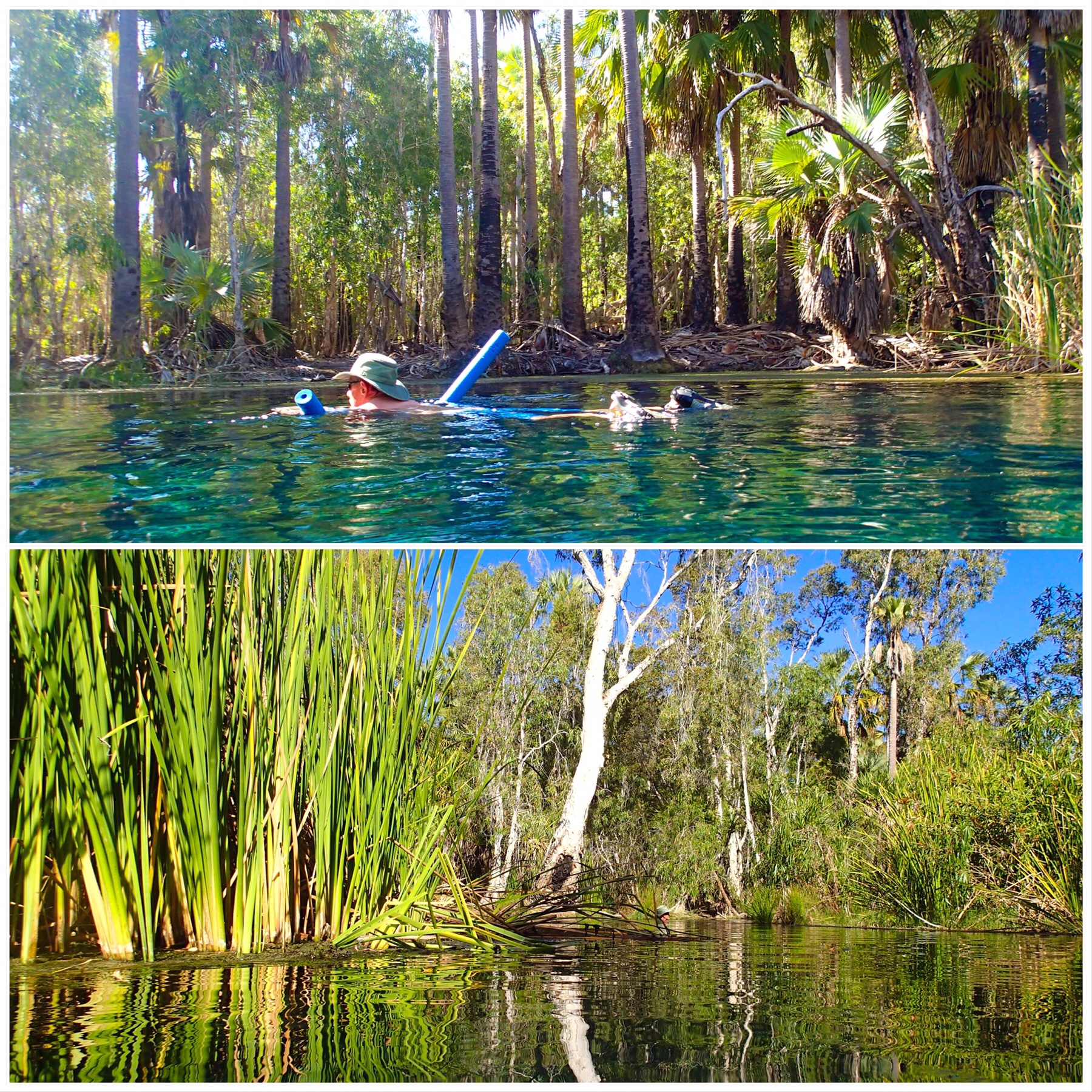 Top tips for visiting Bitter Springs (Stay at Bitter Springs Caravan and Camping):
Top tips for visiting Bitter Springs (Stay at Bitter Springs Caravan and Camping):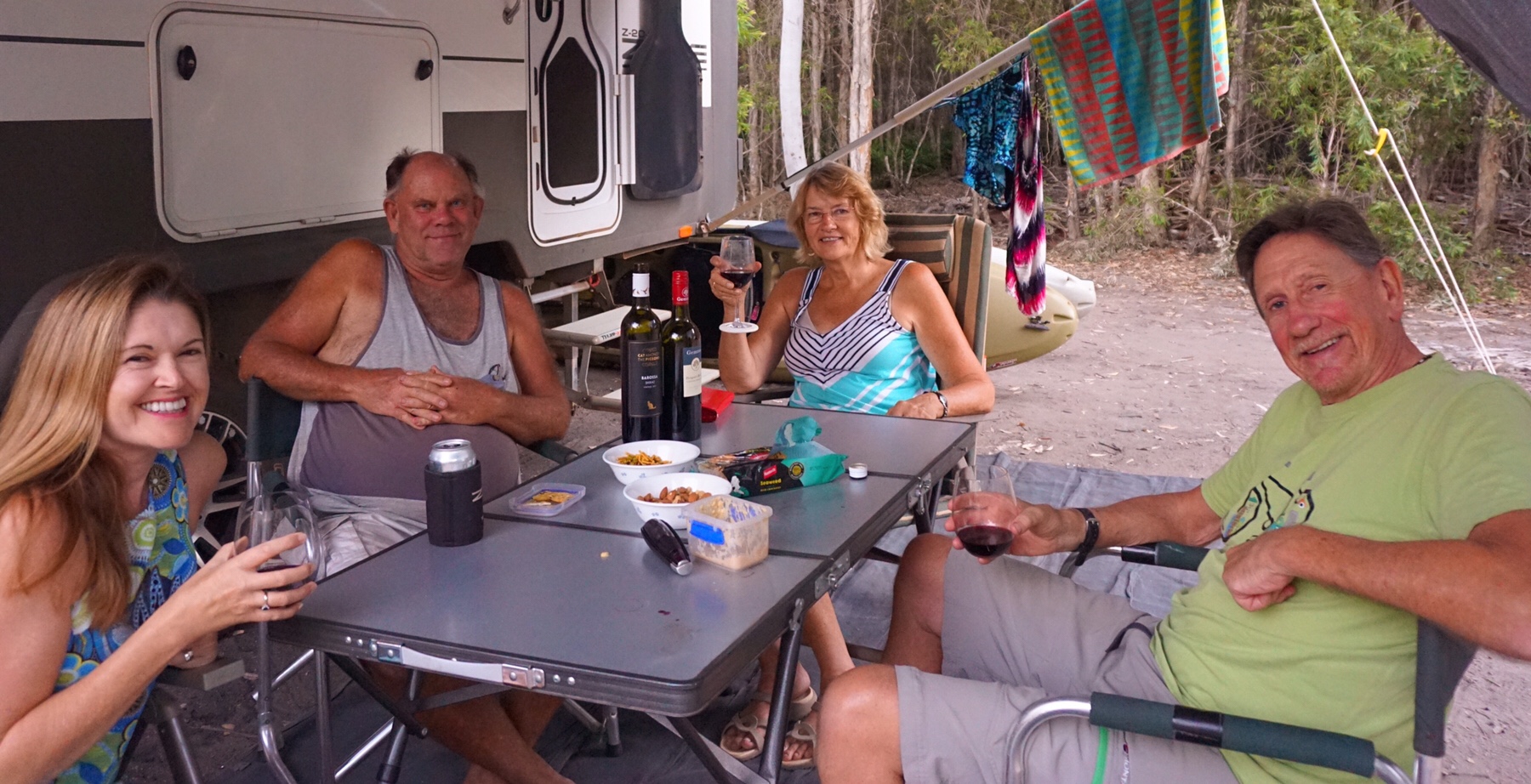
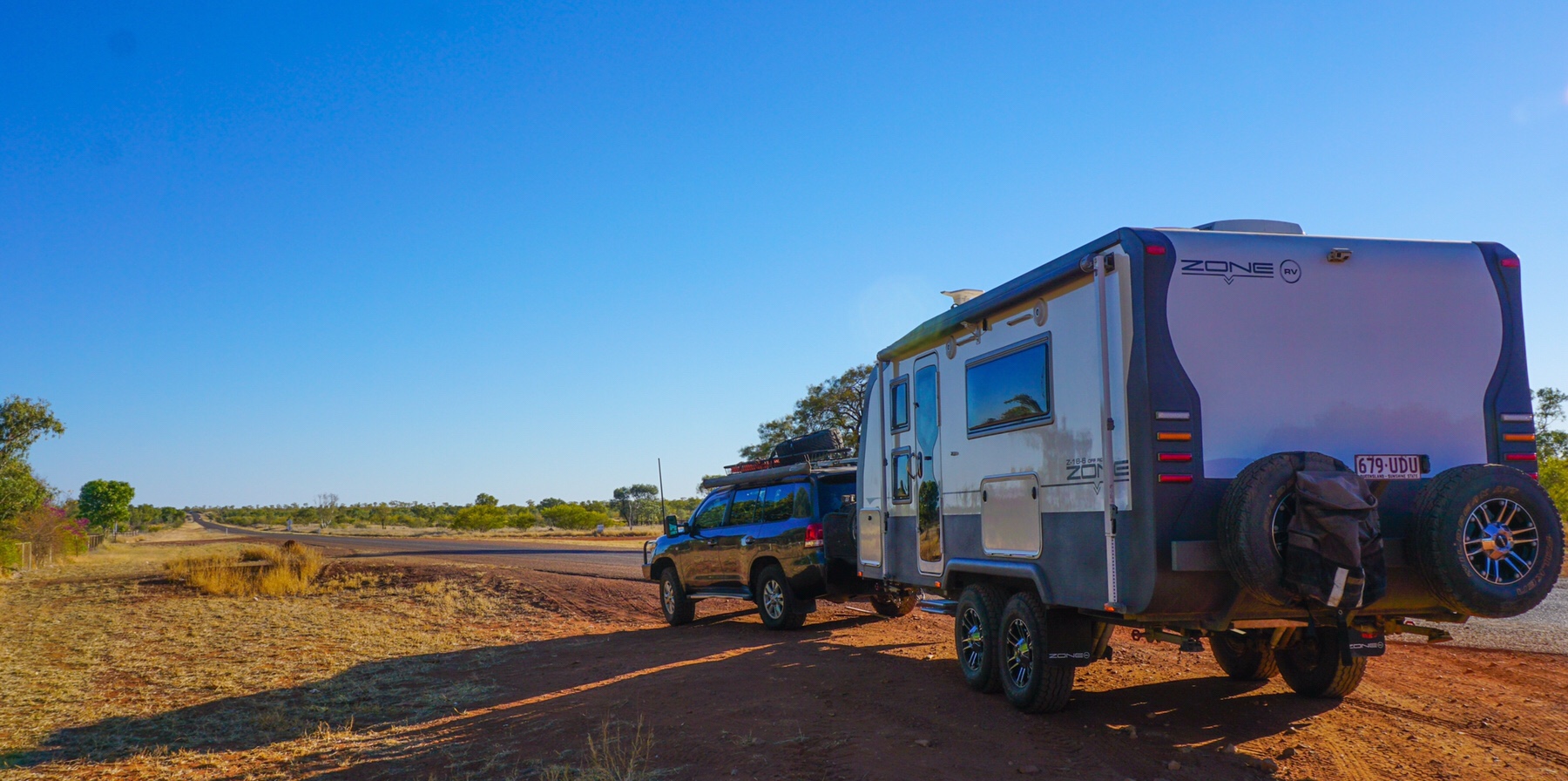 The flat dry landscape continued, broken only by the occasional herd of cattle ambling alongside the highway and flocks of black kites feeding on the night’s roadkill.
The flat dry landscape continued, broken only by the occasional herd of cattle ambling alongside the highway and flocks of black kites feeding on the night’s roadkill.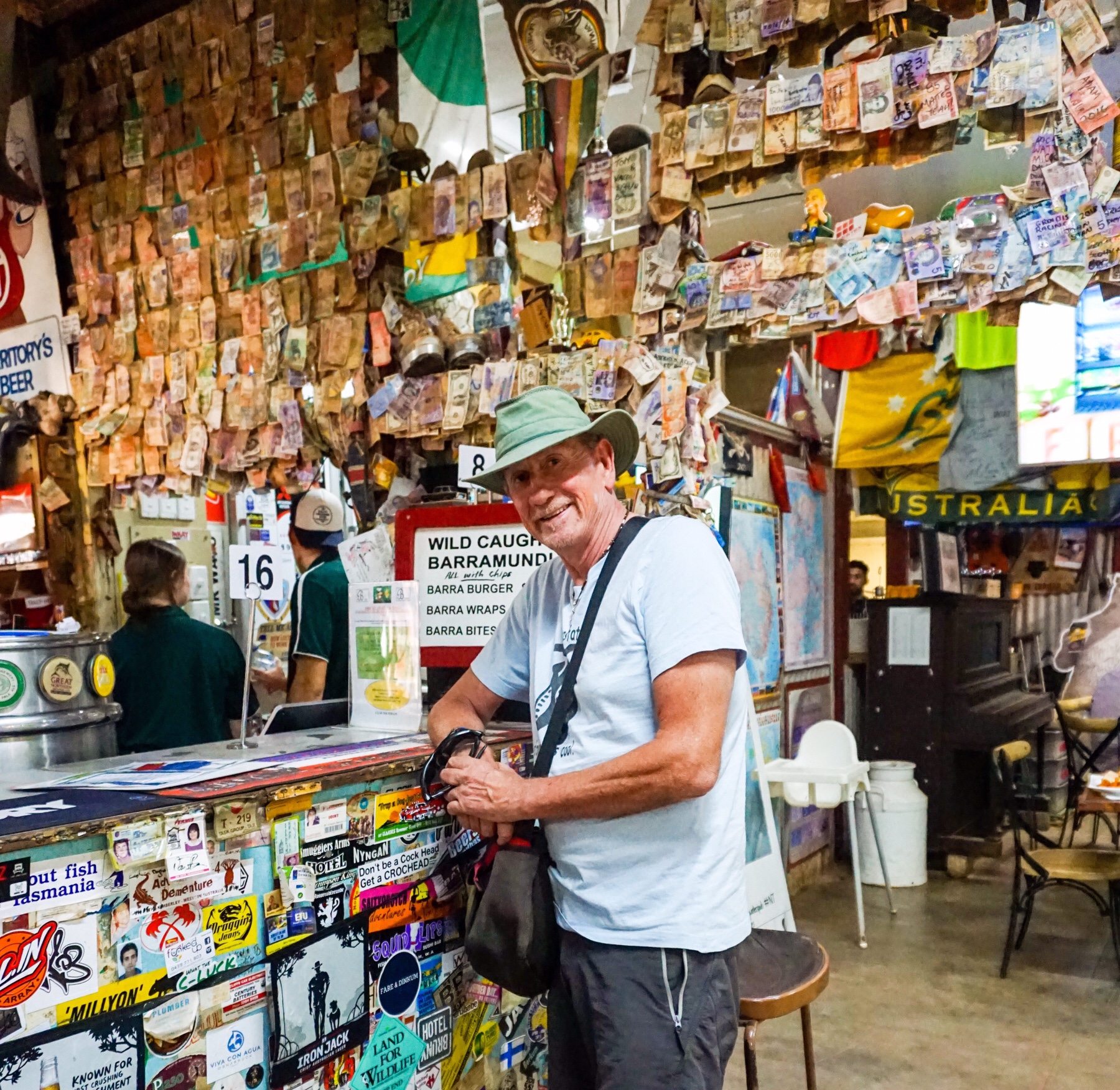
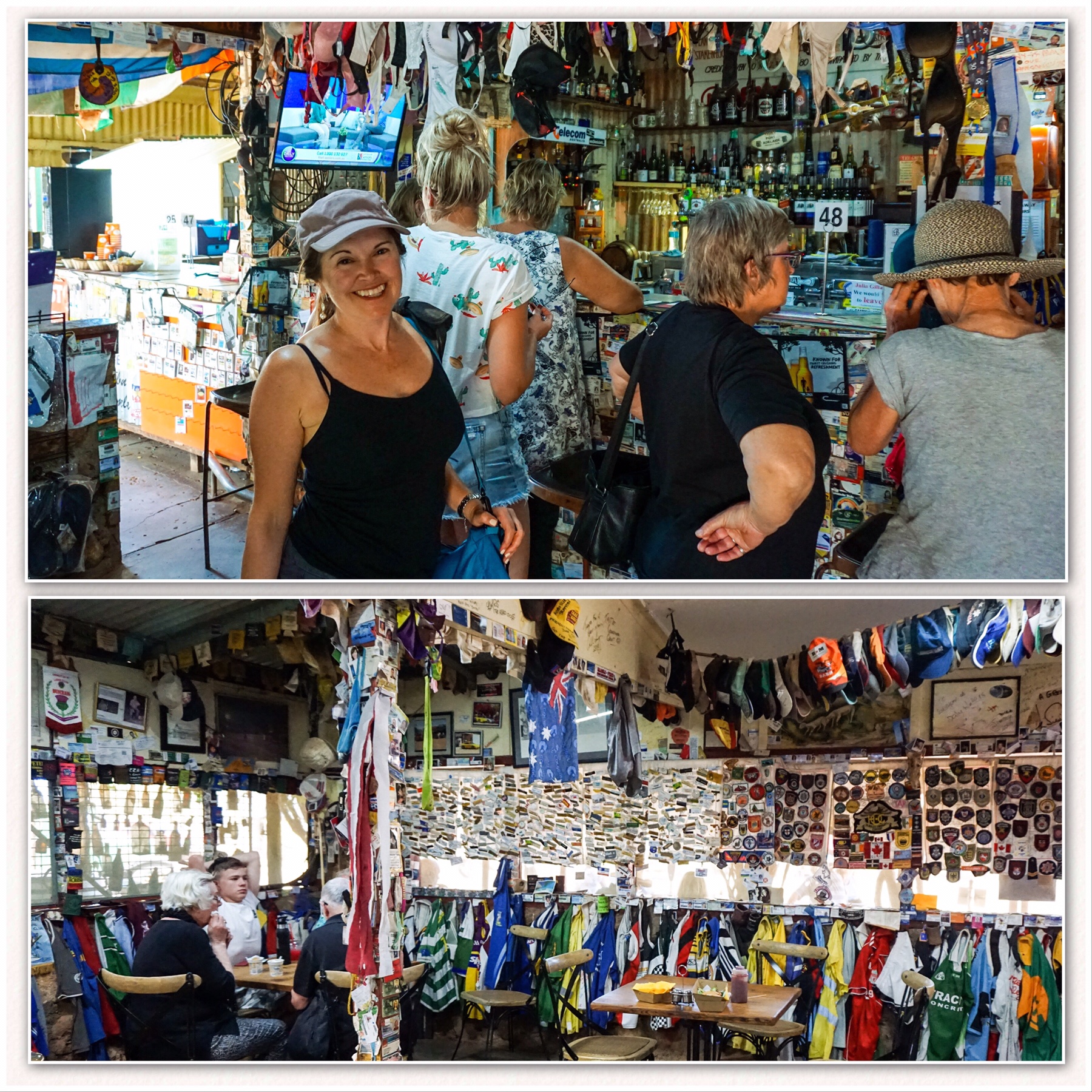 It has a lot of character, even if it is not a very authentic Australian outback bar. The staff are all backpackers, with wide reaching accents from Ireland to Slovakia and it has a good reputation for its food.
It has a lot of character, even if it is not a very authentic Australian outback bar. The staff are all backpackers, with wide reaching accents from Ireland to Slovakia and it has a good reputation for its food.